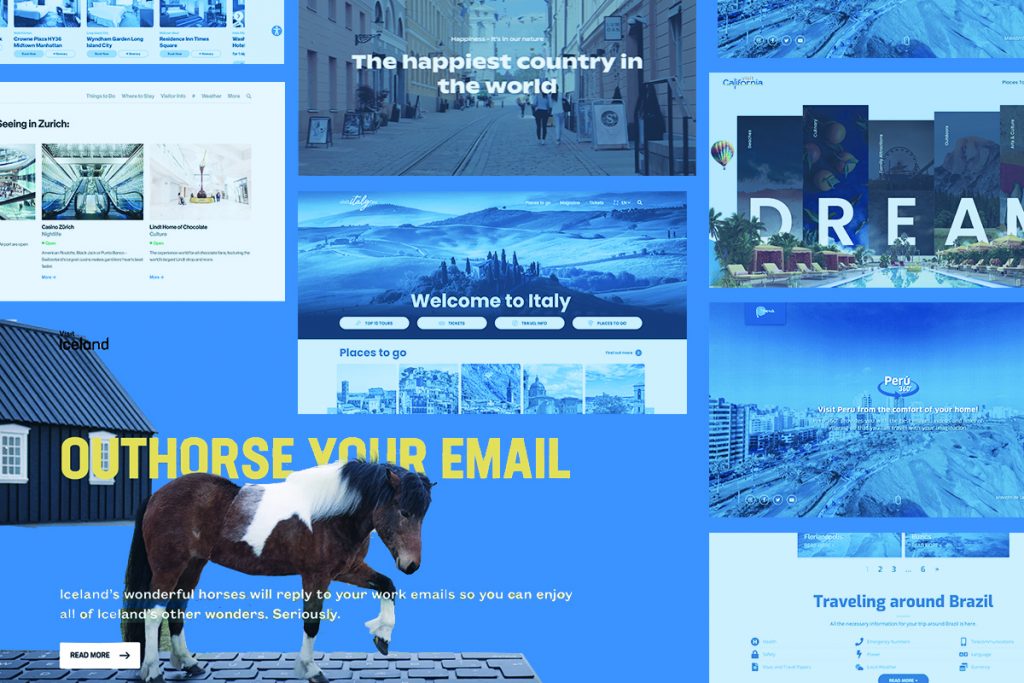

The 10 Best Designed Tourism Websites in the World 2022
Mary Ann Ha , Skift
June 15th, 2022 at 2:30 AM EDT
In a frantic attempt to avoid being left behind, official tourism organization websites are doing their best to catch up to the high expectations of the new traveler — tourists of the post-pandemic digital age.
Mary Ann Ha
Almost every tourist these days is making decisions about their travels based on what they see online. From themed trips to budgeted food tours, travelers crave previews of potential destinations and surf the internet to learn anything they can about a new and exciting spot.
Due to intense levels of pent-up travel demand followed by impulsive and impatient post-pandemic travelers, tourism website design is more important now than ever before. The competitive space for well-designed websites is more ambitious, and reliance on digital platforms as a dependable resource for travel inspiration is at an all-time high. Looking at the Gen Z traveler, it’s easy to notice that attention spans have shortened immensely, and tourists are treating trip planning like a shopping experience, picking and choosing elements of their vacations after engaging in a few seconds of appeal.
With that being said, tourism organizations are slowly learning that the old ways simply don’t work anymore — paragraphs of information on the screen, redirection that continues tab after tab, slow and clunky navigational experiences, depressing color palettes, and promotional descriptions of sites that don’t answer any of the truly important questions, especially for a more conscious traveler worried about climate change, and other threats.
After two years of rapidly-evolving digital growth, several websites have succeeded in breaking out of that dull and repetitive cycle. Here is Skift’s 2022 list of best designed tourism websites — ones that hit the spot both visually and navigationally, and are taking note of what the modern traveler wants, how they think, and most importantly, how they behave.
1. Visit Iceland
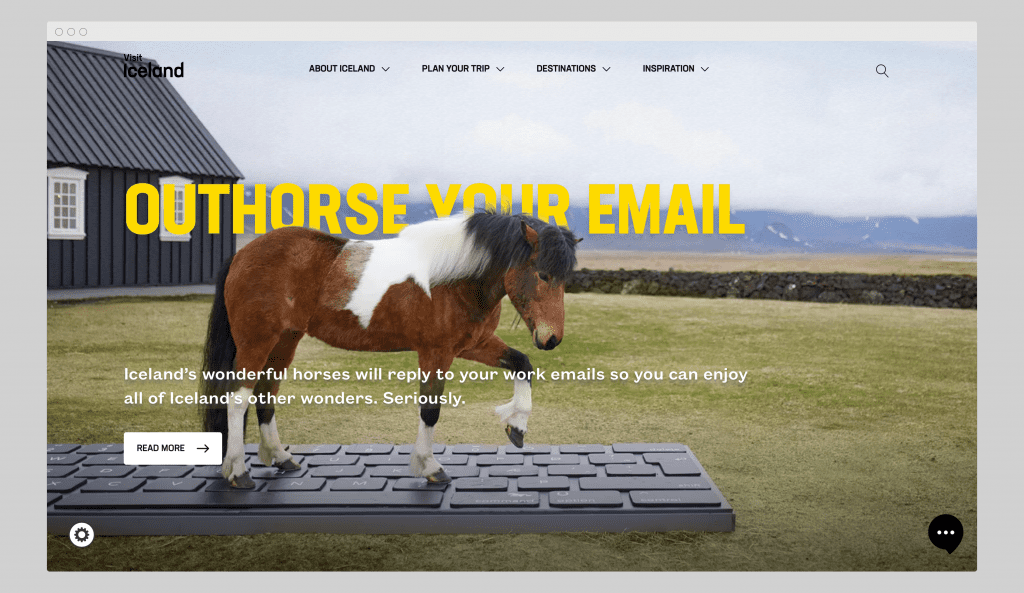
The clean-cut and minimalistic nature of Nordic graphic design works well to communicate visual appeal, send concise messages with clarity (or humor), and entice further curiosity with minimal effort, especially in the website world. Visit Iceland leads our list with a transitional homepage display, decorated with background images that hover along the page as they overlap and interact with the text on the screen, making the website feel inviting and alive.
As users scroll further down, the website displays excellent examples of utilizing the organized nature of drop-down menus and vertically moving lists. With a clean white background and bold capitalized black font, readers are able to quickly catch sight of what they want to read, without feeling overwhelmed by options. Blog articles of potential itineraries and Iceland travel tips are also organized in a format reminiscent of Youtube, integrated with carousel elements that are easy to view via mobile phone.
Accessibility to greener travel options within the website is always a plus — Visit Iceland has an entire page dedicated to helping travelers join in on Iceland’s commitment to preserving their nature, including a list of environmentally certified businesses, a carbon footprint calculator, and an easy-to-follow list of tips for sustainable travel in Iceland.
2. Visit California
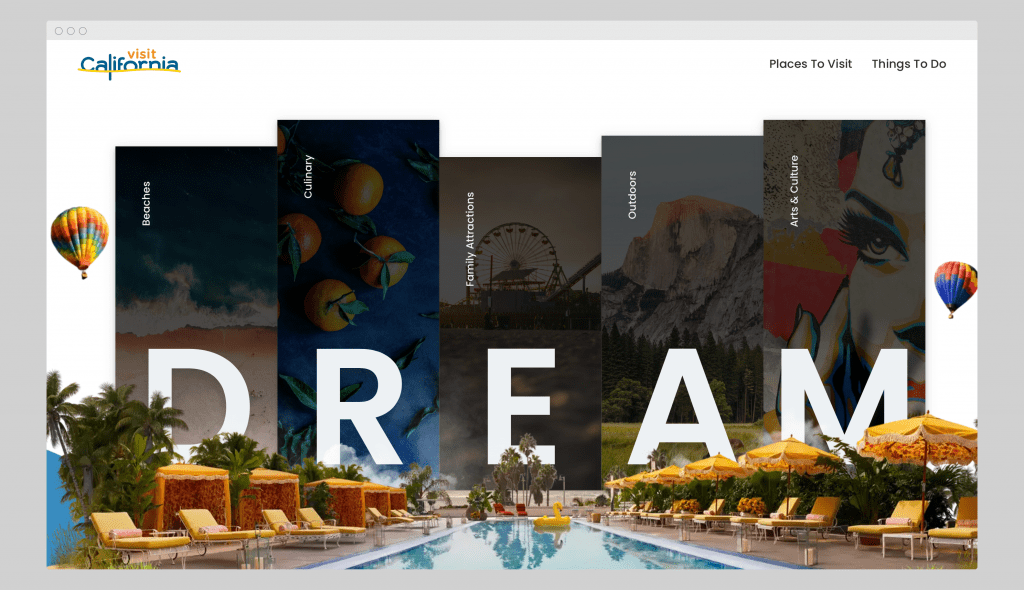
While the homepage might look typical at first glance, Visit California’s “Experience California” layout is one of the best designs we’ve seen in the tourism website game. Swipe left as soon as you get onto the landing page (a surprising, but not too complicated way to navigate the site, which keeps visitors engaged), and users are immediately whisked into a three-dimensional space to explore what the state of California has to offer to their tourists.
To the new millennial and Gen Z traveler, design and aesthetic can be just as or more important as destination information and travel guidance. Interactive visuals and bold colors speak to the character of California as a vacation spot, filled with globally cultural experiences and advanced businesses in design and technology — adding to the visitor’s impression of what a trip to California could be like.
As the home of Los Angeles and the land of influencers, Visit California also fully embraces the use of User-Generated Content as a promotional tool, and displays this in an easy-to-digest format.
3. Z ürich Tourism
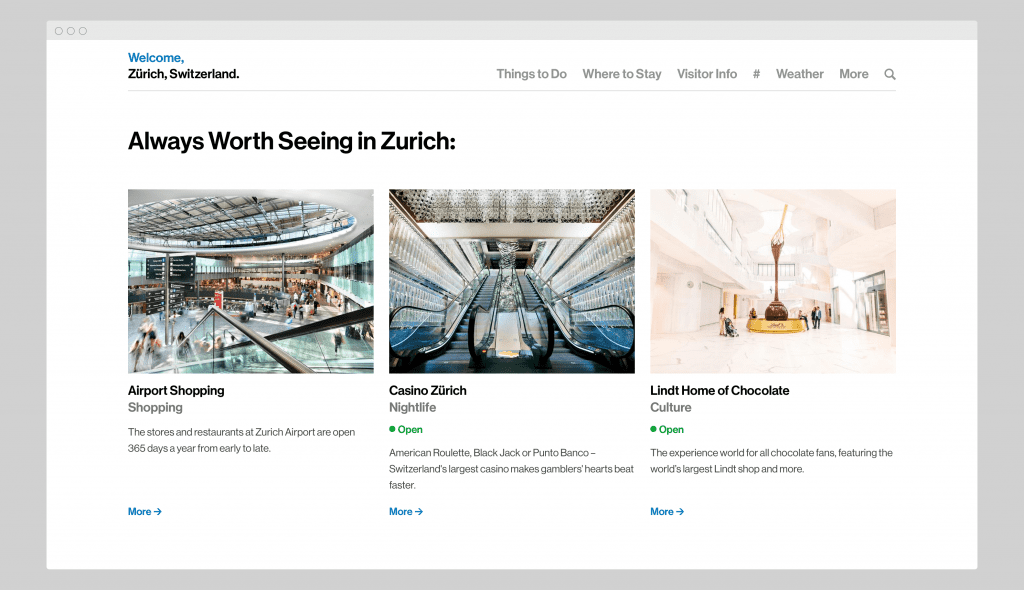
Speaking of Nordic graphic design and user-generated content, the official website for the city of Zurich is another example of the excellent use of white space. Dedication to sans serif typography, a two-to-three cool tone color palette, and an extremely simplistic, clean layout keeps visitors from feeling overwhelmed and allows for a breathing space to go through all the activities offered on the website.
Beneath several of the suggested activities, restaurants, and bars, the Zurich website also labels whether the business is open or the service is being offered in real time, a unique feature that can be extremely helpful for travelers who are looking for last minute places to enjoy or spontaneously plan a day trip.
Their user-generated content page is a delightfully neat design, with the page tab linked as a single hashtag in the top menu. The entire page acts as a unified social media feed, making all their social media coverage on Facebook, Twitter, and Instagram visually accessible in one view.
3. Visit Brazil
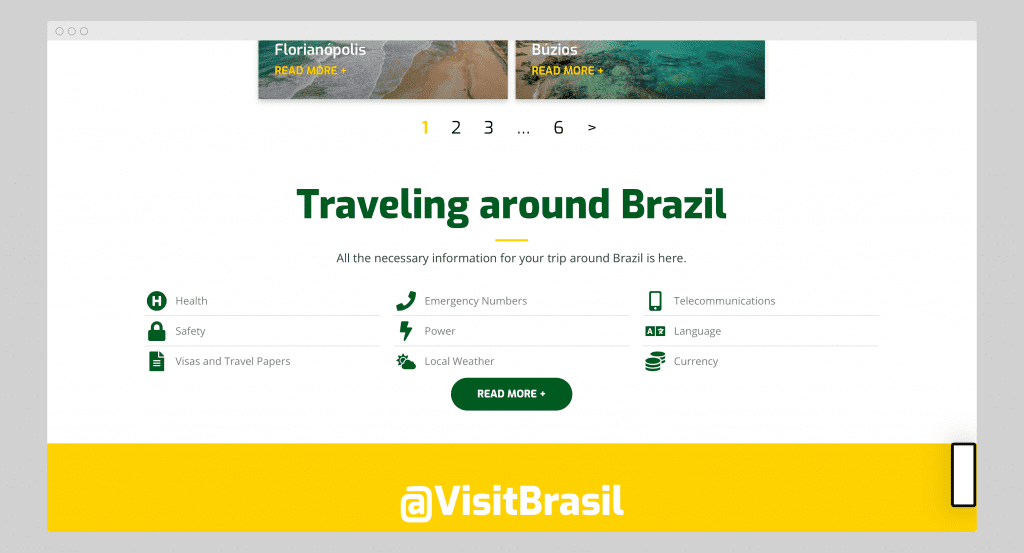
Visit Brazil has all information and links available on their homepage, split into four sections: Experiences, Destinations, Regions, and Travel Information.
Aesthetically, a framework of yellow is filled with a line-up of action-packed visuals, picture and video, and a section dedicated to Instagram content. They know their visitors, and they recognize that in-your-face video content appeals to those who are looking for some sort of adventure. The video that takes up the entire homepage display keeps visitors engaged at initial glance, and while the website prioritizes promoting their adventurous activities, they balance “fun” with “necessity” and make sure to give easy access to the safety information travelers will need to know when coming to Brazil.
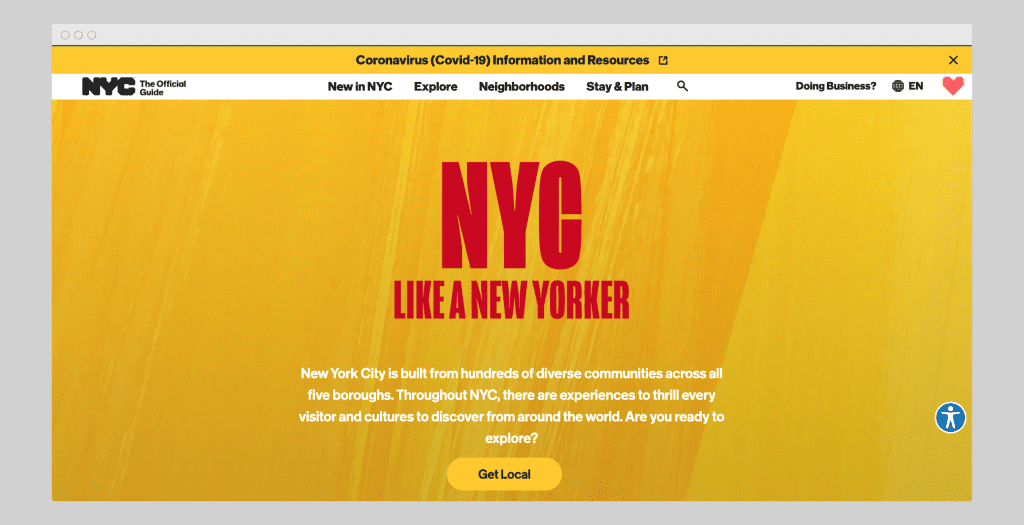
We all know New York City could be its own state, with experience offerings that are equivalent to those of a country.
Set up like a booking site, the NYCgo’s most impressive elements include the UX framework that is deeply familiar to the modern traveler — searching for hotels or accommodations via a search engine reminiscent to short-term rental or airline sites, being able to “like” and save posts or articles for later referral, and of course, a function that offers filtered options to find activities and locations catered to the visitor’s personal preference.
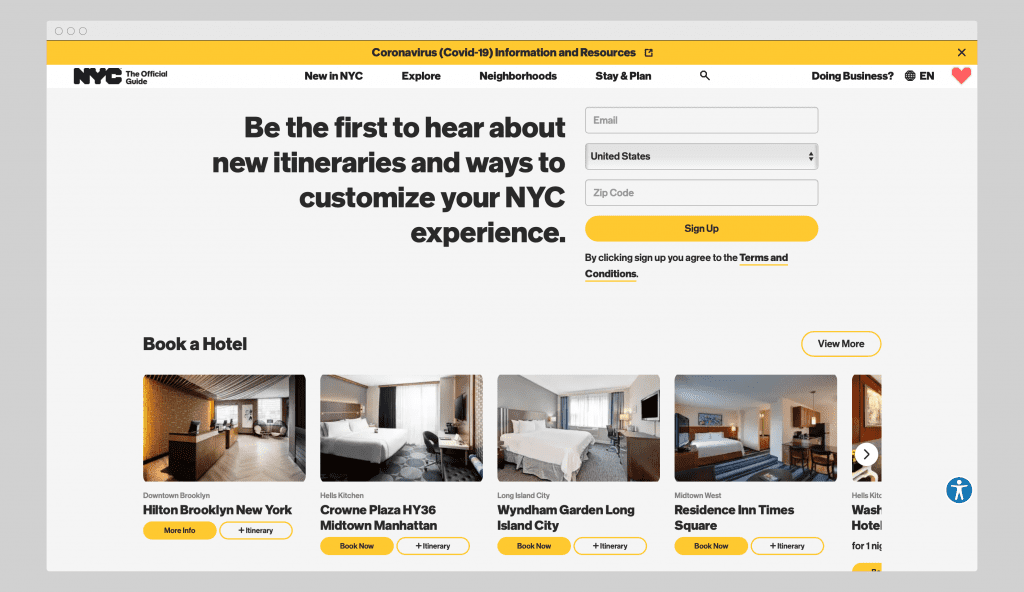
The bold, graffiti-like font that covers the homepage and is used throughout the website is simple, which is a necessary move considering how much text is on the front page. It’s also a great aesthetic choice, a subtle way of speaking to the headlines that cover billboards in NYC. While the website offers slews of information on the homepage, the way it is formatted and presented to the user keeps the aesthetic uncluttered and down-to-earth.
6. Visit Finland
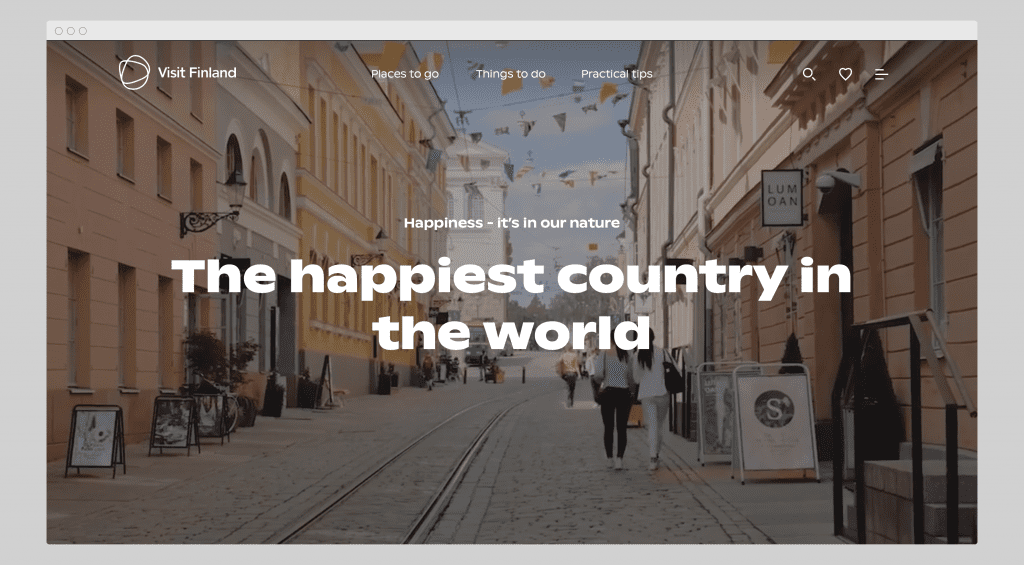
From the logo, to overall design, to choice of font, Visit Finland’s website displays similarities to another extremely popular rental booking site, but when it comes to approachability and visual appeal, borrowing those design elements works in their favor.
The website is a smooth, transparent, and, of course, familiar experience — one that is both modular and linear, showing dedication to navigational simplicity. The design does not shy away from white space and minimalism much like its Nordic counterparts also on this list. Complete use of full-screen photos and stunning imagery is a highlight, as well as the level of scroll-responsive interactivity visitors experience as they explore the site.
This website also displays various Finnish activities and locations through the save/heart feature, referencing a user experience often seen in online shopping or Pinterest mood boards. The layout feels particularly responsive to the nature of the Gen Zers who spend all their time on social media “saving” posts and ideas.
7. Visit Australia
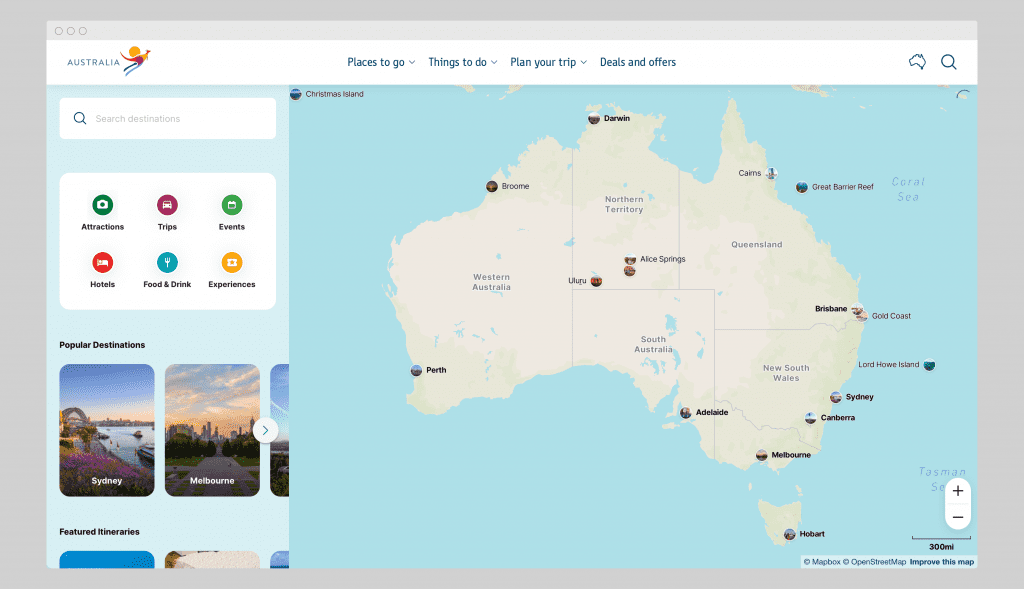
Like we’ve seen on other websites on the list, the Visit Australia website is hugely loyal to the tile format, which could feel silly if overused, but because the tiles are lined up and sectioned in a cohesive manner, visitors will find it extremely easy to find options for each and every aspect of destination planning. The homepage is lined with left-right carousels of vertical images, appealing to younger generations and optimized for mobile formats.
Drop down menus are also a highlight for this website design. Instead of cluttering the frame with an overwhelming amount of text, the tile format keeps the menu options visually engaging for the user. Integration of beautiful imagery within every step of the user experience shows great dedication towards marketing the destination, which is, ultimately the main purpose of a tourism organization.
The Visit Australia website offers everything, from itineraries and cultural or geographical activity guides to budgeting and accommodation deals. Recognizing that budget is an important factor for many travelers is also a major plus for any tourism website, as it keeps website visitors within the website instead of browsing other platforms for “best or most affordable deals”.
Perhaps the highlight of the site is Explore Australia in 8D, an interactive exploratory experience that allows visitors to move through a map of the entire mainland of Australia, including a few islands surrounding the area, and see what each region has to offer, from attractions to lodging and food.
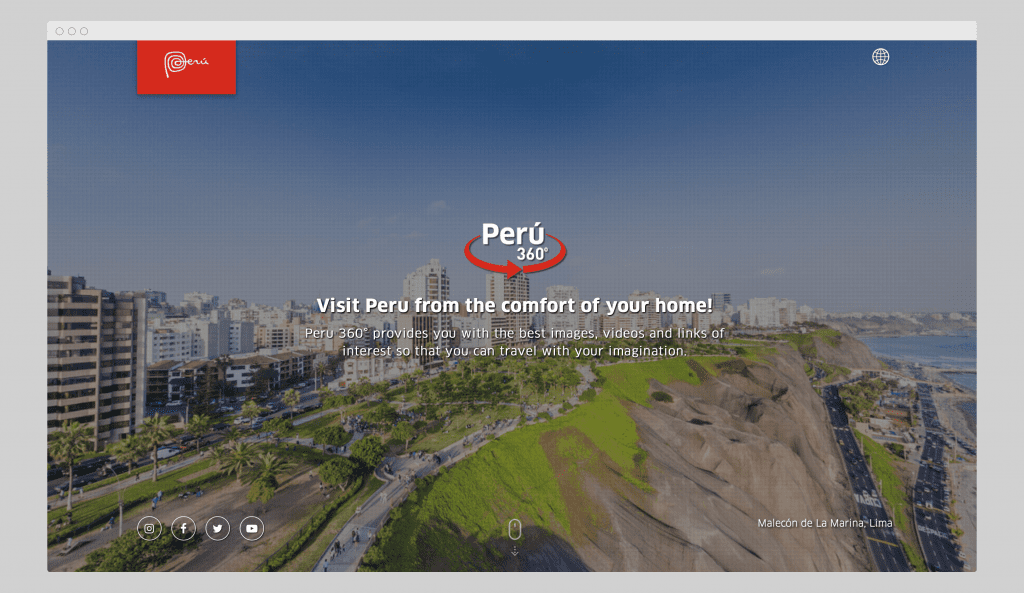
As much as Peru is receiving growing interest as a travel destination in recent years, the country also seems to be extremely conscious about communicating COVID safety measures and restrictions to potential tourists. The immediate landing page of the tourism website gives visitors easy access to ways to prepare and plan for a trip to Peru from home, beginning with multiple avenues to check and double check updated Covid protocols. Showing this level of diligence to Covid measures not only communicates the fact that Peru takes safety protocols seriously, but also allows for international travelers to cross ‘testing or vaccination requirements’, still a major concern at this time, off their list of potential worries.
The team at Peru Travel also takes advantage of the numerous recognitions, media coverage, and awards that Peru receives as a tourism destination, and pushes that at the forefront of their website design.
The most exciting part of the website is perhaps the VR page, called Peru 360, where one can “visit” various sites throughout Peru in a virtual reality. While this is a method that has grown in popularity amongst a lot of brands during the pandemic, very few official tourism websites have been successful in offering a well-established experience that feels interactive beyond typical images or videos.
9. Visit Italy
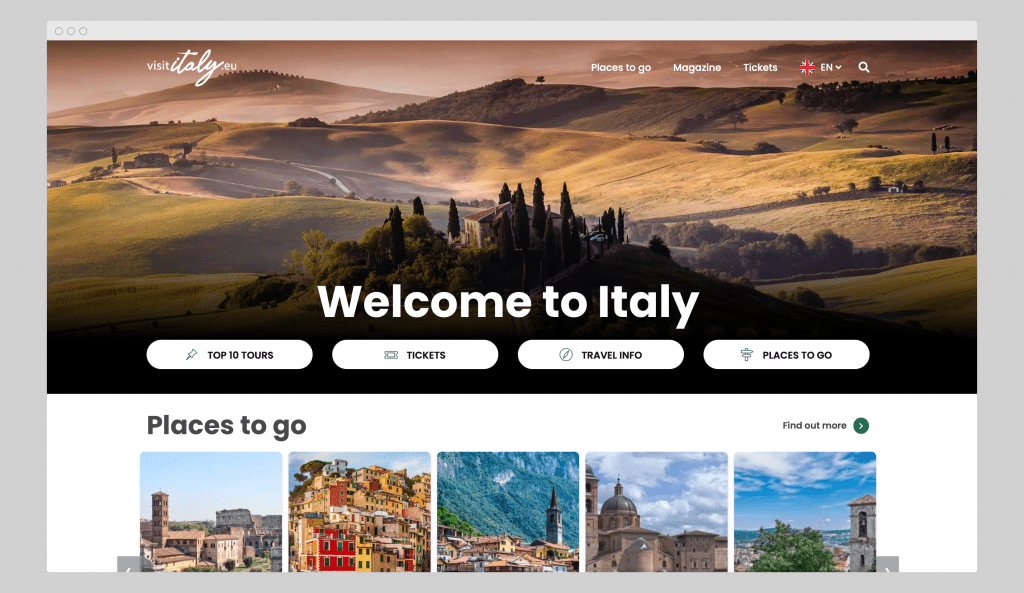
Italy has long-been a tourist-heavy destination, and the team at Visit Italy knows it. At the forefront of their website are easy ways to search, budget, and book the top tourist attractions through the best deals. Viewers barely need to scroll down the homepage before getting immediate access to the Ticket Carousel, with exact prices listed by attraction or location.
Visit Italy’s website isn’t the most ambitious platform design-wise, but it prioritizes digestible formats, such as buttons for each step in planning or tiled carousels, and feels easy-to-navigate overall, especially considering all the information on their homepage.
It’s clear that the website knows what their visitors need — to beat lines, to get the best prices, and to make the most of their time in one of the most famous cities in the world that Italy has to offer. The site is ideal for the tourist who needs to prioritize planning and booking over aesthetic photo inspirations. The website also acts as a search engine of sorts, and does not shy away from redirecting their visitors to other booking sites or options in order to make the best decisions.
10. Visit Greenland
Visit Greenland’s website also sets up like a familiar search engine site (a trend we are observing across most of the designs on this list) but serves mostly for travel inspiration and local informational purposes. The layout of the website is simple and loyal to the use of white space, which allows for their unique graphic design elements to shine through in this particular design.
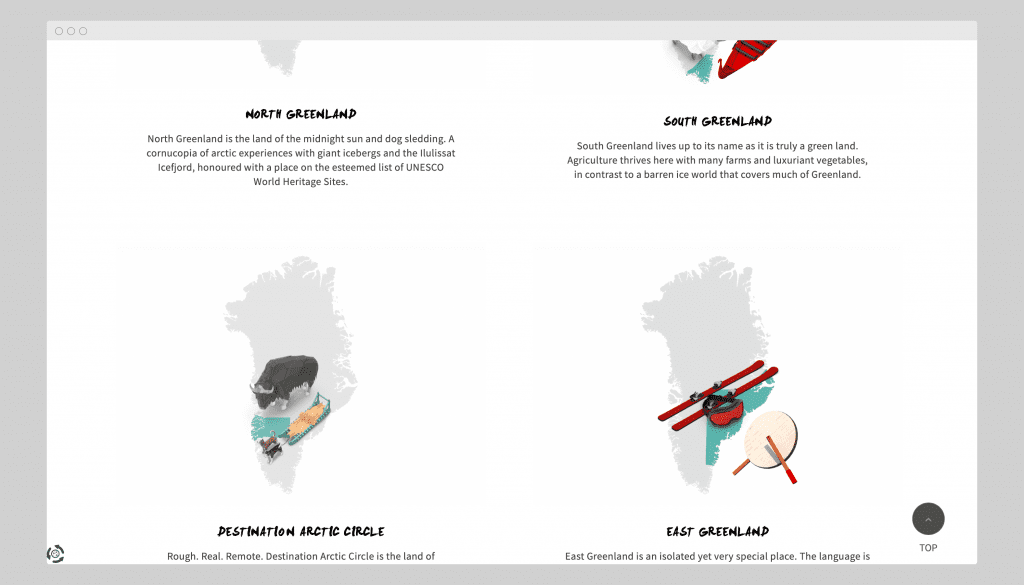
Not only are the three-dimensional illustrations beautiful, but they are also interactive, acting as links to the respective relative pages.
Aside from engaging geographic and cultural graphics, the website also lines up options of various package tours that lead to external provider links, who are more well-versed in helping potential visitors move forward in their planning and exploration process. Because Greenland is a nature-heavy travel destination, the website focuses on displaying a variety of outdoor activities — based on personal interests or geographical location — in order to prevent travelers from feeling deprived of diverse activities.
_________________________________________________________________________________________
Innovative methods in the digital world are getting increasing ambitious day by day and website designs are trying to be as responsive as possible, as to make sure they maintain their presence in the travel planning space.
In addition to the websites on our list, several other tourism organizations are diving into unique measures to gain attention from the ever-so-hungry tourist of the post-pandemic travel world. Interactive games, like Cape Town’s Virtual Game Tourism Campaign , are one of the few ways these organizations hope to attract younger audiences and give a virtual taste of their destination to potential travelers. The Machu Pichu 360 website invites visitors to enter the world of VR and includes auditory stimulants, a step up from the Peru 360 page in our list, that engages both eyes and ears to fill the void travelers have all been experiencing during Covid.
With the competitive space for tourism websites expanding at an increasing speed and mobile apps taking the spotlight from website platforms , tourism organizations and designers will most likely continue to borrow elements of the newly digital world to keep their platforms running.
Tags: climate change , design , digital , Digital Marketing , generation z , online booking , online travel , pandemic , tourism , tourism boards , tourism campaigns , websites
- Travel, Tourism & Hospitality ›
Leisure Travel
Digitalization of the travel industry - statistics & facts
What are the most visited travel websites, the impact of social media on travel, key insights.
Detailed statistics
Online travel market size worldwide 2017-2028
Distribution of sales channels in the travel and tourism market worldwide 2018-2028
Travel & leisure industry digital advertising share in selected global countries 2023
Editor’s Picks Current statistics on this topic
Online Travel Market
Most popular travel and tourism websites worldwide 2024
Further recommended statistics
Digital marketing in the travel industry.
- Premium Statistic Distribution of sales channels in the travel and tourism market worldwide 2018-2028
- Premium Statistic Travel & leisure industry digital advertising share in selected global countries 2023
- Premium Statistic In-app advertising spending worldwide 2023, by industry
- Premium Statistic Spending on Google of leading online travel agencies (OTAs) worldwide 2019-2024
- Premium Statistic Google spending as a share of marketing expenses of leading OTAs worldwide 2019-2024
- Premium Statistic GoogleAds average monthly CPC for travel worldwide 2023, by country
- Premium Statistic Industries with highest share of digital ad spend in the U.S. 2023
- Premium Statistic Most influential aspects of trip advertising among global travelers 2023
Revenue share of sales channels of the travel and tourism market worldwide from 2018 to 2028
Travel & leisure industry digital advertising share in selected global countries 2023
Travel and leisure industry share of digital advertising spending in selected countries worldwide in 2023
In-app advertising spending worldwide 2023, by industry
In-app advertising spending worldwide in 2023, by industry (in billion U.S. dollars)
Spending on Google of leading online travel agencies (OTAs) worldwide 2019-2024
Estimated expenditure on Google advertising of leading online travel agencies (OTAs) worldwide from 2019 to 2023, with a forecast for 2024 (in million U.S. dollars)
Google spending as a share of marketing expenses of leading OTAs worldwide 2019-2024
Estimated Google advertising spending as a share of marketing expenses of leading online travel agencies (OTAs) worldwide from 2019 to 2023, with a forecast for 2024
GoogleAds average monthly CPC for travel worldwide 2023, by country
Average cost-per-click (CPC) in Google Ads search advertising for travel in selected countries worldwide in May 2023 (in U.S. dollars)
Industries with highest share of digital ad spend in the U.S. 2023
Industries with highest share of digital advertising spending in the United States in 2023
Most influential aspects of trip advertising among global travelers 2023
Most influential aspects of trip advertising among travelers worldwide as of April 2023
Travel websites
- Premium Statistic Most popular travel and tourism websites worldwide 2024
- Premium Statistic Total visits to travel and tourism website booking.com worldwide 2021-2024
- Premium Statistic Share of visits to the travel website booking.com worldwide 2024, by country
- Premium Statistic Total visits to travel and tourism website tripadvisor.com worldwide 2020-2024
- Premium Statistic Share of visits to the travel website tripadvisor.com worldwide 2024, by country
- Premium Statistic Number of user reviews and ratings on Tripadvisor worldwide 2014-2023
- Premium Statistic ACSI - U.S. customer satisfaction with online travel websites as of 2024
Most visited travel and tourism websites worldwide as of April 2024 (in million visits)
Total visits to travel and tourism website booking.com worldwide 2021-2024
Estimated total number of visits to the travel and tourism website booking.com worldwide from December 2021 to March 2024 (in millions)
Share of visits to the travel website booking.com worldwide 2024, by country
Share of visits to the travel and tourism website booking.com worldwide as of March 2024, by country
Total visits to travel and tourism website tripadvisor.com worldwide 2020-2024
Estimated total number of visits to the travel and tourism website tripadvisor.com worldwide from August 2020 to March 2024 (in millions)
Share of visits to the travel website tripadvisor.com worldwide 2024, by country
Share of visits to the travel and tourism website tripadvisor.com worldwide as of March 2024, by country
Number of user reviews and ratings on Tripadvisor worldwide 2014-2023
Total number of user reviews and ratings on Tripadvisor worldwide from 2014 to 2023 (in millions)
ACSI - U.S. customer satisfaction with online travel websites as of 2024
U.S. customer satisfaction with online travel websites from 2000 to 2024 (index score)
Online travel planning and booking
- Premium Statistic Main resources for trip inspiration used by global travelers 2023
- Premium Statistic Main resources for trip inspiration used by travelers worldwide 2023, by country
- Premium Statistic Main resources used before purchasing trips by travelers worldwide 2023
- Premium Statistic Importance to book a trip fully online among travelers worldwide 2023, by generation
- Premium Statistic Travel product online bookings in the U.S. 2024
- Premium Statistic Travel product online bookings in Canada 2024
- Premium Statistic Travel product online bookings in the UK 2024
- Premium Statistic Most searched travel terms on Google in the UK 2022-2023
- Premium Statistic Leading holiday travel provider websites in the UK Q1 2024, by share of voice
Main resources for trip inspiration used by global travelers 2023
Main resources used for trip inspiration by travelers worldwide as of April 2023
Main resources for trip inspiration used by travelers worldwide 2023, by country
Main resources used for trip inspiration by travelers worldwide as of October 2023, by country
Main resources used before purchasing trips by travelers worldwide 2023
Main resources used before purchasing a trip by travelers worldwide as of April 2023
Importance to book a trip fully online among travelers worldwide 2023, by generation
Share of travelers who think it is important to be able to book their trip entirely online worldwide as of July 2023, by generation
Travel product online bookings in the U.S. 2024
Travel product online bookings in the U.S. as of March 2024
Travel product online bookings in Canada 2024
Travel product online bookings in Canada as of March 2024
Travel product online bookings in the UK 2024
Travel product online bookings in the UK as of March 2024
Most searched travel terms on Google in the UK 2022-2023
Volume of Google search for travel-related terms in the United Kingdom (UK) from November 2022 to April 2023
Leading holiday travel provider websites in the UK Q1 2024, by share of voice
Leading websites for holiday searches in the United Kingdom in 1st quarter of 2024, by share of voice
Social media
- Premium Statistic Travel and tourism comments on social media worldwide 2019-2023, by product type
- Premium Statistic Digital media importance among DMOs worldwide September 2023
- Premium Statistic Important digital transformation topics among accommodation businesses in Europe 2023
- Premium Statistic Facebook brand post engagement 2023, by vertical
- Premium Statistic Instagram brand post engagement 2023, by vertical
- Premium Statistic X/Twitter brand post engagement 2023, by vertical
- Premium Statistic Key data on leading TikTok travel influencers worldwide 2023
- Premium Statistic Most viewed travel destinations on TikTok worldwide 2023
- Premium Statistic Most talked about products/topics online in the U.S. 2024
- Premium Statistic Most talked about products/topics online in the UK 2024
Travel and tourism comments on social media worldwide 2019-2023, by product type
Share of travel and tourism comments on social media worldwide in 2019 and 2023, by type of product
Digital media importance among DMOs worldwide September 2023
Perceived importance of digital media among destination marketing organizations (DMOs) worldwide as of September 2023
Important digital transformation topics among accommodation businesses in Europe 2023
Most important digital transformation topics among accommodation businesses in Europe as of May 2023
Facebook brand post engagement 2023, by vertical
Average engagement rate with brand posts on Facebook in 2023, by vertical
Instagram brand post engagement 2023, by vertical
Average engagement rate with brand posts on Instagram in 2023, by vertical
X/Twitter brand post engagement 2023, by vertical
Average engagement rate with brand posts on X (formerly Twitter) in 2023, by vertical
Key data on leading TikTok travel influencers worldwide 2023
Key figures on leading TikTok travel influencers worldwide as of May 2023
Most viewed travel destinations on TikTok worldwide 2023
Most popular travel destinations on TikTok worldwide as of May 2023 (in billion TikTok views)
Most talked about products/topics online in the U.S. 2024
Most talked about products/topics online in the U.S. as of March 2024
Most talked about products/topics online in the UK 2024
Most talked about products/topics online in the UK as of March 2024
Further reports
Get the best reports to understand your industry.
Mon - Fri, 9am - 6pm (EST)
Mon - Fri, 9am - 5pm (SGT)
Mon - Fri, 10:00am - 6:00pm (JST)
Mon - Fri, 9:30am - 5pm (GMT)
The Tourism Marketing Agency
Digital marketing for tours, activities, experiences, accommodation, and travel.

Free Tour Operator Website
A strong foundation starts with a strong online presence, so you need a website that will perform on all levels.
We will set up a new WordPress website using our amazing template. We can even host this for you.
Tourism Marketing Packages
But before winning the approval of loyal customers, you have to attract them in the first place.
Whether you provide food and drink tours, bike tours, manage a zoo, run movie-themed tours, or provide a hop-on hop-off bus tour, you must first have a better understanding of the digital landscape.
How to Turn your Lookers into Bookers
Over 400 pages of practical digital marketing advice with downloadable worksheets and video guides.
With this book, I will help you figure out where your tours and activities business currently sits, and the path it needs to take in order to grow. Includes practical tools and worksheets.
What our customers say on Google
Our digital marketing services, free tour website, seo & content.
Rank higher, receive more website traffic, and increase your organic revenue potential.
We will optimise your current website content while creating new blogs and travel guides to keep your site up-to-date, boosting SEO.
Facebook Ad Funnel
Grow your brand awareness, trust, enquiries and bookings with our targeted Facebook Ad Funnel.
We will create a series of Facebook ads that will take your customer along a journey to build need, want, and trust. Ultimately, we create sales.
Competitor Analysis
Our competitor analysis will help identify strengths and weaknesses in your competition.
We will identify competitors’ key performance indicators, learning from their mistakes and their successes, defining specific areas of improvement for your campaigns.
Google Ad Management
Google Search and Display Ads are a great way to gain quick traffic, leads and sales.
Google Ads is a little like the stock market. You must watch your campaigns at least every few days to make sure they are generating a good return.
Marketing Automation
Keep your customers interested and guide them along the purchase journey.
In conjunction with our marketing strategies, we will create an automated email series of inspirational content to entice your customers.
Success Stories
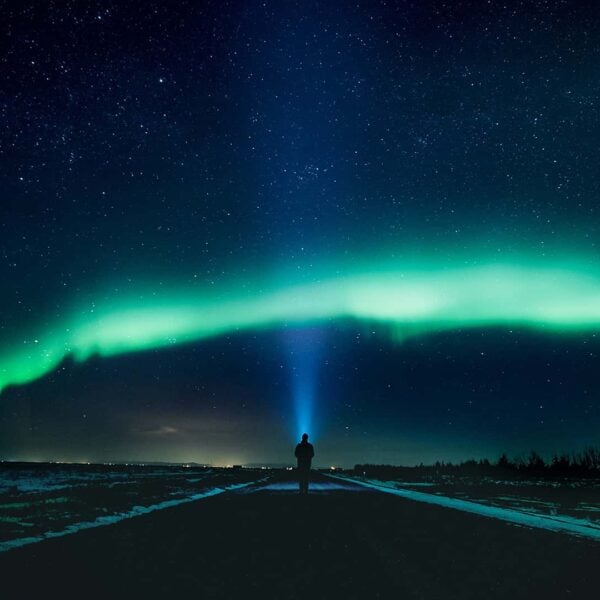
Cool Travel Iceland Case Study
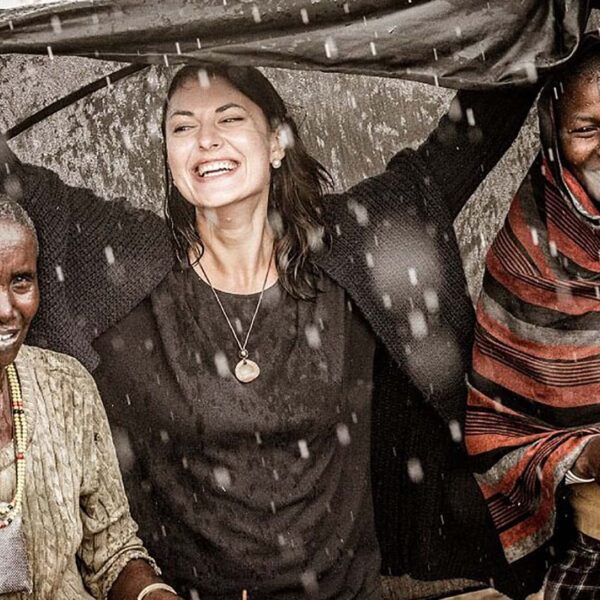
Sababu Safaris Case Study
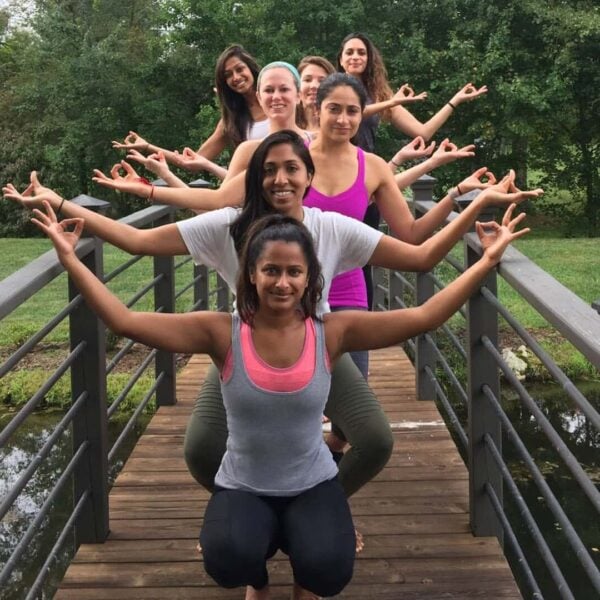
Asheville Wellness Tours Case Study
We want to turn your lookers into bookers..
The Tourism Marketing Agency is an international digital tourism agency. We can help you tell your story. One that inspires and sparks the imagination, turning lookers… into bookers.
We do not have clients or customers, we have partners. And we want to build long-lasting relationships, helping operators through the many challenges of promoting a business online. We’ve found that honesty and strong communication as the backbone of this successful relationship.
Tours and Activities Podcasts
Latest tourism marketing advice from tourpreneur and the digital tourism show.
The Digital Tourism Show and Tourpreneur are a tourism and destination video and audio podcast advice series covering everything form social media, websites, video, and experiential marketing. Everything posted here has one aim: to help you increase booking rates, value, and revenue.

The Power of Consumer Generated Content to Boost your Bookings
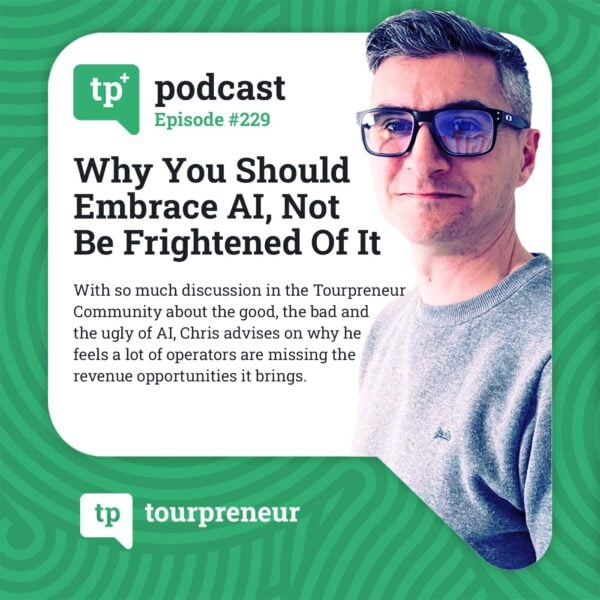
Why You Should Embrace AI, Not Be Frightened Of It
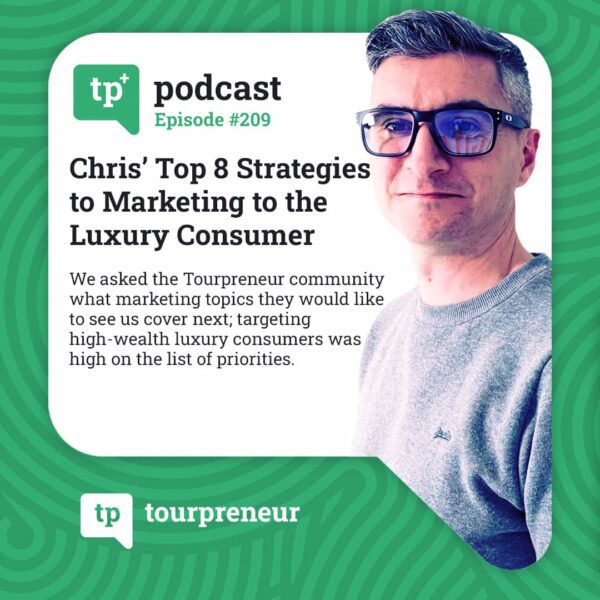
Chris’ Top 8 Strategies to Marketing to the Luxury Consumer
Also available on the following platforms, latest tourism news, advice, and guides.
With regular advice, news, and everything related to the tourism industry, our blog is a rich resource for anyone working in the tours and activities industry.

Establish Balanced Revenue Streams for a Thriving, Secure Tour Business
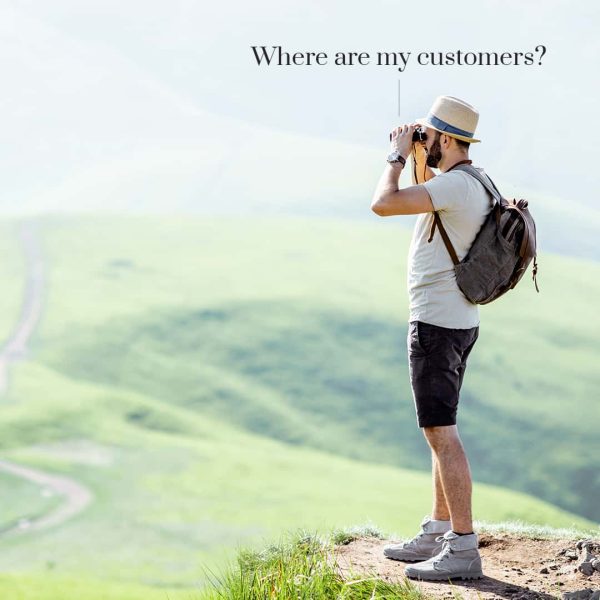
From Boom to Balance: Navigating the Travel Slowdown
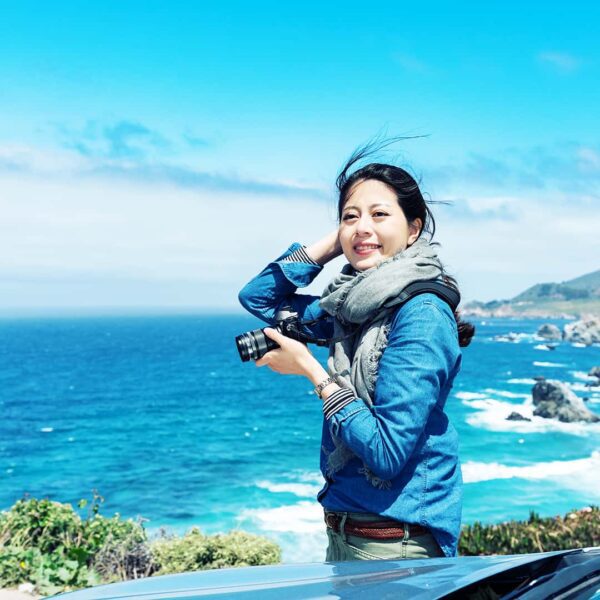
Marketing to the Solo Female Traveller
Free marketing advice.

Download Free Tourism Marketing Reports, Documents & Guides
Our team here at Tourism Marketing Agency are always looking for ways to help educate and inform the tours and activity sector through meaningful content. On this page you can download all the reports and documents we have released, for free.
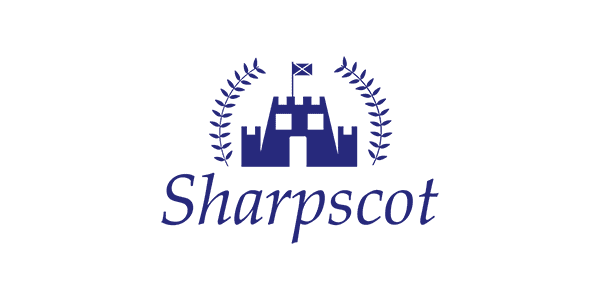
How virtual tourism can rebuild travel for a post-pandemic world

The Faroe Islands is just one destination using new technologies to create a virtual tourism experience Image: Knud Erik Vinding/Pixabay
.chakra .wef-1c7l3mo{-webkit-transition:all 0.15s ease-out;transition:all 0.15s ease-out;cursor:pointer;-webkit-text-decoration:none;text-decoration:none;outline:none;color:inherit;}.chakra .wef-1c7l3mo:hover,.chakra .wef-1c7l3mo[data-hover]{-webkit-text-decoration:underline;text-decoration:underline;}.chakra .wef-1c7l3mo:focus,.chakra .wef-1c7l3mo[data-focus]{box-shadow:0 0 0 3px rgba(168,203,251,0.5);} Anu Pillai

.chakra .wef-9dduvl{margin-top:16px;margin-bottom:16px;line-height:1.388;font-size:1.25rem;}@media screen and (min-width:56.5rem){.chakra .wef-9dduvl{font-size:1.125rem;}} Explore and monitor how .chakra .wef-15eoq1r{margin-top:16px;margin-bottom:16px;line-height:1.388;font-size:1.25rem;color:#F7DB5E;}@media screen and (min-width:56.5rem){.chakra .wef-15eoq1r{font-size:1.125rem;}} Virtual and Augmented Reality is affecting economies, industries and global issues

.chakra .wef-1nk5u5d{margin-top:16px;margin-bottom:16px;line-height:1.388;color:#2846F8;font-size:1.25rem;}@media screen and (min-width:56.5rem){.chakra .wef-1nk5u5d{font-size:1.125rem;}} Get involved with our crowdsourced digital platform to deliver impact at scale
Stay up to date:, virtual and augmented reality.
- The COVID-19 pandemic has upended the travel and tourism industries;
- Businesses in this sector must build infrastructure and practices that allow people to travel safely in a post-pandemic world and support local communities that benefit from tourism;
- Augmented, virtual and mixed reality technologies can offer alternative ways to travel the world and an exciting new model for the industry.
The tourism industry has hit a nadir owing to the COVID-19 pandemic. It will continue to feel the effects for at least the first three quarters of 2021 – according to a recent UN report , tourist arrivals globally in January 2021 were down 87% when compared to January 2020.
Travel will prevail over post-pandemic anxiety, making it incumbent on the aviation and tourism industry to build safer infrastructure and practices that take care of travellers’ well being.
Have you read?
International tourism is set to plunge by 80% this year – but some regions could recover more quickly, how global tourism can become more sustainable, inclusive and resilient, virtual reality adds to tourism through touch, smell and real people’s experiences.
After a year thwarted by the pandemic and with the future not looking too upbeat for the industry at this juncture, tourism business owners should look at alternative modes of interaction for holidaymakers that can also aid the people and economies who depend on tourism.
The COVID-19 pandemic has noticeably hastened the testing and rollout of forward-looking technologies. Technology has not only enabled citizens globally to interact with loved ones, but also helped industries such as healthcare, information technology, education and many more to work remotely.

In the last few decades, technology has helped travel and tourism industries increase their reach through travel booking websites, videos, blogs and travel photography. Digital tools and content are a vital source of information for vacationists organizing their next holiday or creating a destination wish list. Whilst remote or virtual tourism has been a futuristic theme within industry forums for some time, the world today, shaped by the COVID-19 pandemic, might now be ready to accept it.
A human-centric design that draws insights from cognitive behaviour, social psychology, neuroscience and behavioural economics applied with cutting edge technologies such as augmented, virtual or mixed reality (AR, VR, MR) could be a game-changer. AR, VR and MR can enable a seamless, uninterrupted interactive experience for viewers from their own private space. The design principles will create a frictionless digital user experience and construct a positive perception of a tourist destination.

There have been previous attempts to achieve this feat: if you are an aqua sightseer, you might be aware of a documentary exploring the Great Barrier Reef . Through an interactive website, one can view the clear, tranquil currents of the Pacific Ocean and the biodiversity of the reef, and experience the sounds of a healthy coral reef. Another much-discussed VR experience is Mission 828 which allows you to take a virtual parachute jump from the world’s tallest building, Burj Khalifa in Dubai. The Official Tourist Board of the Faroe Islands has also crafted a virtual experience to entice post-pandemic visitors from across the world.
Imagine a human-centric designed, interactive space online that makes a destination accessible and so real for a sightseer with sound captured by electro-acoustics researchers. You could view holiday sites in a video or through self-navigation using voice or joystick controls, interact with people using video-calling platforms, travel through the streets of said location, eavesdrop on local music and much more. This could be stitched together in a single platform individually or in silos on the internet and further enhanced by setting up physical experience tourism centres locally. Such a setup would allow tourist guides, artisans, craftspeople, hoteliers and transport business to create their own digital and virtual offerings and interact with possible customers.
Here’s how it might look: a vacationer starts their experience from the time their flight commences. The plane descends to the destination runway and pictures of the vicinity from the aircraft window pane are captured. The airport signage welcomes passengers and directs them to a pre-booked taxi. The vacationer gets to choose their first destination and travels through the streets in a chauffeur-driven car whose interactions en route become part of their cherished memories. On arrival, a tourist guide walks you through the destination all controlled with just a tap on your gadget. During the sightseeing, you hear random people speaking, posing for photographs and more. You take a photo to post on social media, go shopping and negotiate with a local vendor to purchase an artwork and get it delivered to your door. You learn how a local dish is prepared and get familiar with local customs.
A virtual platform could even provide an opportunity for people to explore areas that are affected by or fighting terrorism. For example, imagine seeing the diverse wildlife and snow leopard of the Gurez Valley, in the union territory of Jammu and Kashmir, India. It doesn’t stop there: if thought through, one could experience travelling to the South Pole, space and beyond. It could also serve as a learning portal for students to understand geographies, culture, art and history.
With technology improving lives globally, virtual tourism could reignite the tourism industry and its people and help build a more sustainable economic model. As a human-centric platform, it can establish local tourist guides, artisans and others as global citizens in the tourism industry.
Don't miss any update on this topic
Create a free account and access your personalized content collection with our latest publications and analyses.
License and Republishing
World Economic Forum articles may be republished in accordance with the Creative Commons Attribution-NonCommercial-NoDerivatives 4.0 International Public License, and in accordance with our Terms of Use.
The views expressed in this article are those of the author alone and not the World Economic Forum.
Related topics:
The agenda .chakra .wef-n7bacu{margin-top:16px;margin-bottom:16px;line-height:1.388;font-weight:400;} weekly.
A weekly update of the most important issues driving the global agenda
.chakra .wef-1dtnjt5{display:-webkit-box;display:-webkit-flex;display:-ms-flexbox;display:flex;-webkit-align-items:center;-webkit-box-align:center;-ms-flex-align:center;align-items:center;-webkit-flex-wrap:wrap;-ms-flex-wrap:wrap;flex-wrap:wrap;} More on Industries in Depth .chakra .wef-17xejub{-webkit-flex:1;-ms-flex:1;flex:1;justify-self:stretch;-webkit-align-self:stretch;-ms-flex-item-align:stretch;align-self:stretch;} .chakra .wef-nr1rr4{display:-webkit-inline-box;display:-webkit-inline-flex;display:-ms-inline-flexbox;display:inline-flex;white-space:normal;vertical-align:middle;text-transform:uppercase;font-size:0.75rem;border-radius:0.25rem;font-weight:700;-webkit-align-items:center;-webkit-box-align:center;-ms-flex-align:center;align-items:center;line-height:1.2;-webkit-letter-spacing:1.25px;-moz-letter-spacing:1.25px;-ms-letter-spacing:1.25px;letter-spacing:1.25px;background:none;padding:0px;color:#B3B3B3;-webkit-box-decoration-break:clone;box-decoration-break:clone;-webkit-box-decoration-break:clone;}@media screen and (min-width:37.5rem){.chakra .wef-nr1rr4{font-size:0.875rem;}}@media screen and (min-width:56.5rem){.chakra .wef-nr1rr4{font-size:1rem;}} See all

The energy transition could shift the global power centre. This expert explains why
Liam Coleman
June 4, 2024

Top 5 countries leading the sustainable tourism sector

Robot rock stars, pocket forests, and the battle for chips - Forum podcasts you should hear this month
Robin Pomeroy and Linda Lacina
April 29, 2024

Agritech: Shaping Agriculture in Emerging Economies, Today and Tomorrow

Confused about AI? Here are the podcasts you need on artificial intelligence
Robin Pomeroy
April 25, 2024

Which technologies will enable a cleaner steel industry?
Daniel Boero Vargas and Mandy Chan
UN Tourism | Bringing the world closer
Share this content.
- Share this article on facebook
- Share this article on twitter
- Share this article on linkedin
Digital tools to revitalize tourism
- All Regions
The World Tourism Organization (UNWTO) continues to energize the restart of tourism based on sustainability and innovation. An agreement with MUST Travel & Tech places a digital tool at the service of tourism, allowing users to share their experiences to promote the reactivation of the sector with a view to sustainability. Presented during the UNWTO Mayors' Forum in Porto , Portugal, the tool is an opportunity for the advancement of smart cities, as well as destinations that incorporate technology and innovation in their development.
Already operating in 60 countries, MUST aggregates all the information of interest to travellers in one place. By also integrating key information and analysis from UNWTO, it aims to become a leading tourism application and generate opportunities for destinations.
Technology at the service of development
We welcome innovative ideas and technologies that allow the creation of global and regional innovation ecosystems aimed at accelerating the recovery of tourism for development
Visibility provided through technological tools is an opportunity for those who, along the entire value chain of the sector, require support to restart their activity, from new destinations around rural communities, to destinations with a high degree of infrastructure development.
“We welcome innovative ideas and technologies that allow the creation of global and regional innovation ecosystems aimed at accelerating the recovery of tourism for development,” said UNWTO Secretary-General Zurab Pololikashvili upon signing the agreement.
For his part, the CEO of MUST, Pablo López, highlighted that “technology enhances the productivity and resilience of companies. The implementation of digital solutions in line with new trends in the tourism sector allows us to develop a differentiated, personalized and safe tourism product that is more focused on behaviour patterns and the management of spaces that will undoubtedly contribute to the recovery of a key activity for the economy in general”.
Shared objectives
A distinctive element will be the contribution of tourism intelligence from the UNWTO to the users of the tool. In this way, relevant and verified content is combined with data for making informed and evidence-based decisions.
The agreement provides for cooperation in the execution of projects that include, among others:
- Supporting the digital transformation of tourism service providers.
- Fostering tourism development and promotion in a sustainable and inclusive way.
- Boosting innovation in the practices of reservation and consumption of tourism experiences and activities.
- Encouraging the creation of quality content with a focus on cultural heritage and the authenticity of the destination to be promoted.
- Promoting and disseminate the UNWTO “ Best Tourism Villages ” programme on the MUST platform as well as other programmes or events of the Organization.
- Promoting programmes related to innovation, education and investments that are useful for tourism destinations of mutual interest.
The agreement between UNWTO and MUST will be in place until the end of 2024.
UNWTO Secretary-General Zurab Pololikashvili, Pablo López, CEO of MUST
Related links.
- Download the news release in PDF
- UNWTO Opens Call for ‘Best Tourism Villages’
- UNWTO Mayors Forum for Sustainable Urban Tourism
- Innovation, Education and Investments
Category tags
Related content, unwto and infecar launch startup competition for techno..., unwto announces winning start-ups for “awake tourism ch..., the world tourism organization (unwto) and the tourism ..., unwto calls on start-ups to join “awake tourism challen....
Digital Platforms and the Future of Tourism
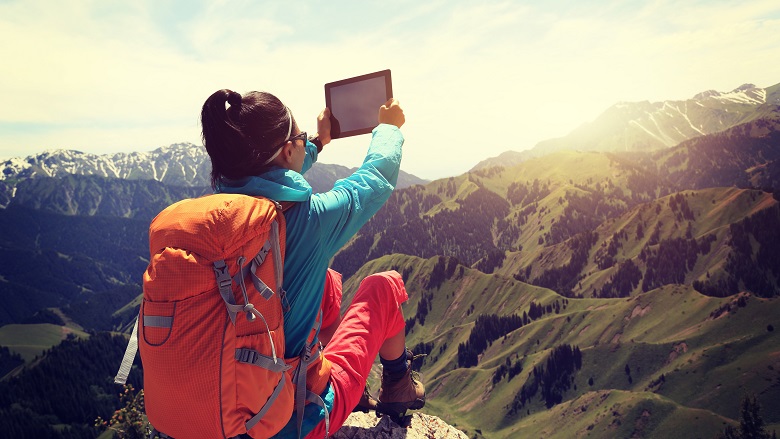
Successful woman backpacker use digital tablet taking photo on mountain peak cliff. © lzf/Shutterstock
STORY HIGHLIGHTS
- The tourism industry is vital to the growth of the majority of developing economies, with the potential to create millions of jobs and promote entrepreneurship and innovation.
- Digital technologies have the potential to give small tourism businesses in emerging destinations direct access to a global market of travel consumers for the first time, vastly expanding their prospects.
- To celebrate World Tourism Day, the World Bank Group, together with partners, are exploring how digital advances can be used to benefit sustainable tourism for development.
Tourism is one of the fastest growing and most important economic sectors in the world providing benefits to both host communities and destination areas. In 2017, international tourist arrivals reached a new record high at over 1.3 billion according to the latest UNWTO Tourism Highlights . The sector has now seen uninterrupted growth in arrivals for eight straight years. It also represents 10.4% of GDP and in 2017 the tourism industry supported 313 million jobs or 1 in 10 jobs globally.
Tourism also provides better opportunities for women’s participation in the workforce, women’s entrepreneurship, and women’s leadership than other sectors of the economy.
That is why the World Bank Group continues to be committed to invest funds, knowledge and expertise to support tourism for development.
- As a part of the World Bank Growth & Competitiveness Project in the Gambia, a hospitality training center trained 1,235 students and helped increase arrivals by tourists from non-traditional markets by 71% between 2011 and 2015.
- In Peru, an IFC Advisory project financed by SECO (Swiss State Secretariat for Economic Affairs – Economic Cooperation and Development) helped streamline procedures for obtaining licenses and permits to start and operate tourism businesses in Cusco. The reforms eliminated 150 unnecessary processes and shaved three years off the business registration process, making it easier for both local and foreign investors to operate in Cusco.
- A World Bank Group report on the 20 Reasons Sustainable Tourism Counts for Development explains how sustainable tourism counts not just for travelers, but for tourism destinations and local residents.
- The World Bank Group developed the Abraham Path project to bring together fragmented communities along the path in the West Bank through many interventions like training and capacity, which were aimed at generating tourism revenue and jobs, and improving economic opportunities for women. The project has generated 137 jobs, 57% going to women.
Digital technologies and platforms are disrupting the way the tourism sector operates from end to end. Many low-income economies can potentially benefit from this digital transformation and others are at risk of being left behind if they fail to embrace this moment.
The World Bank Group recently published two reports on the significance of this disruption on tourism and how countries can harness it for the benefit of all. According to the report, Tourism and the Sharing Economy , the annual growth rate for the global P2P accommodation is estimated at 31 percent between 2013 and 2025, six times the growth rate of traditional bed and breakfasts and hostels.
In addition, the second report, The Voice of Travelers , produced in collaboration with TripAdvisor explains how peer reviews and other forms of user-generated content (UGC), facilitated by digital platforms, have become the most important sources of travel information globally—more important than tourism boards and traditional outlets. This joint report is part of an MoU that was signed by the World Bank Group and TripAdvisor to promote the development of the tourism sector that highlights some of the key digital trends impacting the sector to countries and private sector partners.
This year, World Tourism Day is shining a light on “Tourism and the Digital Transformation” — as its theme. The UNWTO is calling on governments and the global community, to “support digital technologies that can transform the way we travel, reduce the ecological burden of tourism and bring the benefits of tourism to all.”
They also can provide new opportunities for women and rural entrepreneurs to improve their market access and financial inclusion. However, many developing destinations have limited knowledge on how to take advantage of digital platforms and mitigate risks. Either constrained by the lack of understanding or knowhow and resources, these economies are not able to leverage digital tools to grow their tourism.
Responding to the global call to promote innovations in tourism through technology, the World Bank Group, will host a day-long event just prior to WTD2018 focusing on Digital Platforms and the Future of Tourism .
- Watch the Event Live on September 26th at 9:00 am
- Tourism and the Sharing Economy
- The Voice of Travelers
Thank you for visiting nature.com. You are using a browser version with limited support for CSS. To obtain the best experience, we recommend you use a more up to date browser (or turn off compatibility mode in Internet Explorer). In the meantime, to ensure continued support, we are displaying the site without styles and JavaScript.
- View all journals
- My Account Login
- Explore content
- About the journal
- Publish with us
- Sign up for alerts
- Review Article
- Open access
- Published: 07 October 2023
A ten-year review analysis of the impact of digitization on tourism development (2012–2022)
- Chunyu Jiang ORCID: orcid.org/0000-0002-6072-8365 1 &
- Seuk Wai Phoong ORCID: orcid.org/0000-0002-9925-0901 1
Humanities and Social Sciences Communications volume 10 , Article number: 665 ( 2023 ) Cite this article
6538 Accesses
5 Citations
11 Altmetric
Metrics details
- Development studies
- Science, technology and society
Many tourism-related activities have been suspended due to the nationally enforced lockdown to combat the Coronavirus pandemic. The tourism industry suffered immensely from the lockdown, and as a result of this, digital tourism began gaining traction and attracted public attention. This study analyses the impact of digitalization on the social and economic sustainability of the tourism industry via systematic literature network analysis. The findings indicated that digitalization impacts economic sustainability, encompassing economic benefits in tourism product development, tourism consumption, and industrial development. Moreover, digitalization fosters social development, cultural awareness, and tourism participation in digital technology and cultural heritage. This study identified publication trends and research hotspots using bibliometric analysis, and it was confirmed that Sustainability was the top journal in published digital and tourism sustainability-related articles, followed by the International Journal of Tourism Research, Tourism Management , and Current Issues in Tourism . This study resulted in two implications: identifying the knowledge gap and evidence-based decision-making based on the (previous) literature. Recommendation for future research is also discussed in this study, which is helpful to policymakers, tourism planners, and researchers to develop strategies grounded in research.
Similar content being viewed by others
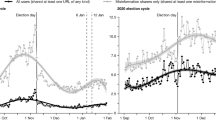
Post-January 6th deplatforming reduced the reach of misinformation on Twitter

A unifying modelling of multiple land degradation pathways in Europe

Determinants of behaviour and their efficacy as targets of behavioural change interventions
Introduction.
From 2019 through 2022, the Coronavirus disease 2019 (COVID-19) wreaked havoc on the world’s tourism business (Navarro-Drazich and Lorenzo, 2021 ). Tourism contributes to many nations’ gross domestic product (GDP) as it is intertwined with various industries (Gössling et al., 2017 ). Examples of tourism products include lodging options such as hotels and Airbnb. Food and drink, theme parks, museum visits, and fashion items such as clothes and bags are additional examples of tourism products that boost the economic health of the individual and the nation.
Tourism is regarded as a complex service-driven industry, one of the characteristics of which is that if external influences disrupt the tourism sector, other industries linked to it will also be directly affected. Tourism development refers to creating and maintaining the tourism industry in a particular location and is closely linked to economic and social progress (Telfer and Sharpley, 2015 ). Over the past four decades, global tourism development has reported intense growth performance and research on tourism development (Capocchi et al., 2019 ). Kreishan ( 2010 ) posited that the impact of tourism development on destination development is a commonly discussed issue, particularly in terms of tourism development improving economic efficiency and local competitiveness. The growth of tourism currently is significant not only from an economic perspective but also from a social perspective, as evidenced by the optimization of the local social structure (Yang et al., 2021 ), increased community participation (W. Li, 2006 ), participation of women (Ferguson, 2011 ), and increased cultural awareness (Carbone, 2017 ). Also, the development of the tourism industry benefits the environment by increasing environmental protection awareness and providing greater funding for initiatives to conserve resources and the environment (Zhao and Li, 2018 ).
However, unmanaged over-tourism can cause serious harm, according to Berselli et al. ( 2022 ). From an economic standpoint, excessive tourism can result in higher prices and imbalanced industrial structure development, which lowers industries’ overall resilience. Social issues arising from over-tourism include the commercialization of culture (Wang et al., 2019 ), the shift in locals’ attitudes from friendliness to hostility towards tourists (Kim and Kang, 2020 ), and the emergence of on-stage authenticity (Taylor, 2001 ). In terms of the environment, issues such as excessive carbon emissions causing global warming (Liu et al., 2022 ), damage to water and soil resources, destruction to flora and fauna (Gössling and Hall, 2006 ), and even harm to cultural heritage (Zhang et al., 2015 ) are some of the effects of over-tourism. Since the development of the tourism industry combines economic, social, and cultural phenomena, as well as the past COVID-19 disruptions, the industry’s suspension for several years presents a significant opportunity for all stakeholders to reposition tourism for sustainable development.
Some studies suggest the tourism industry will recover after COVID-19 (Zhong et al., 2021 ). However, given the abovementioned problems caused by over-tourism, what needs to be considered is the sustainability of the tourism industry post-COVID-19. Researchers and tourism stakeholders are becoming more aware of the importance of the concept of sustainable development (Miceli et al., 2021 ), especially since COVID-19, as the tourism or hospitality industry remains one of the least developed sectors in terms of sustainable tourism practices (Kim and Park, 2017 ). Korstanje and George ( 2020 ) noted that over-tourism is a chronic disease that mere temporary changes cannot treat; it can be minimized via education and training to raise awareness. The tourism industry needs to rethink how to develop in a sustainable and healthy direction (Higgins-Desbiolles et al., 2019 ), not only in terms of ecotourism or green tourism but also in terms of putting the concept of sustainability into practice at a deeper level as it faces multiple pressures and challenges of an overarching environment, economy, and society.
Sustainability is often cited as one of the reasons for improved competitiveness among different tourism destinations (Han et al., 2019 ). The United Nations 2030 (UN, 2030 ) Agenda for Sustainable Development has developed a Sustainable Development Goals (SDGs) plan, defined as a set of global goals for fair and sustainable health at every level, from the planetary biosphere to the local community. The aim is to end poverty, protect the planet, and ensure that everyone enjoys peace and prosperity now and in the future. The basic concept is that productivity can be preserved for future generations. Due to the general emphasis of the United Nations World Tourism Organization (UNWTO) on sustainable tourism and the industry’s economic importance, the SDGs and its associated millennium development goals (MDGs) have become critical elements for research into tourism’s contribution to sustainable development and overall sustainability (Saarinen et al., 2011 ; Saarinen and Rogerson, 2014 ). Winter et al. ( 2020 ) indicated that as sustainable tourism development needs to take complete account of the combined social, economic, and environmental impacts, stakeholders are expected to integrate scientific management and practice for future sustainability using updated and innovative technologies that can provide more tourism opportunities for groups unable to travel directly while enhancing environmentally-friendly behavior. Bramwell and Lane ( 2011 ) suggested that effective policy support is also crucial to implementing sustainable tourism development, as the path to sustainable development is guided and monitored by excellent and progressive policies. From a postmodernist perspective, social media and place brand authenticity in smart tourism are essential to place trust, place identity, and place brand image, while the development of this brand authenticity is one of the critical indicators of the visitor experience (Handayani and Korstanje, 2017 ). As a result, Korstanje et al. ( 2022 ) contended that new paradigms and strategies must be created to confront risks to tourism in the 21st century and satisfy the SDGs by 2030.
Several studies are underway to determine the impact of various programs and strategies on the environmental component of sustainability practices (Goralski and Tan, 2020 ). Yalina and Rozas ( 2020 ) suggested that a digital workplace can promote environmental sustainability. Although there have been studies on the digitalization of tourism and environmental sustainability, such as Loureiro and Nascimento ( 2021 ), who reviewed digital technology on the sustainability of tourism using bibliometric methods, there is a need for a thorough examination of the impact of digital transformation on sustainable tourism growth, particularly in terms of economic and social dimensions (Feroz et al., 2021 ). Therefore, the objective of this study is to review the impact of tourism digital technology development on the economic and social sustainability of tourism development to offer future research guidance.
With the growing literature and the emergence of cross-disciplinary research related to sustainability and digitalization in tourism development, it is critical to analyze the changes in its research, summarize the focus of previous research content, and predict future research prospects. As a result, this study will address the above research gaps by answering the following three questions.
RQ1: What are the prominent documents, authors, sources, organizations, and keywords in digitalization for the economic and social sustainability of tourism development?
RQ2: What are the linkages based on bibliographic coupling, co-authorship, co-occurrence, and citation in digitalization for the economic and social sustainability of tourism development?
RQ3: What is the future research agenda based on the results of this study?
Literature review
Several review papers on tourism research are now available and relevant to this study. Ülker et al. ( 2023 ) assumed that there are currently 136 bibliometric studies in the tourism and hospitality industry, of which the literature review studies on overall trends in the tourism and hospitality industry are continuously being updated (Chang and Katrichis, 2016 ; Wang et al., 2023 ). Also, economic development in the tourism industry (Comerio and Strozzi, 2019 ), tourism marketing (Mwinuka, 2017 ), tourism and education (Goh and King, 2020 ), hospitality (Manoharan and Singal, 2017 ), Airbnb (Andreu et al., 2020 ), and even COVID-19 review articles related to tourism development are available (Bhatia et al., 2022 ).
With the emergence of cross-disciplinary digital-related technologies, the link between tourism and digitalization has become one of the hot topics of research, and as a result, several literature review articles on digitalization and tourism have been published, such as on robotics (Buhalis and Cheng, 2020 ; Ivanov et al., 2019 ; Pizam et al., 2022 ), ICT (Buhalis and Law, 2008 ; Law et al., 2014 ), big data (Li et al., 2018 ; Stylos et al., 2021 ), smart tourism (Buhalis, 2020 ; Mehraliyev et al., 2020 ), social media (Buhalis and Inversini, 2014 ; Mirzaalian and Halpenny, 2019 ), eye-tracking (Muñoz-Leiva et al., 2019 ; Scott et al., 2019 ), AI (Buhalis and Moldavska, 2022 ; Doborjeh et al., 2022 ; Dwivedi et al., 2023 ), VR (Koohang et al., 2023 ; Wei, 2019 ), AR (Jingen Liang and Elliot, 2021 ; Tscheu and Buhalis, 2016 ; Yovcheva et al., 2012 ), MR (Buhalis and Karatay, 2022 ), and the Metaverse (Ahuja et al., 2023 ; Buhalis et al., 2022 , 2023 ; Go and Kang, 2023 ).
Due to the rise of sustainability research, the literature review on sustainability research in tourism has seen a stark increase (León-Gómez et al., 2021 ; Ruhanen et al., 2018 ; Streimikiene et al., 2021 ). The proliferation of studies related to digitalization and sustainable tourism development has led to a considerable number of review articles (Elkhwesky et al., 2022 ; Gössling, 2017 ; Loureiro and Nascimento, 2021 ; Nascimento and Loureiro, 2022 ; Rahmadian et al., 2022 ). Feroz et al. ( 2021 ) conducted a literature study on the environmental aspects of tourism sustainability and digitalization; however, there is a distinct lack of studies on the economic and social dimensions.
Therefore, the study’s unique value is that it presents the first literature review in the field of digitalization and social and tourism economic sustainability development using a novel method of systematic literature network analysis (SLNA), filling a gap in the literature review landscape and addressing the need for more comprehensive, detailed, and up-to-date research endeavor.
Methodology
Colicchia and Strozzi ( 2012 ) proposed a systematic literature review analysis (SLNA) to identify past research trends more sophisticatedly, integrated, and scientifically. This method is currently used in reviews of sustainable development research (Afeltra et al., 2021 ) but is rarely used in reviews of tourism sustainability; therefore, SLNA is used in this study.
Systematic literature review (SLR) and bibliographic network analysis (BNA) are the two phases of SLNA. These actions comprise the first phase of SLR, which includes choosing the study’s final selection, conducting a dialectical examination of the most pertinent articles, and evaluating the results. Next, citation analysis and bibliographic coupling of BNA are also included in this paper to investigate the relationship between the previous literature, assess the research trends, and aid in uncovering future research innovation opportunities. Bibliographic coupling is a scientific mapping technique regarding two articles with a common citation contentedly comparable. This technique permits the segmentation of publications into thematic clusters utilizing published references to understand the most recent developments in current research issues (Donthu et al., 2021 ). Citation analysis reveals which papers are influential and their authors and journals and aids in comprehending what past literature has contributed (Pilkington and Meredith, 2009 ).
First phase: systematic literature review (SLR)
Introduction of slr.
The most widely used and reputable databases are the Web of Science (WOS) and Scopus (Garrigos-Simon et al., 2018 ); thus, both were used in this study to eliminate data search omissions, broaden the search scope, and improve the accuracy of data outputs.
Figure 1 shows the flow diagram for systematic bibliometric analysis. Firstly, this paper takes “virtual reality or augmented reality or artificial intelligence or big data or mobile technology or internet of technology or social platform technology) and (sustainable tourism development or sustainability of tourism or green tourism or ecotourism” as keywords. The search process began by searching topics (including article titles, abstracts, and keywords). The language of the articles was set to English and had to be published between 2012 and 2022. The search process resulted in 91 articles. The data were extracted on February 15, 2022, per Fig. 2 .
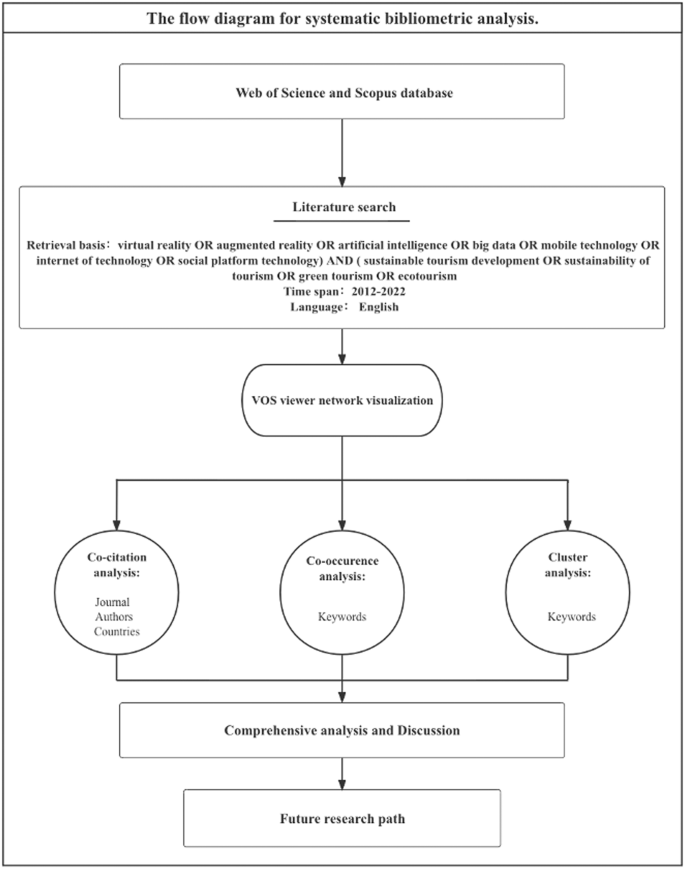
This figure shows the overall process of this study from database selection until suggestions for future research. Source: Own elaboration.
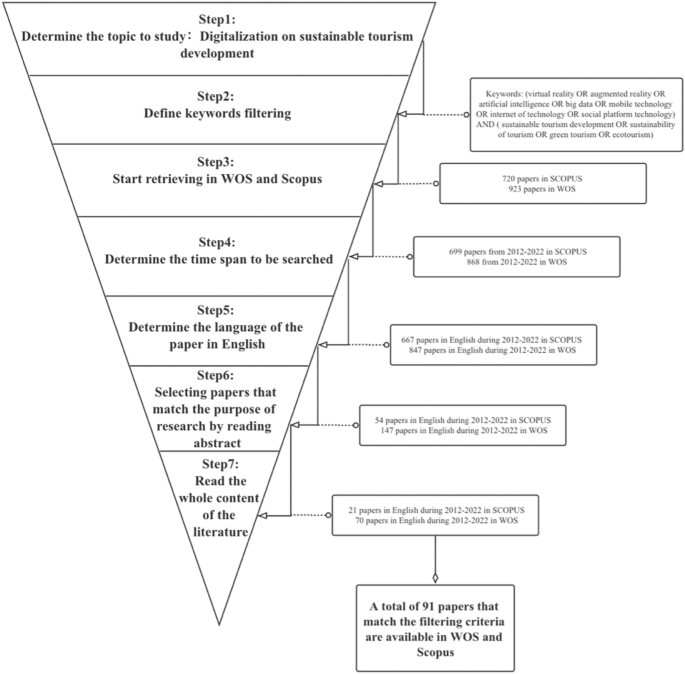
The criteria and steps used to identify the selected target literature are explained in this diagram. Source: Own elaboration.
A review article with scholarly worth and contribution is required to describe the literature’s links and contents and examine and critique it precisely (Hart, 2018 ). As seen in Fig. 3 , the following research topics are divided into two categories: economic sustainability (which includes topics such as economic benefit, industry development, and tourist consumption) and social sustainability (which includes topics such as tourist behavior, social development, cultural awareness, and participation).
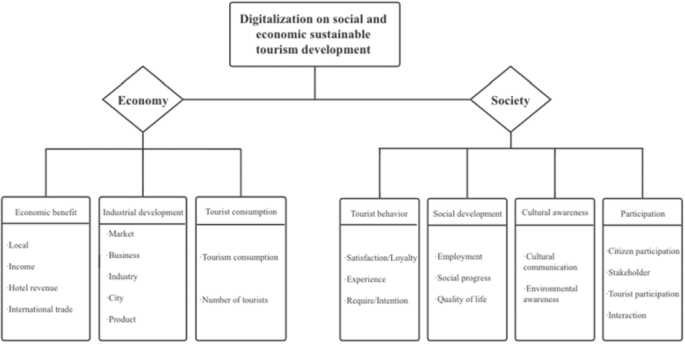
The research topics are divided into two categories: economic sustainability (which includes topics such as economic benefit, industry development, and tourist consumption) and social sustainability (which includes topics such as tourist behavior, social development, cultural awareness, and participation. Source: Own elaboration.
The SLRs are used to locate, appraise, and synthesize existing, completed, and documented work (Cocchia, 2014 ), facilitating classification and summarization, particularly for micro-profiling within macro-level fields of study.
Digitalization’s impact on economic sustainability
Digitalization’s impact on economic benefits.
Adequately improving the economic development of tourism is also one of the sustainable needs for developing tourism. At a time when tourism has been devastated by COVID-19, the tourism industry has almost ceased to exist. Therefore, one of the most popular research topics is maintaining substantial economic benefits while allowing the tourism industry to flourish sustainably.
Digital technology has piqued researchers’ interest due to its potential benefit to the tourism industry. Technologies that directly improve the economic situation are classed as economic benefits, and per many studies, digitization positively impacts local economic development and may bring objective revenue to tourism (Tables 1 – 7 ).
Digital technology promotes economic development. The growth of information communication technologies (ICT) positively impacts China’s tourism industry while promoting economic growth (Shehzad et al., 2019 ). As a rapidly evolving digital technology, mobile technology has significantly minimized asymmetric information, enhanced local GDP growth, and increased citizens’ financial capital through tourism (Kim and Kim, 2017 ; Phoong et al., 2022 ). Technologies such as 3D virtual, mixed reality (MR), virtual reality (VR), or augmented reality (AR) applied in heritage tourism can effectively increase local economic income and the added value of tourism (Manglis et al., 2021 ; Martinez-Grana et al., 2019 ). Furthermore, marketing tools such as small programs and network technologies confer several advantages to tourism stakeholders, such as the ability to help local communities contribute value and support the tourism economy (Caciora et al., 2021 ; Lin et al., 2020a , b ). Also, smart heritage city tourism technology tools can drive the tourism economy to inaccessible areas (Gomez-Oliva et al., 2019 ).
The increase in income is proportional to increased economic benefits. ICT is often used in the tourism industry, which has an essential impact on the tourism service industry, one of which is the improvement of tourism income (Gomez-Oliva et al., 2019 ; Koukopoulos and Koukopoulos, 2019 ). Virtual tourism technologies, such as AR and VR, are digital tools that can help overcome cultural heritage tourism challenges, such as reviving the tourism industry and resolving funding shortages (Lu et al., 2022 ). Mobile money, such as electronic traveler’s checks and credit cards, can assist low-income people in taking advantage of their marginal savings and encourage implementing a cashless economy for tourism sustainability (Singh, 2017 ).
Second, digital marketing technologies are frequently utilized by hotels to improve hotel performance, which increases profit (Theocharidis et al., 2020 ; Vitezic et al., 2015 ). Another example is Muslim-friendly apps promoting the international trade of products during the tourism process (Cuesta-Valiño et al., 2020 ),
Digitalization’s impact on tourism industrial development
Technological development has driven the tourism industry in local tourist cities, organizations, businesses, and governments. From the perspective of industrial market development, ICT, extensive data network marketing, and other virtual tourism technologies can create market development potential and improve market positioning for companies (Ammirato et al., 2021 ; Filipiak et al., 2020 ; Ma et al., 2021 ).
Adopting and applying information in the tourism industry are commonly regarded as a source of corporate innovation. The implementation of ICT can increase the profitability of tourism enterprises while also increasing organizational productivity (Croitoru and Manoliu, 2016 ; De Lucia et al., 2021 ; Duy et al., 2020 ; Obonyo et al., 2018 ). VR, AR, 3D digital technology, and mobile technology can all be used to improve a company’s performance and competitiveness in the tourism industry (Cranmer et al., 2021 ; Koukopoulos and Koukopoulos, 2018 ; Pavlidis et al., 2022 ; Yuce et al., 2020 ), and these technologies have made significant economic contribution to economic sustainability.
The application and implementation of ICT play an essential role in developing the tourism industry (Adeola and Evans, 2020 ; Tan et al., 2019 ; Zhou and Sotiriadis, 2021 ). Also, digital advanced technologies, such as MR technology adopted by museums, AR technology adopted by destinations, and smart tourism products and tourism ecological reservation systems have made significant contributions in the front-end development stage, providing opportunities to monitor the future development of tourism, as well as being beneficial to the formulation and implementation of tourism industry strategies at later stages (Graziano and Privitera, 2020 ; Tsai et al., 2018 ). The abovementioned electronic environment is an excellent lubricant for tourism’s active and healthy development (Maiorescu et al., 2016 ). Moreover, apps can help customers understand legacy cities more from the standpoint of heritage preservation and help cities promote tourist city development (Briciu et al., 2020 ).
From the perspective of products sold and variations in product types, online services in Muslim-friendly apps can be helpful for market segmentation and promotion of product positioning and sales (Cuesta-Valiño et al., 2020 ). Furthermore, virtual multi-sensory technologies can improve the company’s potential, increase public awareness, and sell products (Martins et al., 2017 ). Undeniably, the development of digitalization enriches the cultural service products of museums in developing heritage tourism (Palumbo, 2021 ), and AR technology also increases the diversification of products in water tourism (Kaźmierczak et al., 2021 ).
Digitalization’s impact on tourism consumption
Tourists’ spending power can reflect the overall economic development of the tourism industry as one of the contributing variables, and the number of tourists and the value of tourist flow are two measurement criteria of tourism consumer spending. Tourism apps, for example, can make traveling more convenient for tourists, increasing tourism consumption (Lin et al., 2020a , b ). Virtual tourism products or augmented reality technology allow tourists to spend more leisure time, increasing consumption (da Silva, 2021 ; Pehlivanides et al., 2020 ).
The application of virtual tourism technology is also helpful in improving the attractiveness of tourists (Cai et al., 2021 ; Manglis et al., 2021 ; Martins et al., 2017 ). Meanwhile, big data analytic tools, e-marketing (WOM), and mobile applications positively influence customers’ intention to travel and contribute to improving tourism sustainability (Gajdosik, 2019 ; Kim and Chang, 2020 ; Pica et al., 2018 ). With the application and construction of ICT, the demand for tourism has increased, and the number of tourists has also increased (Adeola and Evans, 2020 ; Kabassi, 2017 ; Kumar and Kumar, 2020 ). In addition to enhancing tourists’ imagination, virtual tourism technology and 3D digital technology can also be used as practical tools to further develop tourism and increase the number and flow of tourists (Bae et al., 2020 ; Graziano and Privitera, 2020 ; Pavlidis et al., 2022 ). Word-of-mouth marketing has increased the number of tourists (Fernandez-Lores et al., 2022 ; Wang et al., 2020 ).
Digitalization’s impact on social sustainability
Digitalization’s impact on tourist behavior.
Virtual tourism technology is gradually being implemented in the tourism industry, focusing on increasing the satisfaction of the elderly and disabled (Lu et al., 2022 ). Artificial intelligence and virtual reality are integrated into human-computer interaction system equipment, boosting service quality and increasing tourist satisfaction (Van et al., 2020 ). The mixed experience helps enrich tourists’ feelings about the surroundings, thereby boosting tourists’ contentment (Bae et al., 2020 ), and the succinct information and dependable system offered by VR can promote tourists’ satisfaction (Yuce et al., 2020 ). 3D digital technology to build innovative and appealing tourism items can help boost consumer satisfaction and positive feedback (Pavlidis et al., 2022 ).
Tourism stakeholders’ use of tourism apps is critical to increasing tourist satisfaction (Lin et al., 2020a , b ). For example, tourism management in Ho Chi Minh City’s use of Web 4.0 can increase customer satisfaction and loyalty in the long run (Duy et al., 2020 ). The mobile usability and ease of use of social media as a suitable medium directly impact satisfaction (Sharmin et al., 2021 ). It can also serve as a platform for tourists to communicate and contribute to increased satisfaction (Jamshidi et al., 2021 ). Simultaneously, tourism safety is an essential factor that influences tourist satisfaction, and the use of closed-circuit television (CCTV) and unmanned aerial vehicles (UAVs) can help to improve tourism safety (Ko and Song, 2021 ). The use of mobile technologies and payment mechanisms in the tourism process is also a fascinating study. Through electronic technology, two-dimensional code payment techniques improve tourists’ pleasure (Lou et al., 2017 ). Furthermore, incorporating digital innovation into hotel management structures increases hotel performance and client satisfaction (Vitezic et al., 2015 ).
Tourism satisfaction is directly related to tourism experience, and tourism experience is one of the most important criteria to measure in the tourism process. The findings suggest that using virtual immersion technologies such as AR, VR, and MR in the tourism process can significantly improve the tourist experience (Bae et al., 2020 ; Fernandez-Lores et al., 2022 ; Franco and Mota, 2021 ; Lee and Kim, 2021 ; Yin et al., 2021 ).
Additionally, the intention and motivation of tourism drive tourism behavior from the psychological aspect. Digital innovative technology can boost tourists’ interest in tourism products and locations, enrich their understanding of tourism culture, attract more tourists, enhance tourists’ preferences, and strengthen their desire to visit (Caciora et al., 2021 ; Cranmer et al., 2021 ; Gajdosik, 2019 ; Kang, 2020 ; Kaźmierczak et al., 2021 ; Manglis et al., 2021 ; Monterroso-Checa et al., 2020 ;). Digital marketing tools can ramp up customers’ desires and habits (Theocharidis et al., 2020 ), and digital mobile programs can increase tourists’ attention, influencing their overall view of the tourism experience (Wang et al., 2020 ). Big data can also be utilized to foresee client wants and expectations, allowing for a better understanding of customer needs (Del Vecchio et al., 2018 ). For example, Internet of Things technology can scientifically guide and divert tourists to alleviate the problem of local saturation and overload in scenic sites, thus improving the tourist experience (Xie and Zhang, 2021 ). It can also provide various cultural tourism content to enhance and support the experience of active tourists (Ammirato et al., 2021 ).
Digitalization’s impact on social development
Tourism planners and governments can use the analytic hierarchy process (AHP) and geographic information system-remote sensing (GIS-RS) technology to accurately select sites, develop eco-tourism activities, relieve the burden of tourism in the region, and thus help the locals create new employment opportunities (Chaudhary et al., n.d. ). Virtual tourism technology, such as AR, can also aid in analyzing tourist flow and conditions, improve safety, and expand job chances (Franco and Mota, 2021 ). Advances and innovations in tourism ICT can benefit enterprises enough to increase job prospects (De Lucia et al., 2021 ). Virtual tourism, ICT, mobile technology, smart heritage tourism technology, and innovative marketing methods improve stakeholders’ quality of life, increasing the tourism system and community awareness (Lemmi and Deri, 2020 ).
Digitalization’s impact on cultural awareness
Virtual technologies, such as AR, VR, and mobile augmented reality (MAR), are now widely used in cultural heritage tourism, with the potential to protect cultural heritages and enhance the potential of heritage management, thereby contributing to cultural communication (Bec et al., 2019 ; Caciora et al., 2021 ; Graziano and Privitera, 2020 ). Some studies indicate that online engagement platforms, mobile application technologies, and smart tourism models can all support the socially sustainable growth of culture (Bonacini et al., 2018 ; Pica et al., 2018 ; Zubiaga et al., 2019 ).
AR, VR, and other techniques can promote tourists’ behavior in underwater cultural tourism and raise public awareness of natural heritage protection among tourists (Manglis et al., 2021 ). Research on low-carbon travel modes is frequently concerned with tourism sustainability, and big data marketing technology can supply tourists with more low-carbon transport schemes, thus increasing tourists’ environmental consciousness (Ma et al., 2021 ). As a common medium for cultural communication, social media can raise tourists’ awareness of environmental protection (Haque et al., 2021 ).
Digitalization’s impact on participation
Tourists’ active participation in cultural heritage can be enhanced by digital technology, as can people’s feeling of belonging and responsibility to society (Koukopoulos and Koukopoulos, 2019 ; Permatasari et al., 2020 ). Virtual technology can also encourage public participation in preserving and promoting cultural heritages (Caciora et al., 2021 ), while digital media can help tourism businesses improve public relations and social participation (Camilleri, 2018 ; Haque et al., 2021 ). Increased smart tourism destinations optimize the potential for these communities to involve the destinations’ residents and impact their lives due to the improved urban tourism experience.
Stakeholders are closely linked to the sustainable development of tourism. Innovative applications of digital technology can better manage destination stakeholders, strengthening their linkages (Camilleri, 2018 ), help promote their participation in the development of tourist destinations (del Vecchio et al., n.d. ; Gajdosik, 2019 ), and create a democratic and sustainable system when promoting cultural heritage, which balances the opinions of different stakeholders.
The interactive network platform empowers local communities and encourages local inhabitants and tourists to communicate, which promotes the healthy growth of resident-tourism relationships (Dionisio et al., 2019 ). Also, ICT tourism apps influence the ultimate perception of older tourists’ travel experiences, stimulate tourists’ interest in world cultural heritage sites (WCHS), and increase contact and understanding between tourists and destinations (Ramos-Soler et al., 2019 ). Social media can help tourists increase their knowledge of environmental protection, which increases the participation of tourists and citizens and helps formulate sustainable goals (Haque et al., 2021 ).
Second phase: bibliographic network analysis (BNA)
The VOSviewer is the analysis tool used in this work to visualize the impact of digital technology on sustainable tourism development in economic and social aspects. VOSviewer employs the visualization of similarities (VOS) mapping approach to create a map (Moya‐Anegón et al., 2007 ).
Bibliographic coupling network of sources
Bibliographic coupling analysis mainly measures the similarity of documents by the number of identical references cited by documents. Although co-citation refers to the appearance of two documents in the same reference list, bibliographic coupling refers to the number of references that a group of papers share; for example, paper A and paper B are coupled if they both cite document C (Garrigos-Simon et al., 2018 ). In other words, bibliographic coupling happens when two documents quote the same document (Phoong et al., 2022 ; Mulet-Forteza et al., 2018 ), demonstrating the power of one publication in comparison to a group of others (Cavalcante et al., 2021 ). It should be pointed out that the size of the sphere represents the number of similar citations. This paper analyzes the bibliographic coupling network of sources, and the findings are summarized in Fig. 4 . Per Fig. 4 , there are 9 clusters, and the journal source with the highest number of similar citations is Sustainability . It can, therefore, be concluded that this journal has the most citations and published articles on this subject.
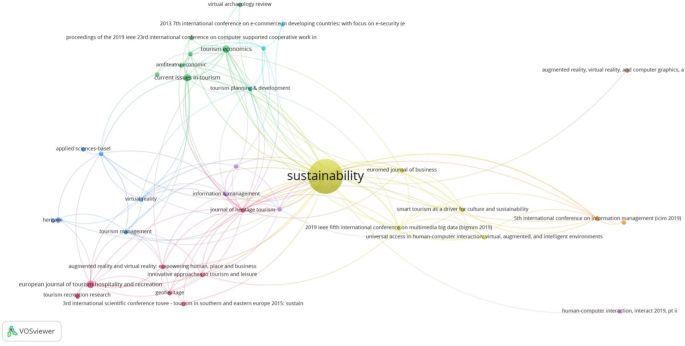
This figure refers to the number of references shared by a group of papers. Source: Own elaboration.
Citation network of documents
Citations are formed when two documents cite the same document and are used to illustrate the relation between documents and study fields. Figure 5 shows four clusters, each representing the degree of connection and the extent of influence in size. This study has the highest influence, according to the largest green group. It offers insight into the impact of reality and virtual reality on heritage tourism, stating that these technologies favorably impact tourists’ experiences (Bec et al., 2019 ).
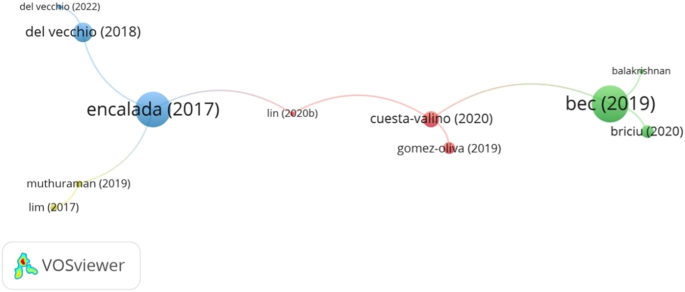
Cluster size indicates the degree of connection and influence of the literature and research area. There are four groups, with the blue (Encalada et al., 2017 ) and green (Bec et al., 2019 ) groups representing the two articles that are relatively most influential. Source: Own elaboration.
This Blue Group study is also prominent, proposing that the widespread use of information and communication technologies, such as cloud computing, the Internet of Things, and data mining with high processing performance, are the key to tourism’s sustainability (Encalada et al., 2017 ).
The number of citations between documents is used in co-citation analysis to determine their relevance. Figure 6 shows which publications are cited most frequently, and it is clear that tourism management and sustainability are the two commanding the most attention. Generally, the closer two journals are located to each other, the stronger their relatedness. For example, according to an article published in Tourism Management , virtual reality has significantly increased tourism intention and consumption (Tussyadiah et al., 2018 ). Simultaneously, this article presents the finding, which illustrates that combining history with cutting-edge technology in immersive spaces can preserve and manage legacy and enrich the visitor experience and, as a result, engagement with history (Bec et al., 2019 ).
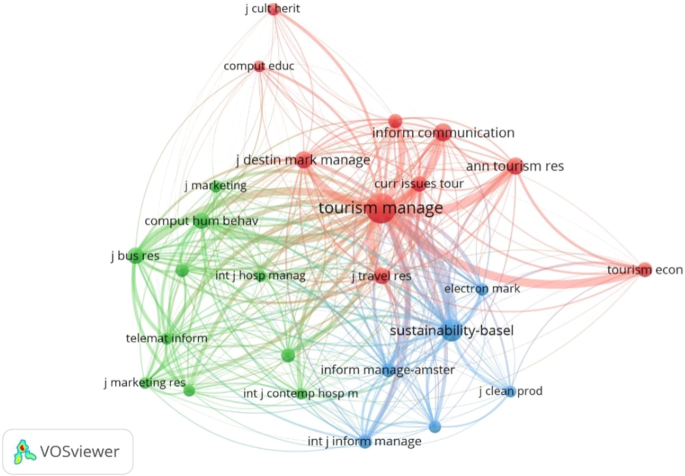
This figure represents the citation strength of publications. The circle distance represents relevance. Source: Own elaboration.
Co-occurrence network of Keywords and titles
The significance of keyword co-occurrence analysis in bibliometrics resides in an intuitive understanding of hot subjects in the study field through the frequency and relevance of terms (Phoong et al., 2022 ). Before that, the following considerations must be made.
To begin, each node in the network map indicates a keyword, and the size of the ball represents the number of keywords that appear. The larger the ball, for example, indicates the higher frequency of keywords occurring. Second, the larger the co-occurrence rate between terms, the thicker the curve between the second keywords. In the third, on the network map, different color groups reflect different theme collections, while the same color represents similar subjects (Loureiro and Nascimento, 2021 ).
Figures 7 and 8 illustrate overlay visualization (Fig. 8 ) and network visualization (Fig. 7 ). From Fig. 7 , the keywords of high frequency include tourism (37 occurrences), technology (35 occurrences), tourist (32 occurrences), experience (31 occurrences), information (25 occurrences), application (23 occurrences), data (22 occurrences), analysis (21 occurrences), impact (21 occurrences), sustainability (14 occurrences) and sustainable development (9 occurrences). Some of Red Network Group’s primary keywords are tourism, information, impact, communication technology, virtual reality, new technology, and cultural tourism. The study’s content focuses on the impact of the relationship between information technology and tourism. Yellow Network Group’s primary keywords are destination, tourism destination, environment, and AR, mainly concentrated on destination environment and AR application research. The green network group comprises tourists, analysis, process, big data, management, stakeholders, case studies, innovation, and other topics. This group has conducted more studies on the effect of digital technology on enterprise management from stakeholders’ perspectives. The Blue Network Group focuses on technology, experience, data, service, research, relationships, social media, sustainable development, tourist satisfaction, intention, and other related topics, and this group study is particularly interested in the influence of technology on tourist experience and satisfaction.
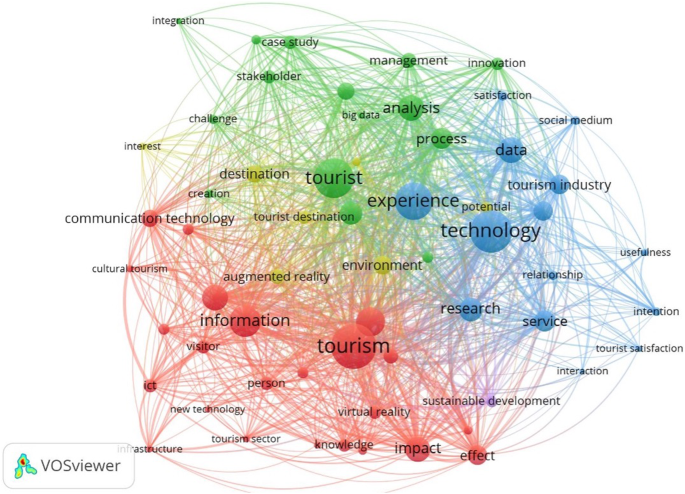
The same color indicates a close relationship between the keywords. The red network group focuses on tourism and information technology, the yellow network group concentrates on destinations and the environment, and the blue group emphasizes tourists and technology, the green group concerns tourists and analyses. Source: Own elaboration.
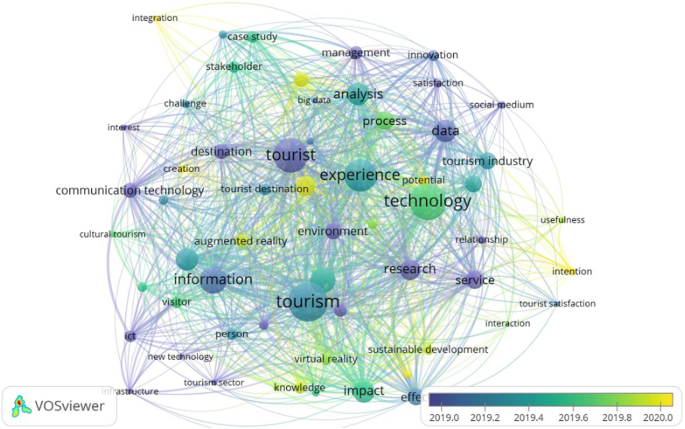
Darker colors indicate older keywords such as tourists, information, data, research, etc. and lighter colors show the recent hot keywords such as big data, AR, VR, sustainable development, etc. Source: Own elaboration.
After conducting a literature review on digital technology’s economic and social implications on sustainable tourism development over the last ten years and creating a density visualization network map, it can be concluded that tourist experience, information technology, augmented reality, and data are research hotspots. As a result, most studies on tourism sustainability in social and economic dimensions focus on the impact of digital technology on the tourist experience.
Even though they are all co-occurrence analyses of keywords in literature, the emphasis in each network map is different. Generally, overlay visualization and network visualization are comparable to a certain extent; however, the color differs in overlay visualization (Fig. 8 ). In the lower right corner, there is also a quantification table. Purple indicates that the keywords are older, while yellow indicates that they are more modern. For example, keywords such as big data, augmented reality, sustainable development, creation, and intention are yellow, indicating a recent research hotspot, but keywords such as communication technology, information, environment, and service are purple, indicating that these themes were formerly popular.
Results and discussion
The data were collected from 2012 until February 2022. Analysis of the published articles shows a significant increase in publications on digitalization and tourism sustainability development. In 2017, seven articles were published, 10 in 2018, 16 in 2019, and 23 in 2020 and 2021. Furthermore, there are 6 published in the first two months of 2022. These findings illustrate a rise in data availability for digitalization and sustainable tourism development research and suggest that researchers are considering this topic more seriously, demonstrating its value to academic research.
According to the findings, Sustainability was the top journal in published digital and tourism sustainability-related articles. This is followed by the International Journal of Tourism Research , Tourism Management , and Current Issues in Tourism . The number of publications on the relevant subject has increased steadily, particularly in recent years, indicating that this form of research is increasingly gaining attention. Research over the last decade has shown the existence of a certain number of empirical studies on the relationship between digitalization and tourism social and economic sustainability, and from the bibliometric analysis, it emerges that the current research direction on tourism social and economic sustainability has shifted from exploring ICT to AR and VR. Moreover, Tourism Management and Sustainability have the highest citation.
In summary, this study answers RQ1 using the bibliometric literature analysis, while a systematic literature review used to answer RQ2 and RQ3 is discussed in the conclusion and further recommendation sections.
The content of relevant articles published in WOS and Scopus in this research area over the last decade was visually analyzed through bibliometric and systematic literature analysis, and a total of 91 articles meeting the research criteria were selected to provide information on the status of the impact of digitalization on the social and economic aspects of sustainable tourism development, as well as to identify specific research fields and research topics. It can be concluded that the digitalization of the social dimension of tourism sustainability is more richly studied and explored from a more diverse perspective, considering not only the tourists’ but also the residents’ perspectives. There are two implications in the present study. The first is that this study pinpointed the knowledge gaps. Systematic literature review analysis is used in this study to identify the gaps in the existing body of research in tourism development. By reviewing the previous literature and synthesizing the findings, researchers can identify the areas receiving limited or much attention. This insight is valuable for policymakers, tourism planners, and researchers when dealing with specific areas where future research is warranted. Furthermore, the publication trend and popular research themes were also discussed in this study. This enables the policymaker and tourism planner to understand tourism development and the potential for improved policies and practices. The second implication is enabling evidence-based decision-making in tourism development. Researchers can identify patterns, trends, and best practices by synthesizing the findings from multiple studies. This evidence-based approach helps policymakers, destination managers, and tourism stakeholders make informed decisions and develop strategies grounded in research. However, there is a lack of a more comprehensive perspective to explore in an integrated manner. For example, social and economic sustainability development sometimes does not increase simultaneously, and perhaps there is a particular imbalance between the two when using certain digital technologies. Therefore, it can be observed from this study that there is a lack of research in the past ten years that has explored both the economic and social sustainability of tourism comprehensively and that future research could emphasize the integration of social and economic sustainability, even a synthesis study of three dimensions: environmental social, and economic.
Therefore, when considering future developments, several challenges were raised.
Lack of integration study of social and economic dimensions.
Lack of cooperative research among other disciplines.
Lack of suitable theory and conceptual model for sustainable development research in the tourism area.
Lack of universality in different regions based on proposed digital technology.
Lack of research from the perspective of subject education or particular population as the research object.
Based on this literature study, relatively few research topics about this research area are suggested, and the following research scope and questions can be referred to as a priority in the future research process so that research trends can be accurately grasped more quickly and efficiently.
What is the impact of digital technologies on the economic and social sustainability of destinations?
How do digital technologies used in cultural heritage tourism impact tourism sustainability?
What is the impact of digital technology on education?
How can tourism companies improve employee satisfaction, loyalty, and sustainable performance through digital technology?
How can we create a globally accessible and digital system for tourism destinations for sustainable development goals?
How does digitalization impact sustainable development from stakeholders’ perspectives?
The above suggestions and research direction recommendations can provide new research inspiration to researchers in the same field for future research, and this study is expected to help other researchers understand the current research trends related to the digitalization of sustainable tourism development.
Adeola O, Evans O (2020) ICT, infrastructure, and tourism development in Africa. Tour Econ 26(1):97–114
Google Scholar
Afeltra G, Alerasoul SA, Strozzi F (2021) The evolution of sustainable innovation: from the past to the future. Eur J Innov Manag 26(2):386–421. https://doi.org/10.1108/EJIM-02-2021-0113
Article Google Scholar
Ahuja AS, Polascik BW, Doddapaneni D, Byrnes ES, Sridhar J (2023) The digital metaverse: applications in artificial intelligence, medical education, and integrative health. Integr Med Res 12(1):100917
PubMed Google Scholar
Ammirato S, Felicetti AM, Linzalone R, Carlucci D (2021) Digital business models in cultural tourism. Int J Entrep Behav Res Scopus. https://doi.org/10.1108/IJEBR-01-2021-0070
Andreu L, Bigne E, Amaro S, Palomo J (2020) Airbnb research: an analysis in tourism and hospitality journals. Int J Cult Tour Hosp Res 14(1):2–20
Anser M, Adeleye B, Tabash M, Tiwari A (n.d.) Services trade–ICT–tourism nexus in selected Asian countries: new evidence from panel data techniques. Curr Issues Tour. https://doi.org/10.1080/13683500.2021.1965554
Bae S, Jung T, Moorhouse N, Suh M, Kwon O (2020) The influence of mixed reality on satisfaction and brand loyalty in cultural heritage attractions: a brand equity perspective. Sustainability 12(7). https://doi.org/10.3390/su12072956
Balakrishnan J, Dwivedi Y, Malik F, Baabdullah A (n.d.) Role of smart tourism technology in heritage tourism development. J Sustain Tour. https://doi.org/10.1080/09669582.2021.1995398
Bec A, Moyle B, Timms K, Schaffer V, Skavronskaya L, Little C (2019) Management of immersive heritage tourism experiences: a conceptual model. Tour Manag 72:117–120. https://doi.org/10.1016/j.tourman.2018.10.033
Berselli C, Pereira LA, Pereira T, Limberger PF (2022) Overtourism: residents’ perceived impacts of tourism saturation. Tour Anal 27(2):161–172
Bhatia A, Roy B, Kumar A (2022) A review of tourism sustainability in the era of Covid-19. J Stat Manag Syst 25(8):1871–1888
Boboc R, Duguleana M, Voinea G, Postelnicu C, Popovici D, Carrozzino M (2019) Mobile augmented reality for cultural heritage: following the footsteps of ovid among different locations in Europe. Sustainability 11(4). https://doi.org/10.3390/su11041167
Bonacini E, Tanasi D, Trapani P (2018) Digital heritage dissemination and the participatory storytelling project #iziTRAVELSicilia: the case of the Archaeological Museum of Syracuse (Italy). Acta IMEKO 7(3):31–41. https://doi.org/10.21014/acta_imeko.v7i3.584 . Scopus
Bramwell B, Lane B (2011) Critical research on the governance of tourism and sustainability. J Sustain Tour 19(4–5):411–421
Briciu A, Briciu V, Kavoura A (2020) Evaluating how “smart” Brasov, Romania can be virtually via a mobile application for cultural tourism. Sustainability 12(13). https://doi.org/10.3390/su12135324
Bruno F, Ricca M, Lagudi A, Kalamara P, Manglis A, Fourkiotou A, Papadopoulou D, Veneti A (2020) Digital technologies for the sustainable development of the accessible underwater cultural heritage sites. J Mar Sci Eng 8(11):955. https://doi.org/10.3390/jmse8110955
Buhalis D (2020) Technology in tourism-from information communication technologies to eTourism and smart tourism towards ambient intelligence tourism: a perspective article. Tour Rev 75(1):267–272
Buhalis D, Cheng ESY (eds) (2020) Exploring the use of chatbots in hotels: technology providers’ perspective. In: Information and communication technologies in tourism 2020: proceedings of the international conference in Surrey, United Kingdom, January. Springer International Publishing, 8–10. pp. 231–242
Buhalis D, Inversini A (eds) (2014) Tourism branding, identity, reputation co-creation, and word-of-mouth in the age of social media. In: Tourism management, marketing, and development: vol I: the importance of networks and ICTs. pp. 15–40
Buhalis D, Karatay N (eds) (2022) Mixed reality (MR) for generation Z in cultural heritage tourism towards metaverse. In: Information and communication technologies in tourism 2022: Proceedings of the ENTER 2022 ETourism conference, Springer, Cham, January 11–14, 2022. pp. 16–27
Buhalis D, Law R (2008) Progress in information technology and tourism management: 20 years on and 10 years after the Internet—the state of eTourism research. Tour Manag 29(4):609–623
Buhalis D, Leung D, Lin M (2023) Metaverse as a disruptive technology revolutionising tourism management and marketing. Tour Manag 97:104724
Buhalis D, Lin MS, Leung D (2022) Metaverse as a driver for customer experience and value co-creation: implications for hospitality and tourism management and marketing. Int J Contemp Hosp Manag 35(2):701–716
Buhalis D, Moldavska I (2022) Voice assistants in hospitality: using artificial intelligence for customer service. J Hosp Tour Technol 13(3):386–403
Caciora T, Herman GV, Ilieș A, Baias, Ștefan, Ilieș DC, Josan I, Hodor N (2021) The use of virtual reality to promote sustainable tourism: a case study of wooden churches historical monuments from Romania. Remote Sens 13(9):1758. https://doi.org/10.3390/rs13091758
Article ADS Google Scholar
Cai Z, Fang C, Zhang Q, Chen F (2021) Joint development of cultural heritage protection and tourism: the case of Mount Lushan cultural landscape heritage site. Herit Sci 9(1). https://doi.org/10.1186/s40494-021-00558-5
Camilleri MA (2018) The promotion of responsible tourism management through digital media. Tour Plan Dev 15(6):653–671. https://doi.org/10.1080/21568316.2017.1393772
Capocchi A, Vallone C, Pierotti M, Amaduzzi A (2019) Overtourism: A literature review to assess implications and future perspectives. Sustainability 11(12):3303
Carbone F (2017) International tourism and cultural diplomacy: a new conceptual approach towards global mutual understanding and peace through tourism. Tourism 65(1):61–74
Cavalcante WQ, de F, Coelho A, Bairrada CM (2021) Sustainability and tourism marketing: a bibliometric analysis of publications between 1997 and 2020 using VOSviewer software. Sustainability 13(9):4987
Chang W-J, Katrichis JM (2016) A literature review of tourism management (1990–2013): a content analysis perspective. Current Issues Tour 19(8):791–823
Chaudhary S, Kumar A, Pramanik M, Negi M (n.d.) Land evaluation and sustainable development of ecotourism in the Garhwal Himalayan region using geospatial technology and analytical hierarchy process. Environ Dev Sustain https://doi.org/10.1007/s10668-021-01528-4
Cocchia A (2014) Smart and digital city: a systematic literature review. Smart City p 13–43
Colicchia C, Strozzi F (2012) Supply chain risk management: a new methodology for a systematic literature review. Supply Chain Manag 17(4), 403–418
Comerio N, Strozzi F (2019) Tourism and its economic impact: a literature review using bibliometric tools. Tour Econ 25(1):109–131
Cranmer E, Urquhart C, Dieck M, Jung T (2021) Developing augmented reality business models for SMEs in tourism. Inf Manag 58(8). https://doi.org/10.1016/j.im.2021.103551
Croitoru A, Manoliu A (2016) BIG DATA—a new tool shaping the future of the tourism industry. In: Pamfilie R, Dinu V, Tachiciu L, Plesea D, Vasiliu C (eds) Basiq international conference: new trends in sustainable business and consumption, pp. 69–74
Cuesta-Valiño P, Bolifa F, Núñez-Barriopedro E (2020) Sustainable, smart and muslim-friendly tourist destinations. Sustainability 12(5):1778. https://doi.org/10.3390/su12051778
da Silva A (2021) In quest of a new AR technology application to enhance the sustainability of cultural tourism: the Olive Heritage in Madeira through the looking glass of a “Sandbox” approach. Eur J Tour Hosp Recreation 11(1):66–76. https://doi.org/10.2478/ejthr-2021-0007
De Lucia C, Pazienza P, Balena P (2021) How does ICT influence residents’ attitudes towards tourism as a driver of development? A generalised ordered logistic regression analysis: ICT for tourism as driver of development in lagging behind regions. Int J Tour Res jtr.2473. https://doi.org/10.1002/jtr.2473
del Vecchio P, Malandugno C, Passiante G, Sakka G (n.d.) Circular economy business model for smart tourism: the case of Ecobnb. Euromed J Bus. https://doi.org/10.1108/EMJB-09-2020-0098
Del Vecchio P, Mele G, Ndou V, Secundo G (2018) Open innovation and social big data for sustainability: evidence from the tourism industry. Sustainability 10(9). https://doi.org/10.3390/su10093215
Dionisio M, Silva C, Nisi V (2019) Fostering interaction between locals and visitors by designing a community-based tourism platform on a touristic island. In: Lamas D, Loizides F, Nacke L, Petrie H, Winckler M, Zaphiris P (eds) Human-Computer Interaction–INTERACT 2019: 17th IFIP TC 13 International Conference, Paphos, Cyprus, September 2–6, 2019, Proceedings, Part II 17, Springer International Publishing. vol 11747, pp. 768–787
Doborjeh Z, Hemmington N, Doborjeh M, Kasabov N (2022) Artificial intelligence: a systematic review of methods and applications in hospitality and tourism. Int J Contemp Hosp Manag 34(3):1154–1176
Donthu N, Kumar S, Mukherjee D, Pandey N, Lim WM (2021) How to conduct a bibliometric analysis: an overview and guidelines. J Bus Res 133:285–296. https://doi.org/10.1016/j.jbusres.2021.04.070
Duy N, Mondal S, Van N, Dzung P, Minh D, Das S (2020) A study on the role of web 4.0 and 5.0 in the sustainable tourism ecosystem of Ho Chi Minh City, Vietnam. Sustainability 12(17). https://doi.org/10.3390/su12177140
Dwivedi YK, Kshetri N, Hughes L, Slade EL, Jeyaraj A, Kar AK, Baabdullah AM, Koohang A, Raghavan V, Ahuja M (2023) “So what if ChatGPT wrote it?” Multidisciplinary perspectives on opportunities, challenges and implications of generative conversational AI for research, practice and policy. Int J Inf Manag 71:102642
Elkhwesky Z, El Manzani Y, Elbayoumi Salem I (2022) Driving hospitality and tourism to foster sustainable innovation: a systematic review of COVID-19-related studies and practical implications in the digital era. Tour Hosp Res 0(0). https://doi.org/10.1177/14673584221126792
Encalada L, Boavida-Portugal I, Ferreira C, Rocha J (2017) Identifying tourist places of interest based on digital imprints: towards a sustainable smart city. Sustainability 9(12). https://doi.org/10.3390/su9122317
Ferguson L (2011) Promoting gender equality and empowering women? Tourism and the third Millennium Development Goal. Current Issues Tour 14(3):235–249
Fernandez-Lores S, Crespo-Tejero N, Fernández-Hernández R (2022) Driving traffic to the museum: the role of the digital communication tools. Technol Forecast Soc Change Scopus 174. https://doi.org/10.1016/j.techfore.2021.121273
Feroz AK, Zo H, Chiravuri A (2021) Digital transformation and environmental sustainability: a review and research agenda. Sustainability 13(3):1530. https://doi.org/10.3390/su13031530
Filipiak BZ, Dylewski M, Kalinowski M (2020) Economic development trends in the EU tourism industry. Towards the digitalization process and sustainability. Qual Quant Scopus. https://doi.org/10.1007/s11135-020-01056-9
Franco M, Mota L (2021) Reopening for business post-COVID-19: augmented reality as a strategy for attracting visitors to a tourist destination. Eur J Tour Hosp Recreation 11(1):54–65. https://doi.org/10.2478/ejthr-2021-0006
Gajdosik T (2019) Big data analytics in smart tourism destinations. a new tool for destination management organizations ? In: Katsoni V, SegarraOna M (eds) Smart Tourism as a Driver for Culture and Sustainability: Fifth International Conference IACuDiT, Athens 2018, Springer International Publishing, pp. 15–33
Garrigos-Simon FJ, Narangajavana-Kaosiri Y, Lengua-Lengua I (2018) Tourism and sustainability: a bibliometric and visualization analysis. Sustainability 10(6):1976
Garzon J, Acevedo J, Pavon J, Baldiris S (2018) ARtour: Augmented Reality-based game to promote agritourism. In: DePaolis L, Bourdot P (eds) Augmented Reality, Virtual Reality, and Computer Graphics: 5th International Conference, AVR 2018, Otranto, Italy, June 24–27, 2018, Proceedings, Part I 5, Springer International Publishing, vol 10850, pp. 413–422
Giaccone SC, Bonacini E (2019) New technologies in smart tourism development: The #iziTRAVELSicilia experience. Tour Anal 24(3):341–354. https://doi.org/10.3727/108354219X15511864843867
Go H, Kang M (2023) Metaverse tourism for sustainable tourism development: tourism agenda 2030. Tour Rev 78(2):381–394
Goh E, King B (2020) Four decades (1980–2020) of hospitality and tourism higher education in Australia: developments and future prospects. J Hosp Tour Educ 32(4):266–272
Gomez-Oliva A, Alvarado-Uribe J, Parra-Merono M, Jara A (2019) Transforming communication channels to the co-creation and diffusion of intangible heritage in smart tourism destination: creation and testing in Ceuti (Spain). Sustainability 11(14). https://doi.org/10.3390/su11143848
Goralski MA, Tan TK (2020) Artificial intelligence and sustainable development. Int J Manag Educ 18(1):100330. https://doi.org/10.1016/j.ijme.2019.100330
Gössling S (2017) Tourism, information technologies and sustainability: an exploratory review. J Sustain Tour 25(7):1024–1041
Gössling S, Hall CM (eds) (2006) An introduction to tourism and global environmental change. In: Tourism and global environmental change. Routledge, pp. 1–33
Graziano T, Privitera D (2020) Cultural heritage, tourist attractiveness and augmented reality: Insights from Italy. J Herit Tour 15(6):666–679. https://doi.org/10.1080/1743873X.2020.1719116
Hammady R, Ma M, AL-Kalha Z, Strathearn C (2021) A framework for constructing and evaluating the role of MR as a holographic virtual guide in museums. Virtual Real 25(4):895–918. https://doi.org/10.1007/s10055-020-00497-9
Han H, Eom T, Al-Ansi A, Ryu HB, Kim W (2019) Community-based tourism as a sustainable direction in destination development: an empirical examination of visitor behaviors. Sustainability 11(10):10. https://doi.org/10.3390/su11102864
Handayani B, Korstanje ME (2017) Place brand authenticity in social media interaction: a postmodern perspective. Études Caribéennes 37–38, Article 37–38. https://doi.org/10.4000/etudescaribeennes.11182
Haque E, Sungsuwan T, Sanglimsuwan S (2021) Can social media be a tool for increasing tourists’ environmentally responsible behavior? Geoj Tour Geosites 38(4):1211–1222. https://doi.org/10.30892/gtg.38428-762
Hart C (2018) Doing a literature review: releasing the research imagination. Doing a Literature Review, p 1–352
Higgins-Desbiolles F, Carnicelli S, Krolikowski C, Wijesinghe G, Boluk K (2019) Degrowing tourism: rethinking tourism. J Sustain Tour 27(12):1926–1944. https://doi.org/10.1080/09669582.2019.1601732
Huang T, Liu B (2021) Augmented reality is human-like: how the humanizing experience inspires destination brand love. Technol Forecast Soc Change 170. https://doi.org/10.1016/j.techfore.2021.120853
Ivanov S, Gretzel U, Berezina K, Sigala M, Webster C (2019) Progress on robotics in hospitality and tourism: a review of the literature. J Hosp Tour Technol 10(4):489–521
Jamshidi D, Rousta A, Shafei R (2021). Social media destination information features and destination loyalty: does perceived coolness and memorable tourism experiences matter? Curr Issues Tour Scopus. https://doi.org/10.1080/13683500.2021.2019204
Jingen Liang L, Elliot S (2021) A systematic review of augmented reality tourism research: what is now and what is next? Tour Hosp Res 21(1):15–30
Kabassi K (2017) Evaluating websites of museums: state of the art. J Cult Herit 24:184–196. https://doi.org/10.1016/j.culher.2016.10.016
Kang H (2020) Impact of VR on impulsive desire for a destination. J Hosp Tour Manag 42:244–255. https://doi.org/10.1016/j.jhtm.2020.02.003
Kaźmierczak R, Szczepańska A, Kowalczyk C, Grunwald G, Janowski A (2021) Using AR technology in tourism based on the example of maritime educational trips—a conceptual model. Sustainability (Switzerland) Scopus 13(13). https://doi.org/10.3390/su13137172
Kim D, Kim S (2017) The role of mobile technology in tourism: patents, articles, news, and mobile tour app reviews. Sustainability 9(11):2082. https://doi.org/10.3390/su9112082
Kim H, Chang B (2020) A study on the effects of crowdfunding values on the intention to visit local festivals: focusing on mediating effects of perceived risk and e-WOM. Sustainability 12(8). https://doi.org/10.3390/su12083264
Kim K-H, Park D-B (2017) Relationships among perceived value, satisfaction, and loyalty: community-based ecotourism in Korea. J Travel Tour Mark 34(2):171–191. https://doi.org/10.1080/10548408.2016.1156609
Kim S, Kang Y (2020) Why do residents in an overtourism destination develop anti-tourist attitudes? An exploration of residents’ experience through the lens of the community-based tourism. Asia Pac J Tour Res 25(8):858–876
Ko Y, Song B (2021) Complementary cooperation of CCTV and UAV systems for tourism security and sustainability. Sustainability 13(19). https://doi.org/10.3390/su131910693
Koohang A, Nord JH, Ooi K-B, Tan GW-H, Al-Emran M, Aw EC-X, Baabdullah AM, Buhalis D, Cham T-H, Dennis C (2023) Shaping the metaverse into reality: a holistic multidisciplinary understanding of opportunities, challenges, and avenues for future investigation. J Comput Inf Syst 63(3):735–765
Korstanje ME, George BP (2020) Education as a strategy to tackle over tourism for overtourism and inclusive sustainability in the twenty-first century. In: Séraphin H, Gladkikh T, Thanh TV (eds) Overtourism: causes, implications and solutions. Springer International Publishing, pp. 341–359
Korstanje ME, Seraphin H, Maingi SW (eds) (2022) Tourism through troubled times: emerging issues and new pathways for the 21st century tourism. In: Tourism through troubled times. Emerald Publishing Limited, pp. 1–5
Kotsopoulos KI, Chourdaki P, Tsolis D, Antoniadis R, Pavlidis G, Assimakopoulos N (2019) An authoring platform for developing smart apps which elevate cultural heritage experiences: a system dynamics approach in gamification. J Ambient Intell Humaniz Comput Scopus. https://doi.org/10.1007/s12652-019-01505-w
Koukopoulos Z, Koukopoulos D (2018) Intelligent management of outdoor cultural events promoting exploitation in smart city environments. In: Katsoni V, Velander K (eds) Innovative Approaches to Tourism and Leisure: Fourth International Conference IACuDiT, Athens 2017, Springer International Publishing, pp. 303–319
Koukopoulos Z, Koukopoulos D (2019) Evaluating the usability and the personal and social acceptance of a participatory digital platform for cultural heritage. Heritage 2(1). https://doi.org/10.3390/heritage2010001
Kreishan FM (2010) Tourism and economic growth: the case of Jordan. Eur J Soc Sci 15(2):63–68
Kumar N, Kumar RR (2020) Relationship between ICT and international tourism demand: a study of major tourist destinations. Tour Econ 26(6):908–925
Law R, Buhalis D, Cobanoglu C (2014) Progress on information and communication technologies in hospitality and tourism. Int J Contemp Hosp Manag 26(5):727–750
Lee W, Kim Y (2021) Does VR tourism enhance users’ experience? Sustainability 13(2). https://doi.org/10.3390/su13020806
Lemmi E, Deri M (2020) A new model for the “tourism renaissance”: the case study of the Tuscan Village of San Pellegrino in Alpe. Almatourism—J Tour Cult Territ Dev 11(22):19–43. https://doi.org/10.6092/issn.2036-5195/12345
León-Gómez A, Ruiz-Palomo D, Fernández-Gámez MA, García-Revilla MR (2021) Sustainable tourism development and economic growth: bibliometric review and analysis. Sustainability 13(4):2270
Li J, Xu L, Tang L, Wang S, Li L (2018) Big data in tourism research: a literature review. Tour Manag 68:301–323
Li W (2006) Community decisionmaking participation in development. Ann Tour Res 33(1):132–143
Lim C, Mostafa N, Park J (2017) Digital Omotenashi: toward a smart tourism design systems. Sustainability 9(12). https://doi.org/10.3390/su9122175
Lin M, Li F, Zhou H (2020a) A research on the combination of oblique photography and mobile applications based on the sustainable development of tourism. Sustainability 12(9). https://doi.org/10.3390/su12093501
Lin S, Juan P, Lin S (2020b) A TAM framework to evaluate the effect of smartphone application on tourism information search behavior of foreign independent travelers. Sustainability 12(22). https://doi.org/10.3390/su12229366
Liu Z, Lan J, Chien F, Sadiq M, Nawaz MA (2022) Role of tourism development in environmental degradation: a step towards emission reduction. J Environ Manag 303:114078
CAS Google Scholar
Lopes R, Malik O, Kumpoh A, Keasberry C, Hong O, Lee S, Liu Y & IEEE (2019) Exploring digital architectural heritage in Brunei Darussalam: towards heritage safeguarding, smart tourism, and interactive education. 2019 IEEE Fifth International Conference on Multimedia Big Data (BigMM) At: Singapore Proceedings. p 383–390. https://doi.org/10.1109/BigMM.2019.00067
Lou L, Tian Z, Koh J (2017) Tourist satisfaction enhancement using mobile QR code payment: an empirical investigation. Sustainability 9(7). https://doi.org/10.3390/su9071186
Loureiro SMC, Nascimento J (2021) Shaping a view on the influence of technologies on sustainable tourism. Sustainability 13(22):12691. https://doi.org/10.3390/su132212691
Lu J, Xiao X, Xu Z, Wang C, Zhang M, Zhou Y (2022) The potential of virtual tourism in the recovery of tourism industry during the COVID-19 pandemic. Current Issues Tour 25(3):441–457. https://doi.org/10.1080/13683500.2021.1959526
Ma D, Hu J, Yao F (2021) Big data empowering low-carbon smart tourism study on low-carbon tourism O2O supply chain considering consumer behaviors and corporate altruistic preferences. Comput Ind Eng 153. https://doi.org/10.1016/j.cie.2020.107061
Maiorescu I, Negrea M, Popescu D, Sabou G (2016) Best practices regarding the use of electronic environment for Romanian tourism development. Amfiteatru Econ 18(42):474–486
Manglis A, Fourkiotou A, Papadopoulou D (2021) A roadmap for the sustainable valorization of accessible underwater cultural heritage sites. Heritage 4(4):4700–4715. https://doi.org/10.3390/heritage4040259
Manoharan A, Singal M (2017) A systematic literature review of research on diversity and diversity management in the hospitality literature. Int J Hosp Manag 66:77–91
Martinez-Grana A, Goy J, Gonzalez-Delgado J, Cruz R, Sanz J, Cimarra C, de Bustamante I (2019) 3D Virtual itinerary in the geological heritage from natural areas in Salamanca-Avila-Caceres, Spain. Sustainability 11(1). https://doi.org/10.3390/su11010144
Martins J, Gonçalves R, Branco F, Barbosa L, Melo M, Bessa M (2017) A multisensory virtual experience model for thematic tourism: a Port wine tourism application proposal. J Destin Mark Manag 6(2):103–109. https://doi.org/10.1016/j.jdmm.2017.02.002 . Scopus
Mehraliyev F, Chan ICC, Choi Y, Koseoglu MA, Law R (2020) A state-of-the-art review of smart tourism research. J Travel Tour Mark 37(1):78–91
Miceli A, Hagen B, Riccardi M, Sotti F, Settembre-Blundo D (2021) Thriving, not just surviving in changing times: how sustainability, agility and digitalization intertwine with organizational resilience. Sustainability 13(4). https://doi.org/10.3390/su13042052
Mirzaalian F, Halpenny E (2019) Social media analytics in hospitality and tourism: a systematic literature review and future trends. J Hosp Tour Technol 10(4):764–790
Mohd NS, Ismail HN, Jaafar SMRS, Isa N (2020) Experience co-creation of city visitors from the perspective of technological engagement. IOP Conf Ser Earth Environ Sci Scopus 447(1). https://doi.org/10.1088/1755-1315/447/1/012002
Monterroso-Checa A, Redondo-Villa A, Gasparini M, Hornero A, Iraci B, Martin-Talaverano R, Moreno-Escribano J, Munoz-Cadiz J, Murillo-Fragero J, Obregon-Romero R, Vargas N, Young S, Yuste R, Zarco-Tejada P (2020) A heritage science workflow to preserve and narrate a rural archeological landscape using virtual reality: the Cerro del Castillo of Belmez and its surrounding environment (Cordoba, Spain). Appl Sci-Basel 10(23). https://doi.org/10.3390/app10238659
Moya‐Anegón SGFde, Vargas‐Quesada B, Chinchilla‐Rodríguez Z, Corera‐Álvarez E, Munoz‐Fernández FJ, Herrero‐Solana V (2007) Visualizing the marrow of science. J Am Soc Inf Sci Technol 58(14):2167–2179
Mulet-Forteza C, Martorell-Cunill O, Merigó JM, Genovart-Balaguer J, Mauleon-Mendez E (2018) Twenty five years of the Journal of Travel & Tourism Marketing: a bibliometric ranking. J Travel Tour Mark 35(9):1201–1221
Muñoz-Leiva F, Hernández-Méndez J, Gómez-Carmona D (2019) Measuring advertising effectiveness in Travel 2.0 websites through eye-tracking technology. Physiol Behav 200:83–95
Muthuraman S, Al Haziazi M & IEEE (2019) Smart tourism destination—new exploration towards sustainable development in Sultanate of Oman. In 2019 5th International Conference on Information Management (ICIM). p 332–335
Mwinuka OH (2017) Reviewing the role of tourism marketing in successful sustainable tourist destinations. Afr J Hosp Tour Leis 6(2):1–11
Nascimento J, Loureiro SMC (2022) The impact of augmented and virtual reality for sustainable tourism. In: Jung T, Dieck MCT, Loureiro SMC (eds) International XR conference. Springer, pp. 148–156
Navarro-Drazich D, Lorenzo C (2021) Sensitivity and vulnerability of international tourism by covid crisis: South America in context. Res Glob 3:100042. https://doi.org/10.1016/j.resglo.2021.100042
Obonyo G, Okeyo D, Kambona O (2018) Effect of management practices on actual ICT application in Kenyan hotels: a PLS-SEM approach. Int J Hosp Tour Adm 19(2):142–166. https://doi.org/10.1080/15256480.2017.1305311
Palumbo R (2021) Enhancing museums’ attractiveness through digitization: an investigation of Italian medium and large-sized museums and cultural institutions. Int J Tour Res Scopus. https://doi.org/10.1002/jtr.2494
Pavlidis G, Solomou A, Stamouli S, Papavassiliou V, Kritsis K, Kiourt C, Sevetlidis V, Karetsos G, Trigas P, Kougioumoutzis K, Goula K, Proutsos N, Pistikos G, Theodoridis Y, Galanopoulos E, Paraskevas N, Foskolou U, Papadopoulos M (2022) Sustainable ecotourism through cutting-edge technologies. Sustainability 14(2). https://doi.org/10.3390/su14020800
Pehlivanides G, Monastiridis K, Tourtas A, Karyati E, Ioannidis G, Bejelou K, Antoniou V, Nomikou P (2020) The virtualdiver project. Making Greece’s underwater cultural heritage accessible to the public. Appl Sci (Switzerland) 10(22):1–22. https://doi.org/10.3390/app10228172
Article CAS Google Scholar
Permatasari P, Qohar A, Rachman A (2020) From web 1.0 to web 4.0: the digital heritage platforms for UNESCO’s heritage properties in Indonesia. Virtual Archaeol Rev 11(23):75–93. https://doi.org/10.4995/var.2020.13121
Phoong SW, Phoong SY, Ho ST (2022) Technology, organisation and environment factor on mobile payment implementation: focus on SMEs in Malaysia. Int J Mob Commun 20(5):519–540. https://doi.org/10.1504/IJMC.2022.125420
Phoong SW, Phoong SY, Khek SL (2022). Systematic Literature Review With Bibliometric Analysis on Markov Switching Model: Methods and Applications, Sage Open 12(2). https://doi.org/10.1177/21582440221093062
Pica A, Reynard E, Grangier L, Kaiser C, Ghiraldi L, Perotti L, Del Monte M (2018) GeoGuides, urban geotourism offer powered by mobile application technology. Geoheritage 10(2):311–326. https://doi.org/10.1007/s12371-017-0237-0
Pilkington A, Meredith J (2009) The evolution of the intellectual structure of operations management—1980–2006: a citation/co-citation analysis. J Oper Manag 27(3):185–202
Pitoska E (2013) E-tourism: the use of internet and information and communication technologies in tourism: the case of hotel units in peripheral areas. In: Jankovic S, Jurdana D (eds) Tourism in Southern and Eastern Europe. vol 2. WOS:000323235000025, pp. 335–344
Pizam A, Ozturk AB, Balderas-Cejudo A, Buhalis D, Fuchs G, Hara T, Meira J, Revilla MRG, Sethi D, Shen Y (2022) Factors affecting hotel managers’ intentions to adopt robotic technologies: a global study. Int J Hosp Manag 102:103139
Rahmadian E, Feitosa D, Zwitter A (2022) A systematic literature review on the use of big data for sustainable tourism. Current Issues Tour 25(11):1711–1730
Ramos-Soler I, Martinez-Sala A, Campillo-Alhama C (2019) ICT and the sustainability of world heritage sites. Analysis of senior citizens’ use of tourism apps. Sustainability 11(11). https://doi.org/10.3390/su11113203
Ruhanen L, Moyle C, Moyle B (2018) New directions in sustainable tourism research. Tour Rev 74(2):138–149. https://doi.org/10.1108/TR-12-2017-0196
Saarinen J, Rogerson CM (2014) Tourism and the millennium development goals: perspectives beyond 2015. Tour Geogr 16(1):23–30. https://doi.org/10.1080/14616688.2013.851269
Saarinen J, Rogerson C, Manwa H (2011) Tourism and millennium development goals: tourism for global development? Current Issues Tour 14(3):201–203. https://doi.org/10.1080/13683500.2011.555180
Scott N, Zhang R, Le D, Moyle B (2019) A review of eye-tracking research in tourism. Current Issues Tour 22(10):1244–1261
Shafiee M, Shafiee M, Shams H, Yahai M, Golchin H & IEEE (2013) ICT capacities in creating sustainable urban tourism and its effects on resident quality of life (WOS:000326046500028). In: Shafiee MM, Shafiee MM, Shams H, Yahai MR, Golchin H (eds) 2013 7th international conference on E-commerce in developing countries: with focus on E-Security (ECDC), IEEE
Sharmin F, Sultan M, Badulescu D, Badulescu A, Borma A, Li B (2021) Sustainable destination marketing ecosystem through smartphone-based social media: the consumers’ acceptance perspective. Sustainability 13(4). https://doi.org/10.3390/su13042308
Shehzad K, Liu X, Rauf A, Arif M, Mazhar S, Sohail N, Amin W (2019) Revolutionising tourism development in China: an effective role of ICT and Western Silk Road project. Asia Pac J Tour Res 24(9):965–977
Singh S (2017) Mobile money for promoting conservation and community-based tourism and ecotourism in underdeveloped regions. Tour Recreation Res 42(1):108–112. https://doi.org/10.1080/02508281.2016.1251011
Streimikiene D, Svagzdiene B, Jasinskas E, Simanavicius A (2021) Sustainable tourism development and competitiveness: the systematic literature review. Sustain Dev 29(1):259–271
Stylos N, Zwiegelaar J, Buhalis D (2021) Big data empowered agility for dynamic, volatile, and time-sensitive service industries: the case of tourism sector. Int J Contemp Hosp Manag 33(3):1015–1036
Talafubieke M, Mai S, Xialifuhan N (2021) Evaluation of the virtual economic effect of tourism product emotional marketing based on virtual reality. Front Psychol 12. https://doi.org/10.3389/fpsyg.2021.759268
Tan W, Shrestha D, Jeong S (2019) Digital tourism development and sustainability model for Nepal. In: Shen W, Paredes H, Luo J, Barthes J (eds) 2019 IEEE 23rd International Conference on Computer Supported Cooperative Work in Design (CSCWD). IEEE, pp. 182–187
Taylor JP (2001) Authenticity and sincerity in tourism. Ann Tour Res 28(1):7–26
ADS Google Scholar
Telfer DJ, Sharpley R (2015) Tourism and development in the developing world. Routledge
Theocharidis A, Argyropoulou M, Karavasilis G, Vrana V, Kehris E (2020) An approach towards investigating factors affecting intention to book a hotel room through social media. Sustainability 12(21). https://doi.org/10.3390/su12218973
tom Dieck MC, Jung T, Han D-I (2016) Mapping requirements for the wearable smart glasses augmented reality museum application. J Hosp Tour Technol 7(3):230–253. https://doi.org/10.1108/JHTT-09-2015-0036 . Scopus
Tsai T-H, Chang H-T, Lin Y-W, Yu M-C, Lien P-J, Yan W-C, Ho W-L (2018) Emerging social media and social networks analysis transforms the tourism industry: living green smart tourism ecosystem. In: Antona M, Stephanidis C (eds) Universal Access in Human-Computer Interaction. Virtual, Augmented, and Intelligent Environments, Springer International Publishing, vol. 10908, pp. 583–590
Tscheu F, Buhalis D (eds) (2016) Augmented reality at cultural heritage sites. In: Proceedings of the international conference on information and communication technologies in tourism, Bilbao, Spain, Springer, Cham, February 2–5. pp. 607–619
Tussyadiah IP, Wang D, Jung TH, Tom Dieck MC (2018) Virtual reality, presence, and attitude change: empirical evidence from tourism. Tour Manag 66:140–154
Ülker P, Ülker M, Karamustafa K (2023) Bibliometric analysis of bibliometric studies in the field of tourism and hospitality. J Hosp Tour Insights 6(2):797–818
Um T, Jia J, Xiaorui T, Chung N (2021) Technology readiness as moderator for satisfaction and destination loyalty in augmented reality environments. Asia Pac J Inf Syst 31(2):220–235. https://doi.org/10.14329/apjis.2021.31.2.220
United Nations Transforming our world: the 2030 Agenda for Sustainable Development. https://sdgs.un.org/2030agenda
Van NTT, Vrana V, Duy NT, Minh DXH, Dzung PT, Mondal SR, Das S (2020) The role of human–machine interactive devices for post-COVID-19 innovative sustainable tourism in Ho Chi Minh City, Vietnam. Sustainability 12(22):9523. https://doi.org/10.3390/su12229523
Vitezic V, Car T, Simunic M (2015) Managing innovative technology in the hotel industry—response to growing consumer preferences. In: Jankovic S, Jurdana D (eds) Tourism in Southern and Eastern Europe, vol 3, pp. 467–478
Wang F, Liu Z, Shang S, Qin Y, Wu B (2019) Vitality continuation or over-commercialization? Spatial structure characteristics of commercial services and population agglomeration in historic and cultural areas. Tour Econ 25(8):1302–1326
Wang G, Wang H, Wang L (2023) Research trends in tourism and hospitality from 1991 to 2020: an integrated approach of corpus linguistics and bibliometrics. J Hosp Tour Insights 6(2):509–529
Wang Y, Lin Y-J, Lin B-S (2020) The factors that affect usage intentions and travel intentions of travel-related WeChat official accounts. Sustainability (Switzerland) 12(15). https://doi.org/10.3390/su12156108
Wei W (2019) Research progress on virtual reality (VR) and augmented reality (AR) in tourism and hospitality: a critical review of publications from 2000 to 2018. J Hosp Tour Technol 10(4):539–570
Winter PL, Selin S, Cerveny L, Bricker K (2020) Outdoor recreation, nature-based tourism, and sustainability. Sustainability 12(1):1. https://doi.org/10.3390/su12010081
Xie X, Zhang W (2021) Regulation mechanism of spatial capacity of tourist resources in scenic spots based on Internet of things technology. Complexity https://doi.org/10.1155/2021/3934894
Yalina N, Rozas IS (2020) Digital workplace: digital transformation for environmental sustainability. IOP Conf Ser: Earth Environ Sci 456(1):012022. https://doi.org/10.1088/1755-1315/456/1/012022
Yang J, Yang R, Chen M-H, Su C-HJ, Zhi Y, Xi J (2021) Effects of rural revitalization on rural tourism. J Hosp Tour Manag 47:35–45
Yin C, Jung T, Dieck M, Lee M (2021) Mobile augmented reality heritage applications: meeting the needs of heritage tourists. Sustainability 13(5). https://doi.org/10.3390/su13052523
Yovcheva Z, Buhalis D, Gatzidis C (2012) Smartphone augmented reality applications for tourism. E-Rev Tour Res 10(2):63–66
Yuce A, Arasli H, Ozturen A, Daskin M (2020) Feeling the service product closer: triggering visit intention via virtual reality. Sustainability 12(16). https://doi.org/10.3390/su12166632
Zhang C, Fyall A, Zheng Y (2015) Heritage and tourism conflict within world heritage sites in China: a longitudinal study. Current Issues Tour 18(2):110–136
Zhao J, Li S-M (2018) The impact of tourism development on the environment in China. Acta Sci Malays 2(1):1–4
MathSciNet ADS Google Scholar
Zhong L, Sun S, Law R, Li X (2021) Tourism crisis management: evidence from COVID-19. Current Issues Tour 24(19):2671–2682. https://doi.org/10.1080/13683500.2021.1901866
Zhou C, Sotiriadis M (2021) Exploring and evaluating the Impact of ICTs on culture and tourism industries’ convergence: evidence from China. Sustainability 13(21). https://doi.org/10.3390/su132111769
Zubiaga M, Izkara J, Gandini A, Alonso I, Saralegui U (2019) Towards smarter management of overtourism in historic centres through visitor-flow monitoring. Sustainability 11(24). https://doi.org/10.3390/su11247254
Download references
Acknowledgements
This research is supported by the Universiti Malaya International Collaboration Grant, grant number ST013-2022.
Author information
Authors and affiliations.
Department of Decision Science, Universiti Malaya, Kuala Lumpur, Malaysia
Chunyu Jiang & Seuk Wai Phoong
You can also search for this author in PubMed Google Scholar
Corresponding author
Correspondence to Seuk Wai Phoong .
Ethics declarations
Competing interests.
The authors declare no competing interests.
Ethical approval
This article does not contain any studies with human participants performed by any of the authors.
Informed consent
Additional information.
Publisher’s note Springer Nature remains neutral with regard to jurisdictional claims in published maps and institutional affiliations.
Rights and permissions
Open Access This article is licensed under a Creative Commons Attribution 4.0 International License, which permits use, sharing, adaptation, distribution and reproduction in any medium or format, as long as you give appropriate credit to the original author(s) and the source, provide a link to the Creative Commons license, and indicate if changes were made. The images or other third party material in this article are included in the article’s Creative Commons license, unless indicated otherwise in a credit line to the material. If material is not included in the article’s Creative Commons license and your intended use is not permitted by statutory regulation or exceeds the permitted use, you will need to obtain permission directly from the copyright holder. To view a copy of this license, visit http://creativecommons.org/licenses/by/4.0/ .
Reprints and permissions
About this article
Cite this article.
Jiang, C., Phoong, S.W. A ten-year review analysis of the impact of digitization on tourism development (2012–2022). Humanit Soc Sci Commun 10 , 665 (2023). https://doi.org/10.1057/s41599-023-02150-7
Download citation
Received : 25 April 2023
Accepted : 11 September 2023
Published : 07 October 2023
DOI : https://doi.org/10.1057/s41599-023-02150-7
Share this article
Anyone you share the following link with will be able to read this content:
Sorry, a shareable link is not currently available for this article.
Provided by the Springer Nature SharedIt content-sharing initiative
Quick links
- Explore articles by subject
- Guide to authors
- Editorial policies
World Travel Guide - Official Destination Guides and Travel Stories
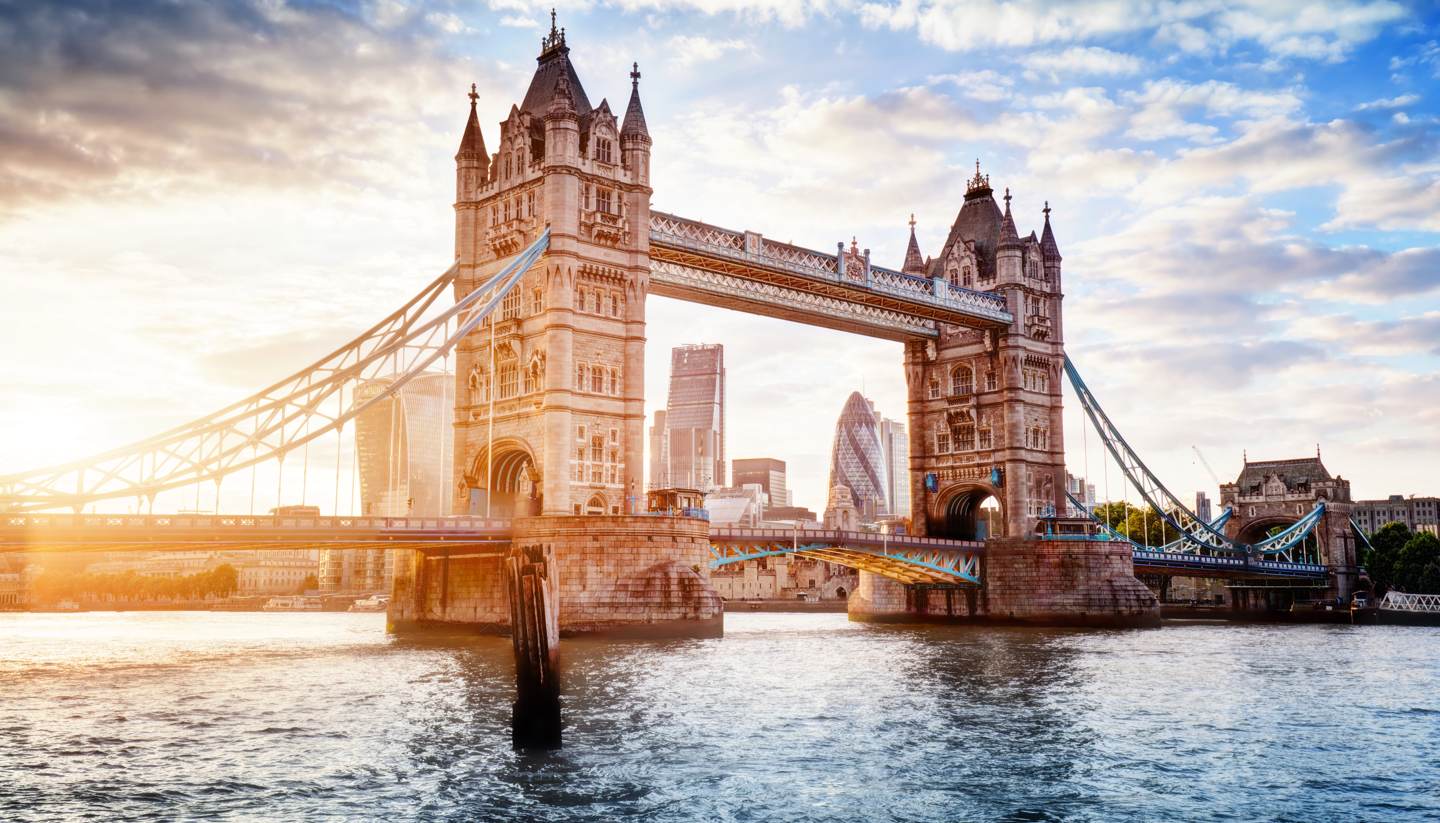
World Travel Guide
Editorial Foreword
The World Travel Guide (WTG) is the flagship digital consumer brand within the Columbus Travel Media portfolio . Available in English, German, and Spanish versions, the WTG provides detailed and accurate travel content designed to inspire global travellers. It covers all aspects, from cities to airports, cruise ports to ski and beach resorts, attractions to events, and it also includes offbeat travel news, stories, quizzes and guides for adventurous travellers.
Travel Features
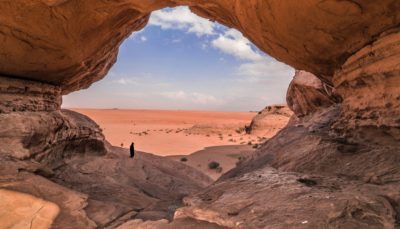
Saudi Arabia – redefining a nation through tourism
Saudi Arabia is on a mission to transform itself into one of the world's top tourist destinations by 2030
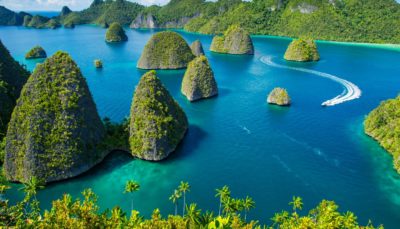
Indonesian island hopping: 11 of the best islands
Indonesia's accessible island chains allow travellers in search of blissful beach scenes and tropical adventure to island-hop to their heart's content

Bike-friendly cities around the world
Cycling is kind to your health, your wallet and the environment; it is also an excellent way to take in the city

16 lesser-known but Instagram-worthy European cities
Forget big cities like Amsterdam and London, we find 16 smaller but stunning cities in Europe that can light up your Instagram and rack up likes
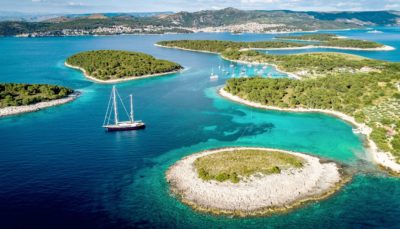
Experience Croatia on the water
Sun-kissed Croatia is most magical when seen from its turquoise waters, says CroatiaLuxuryGulet.com
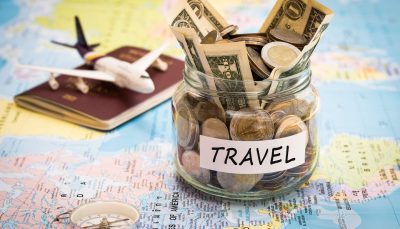
Holiday on a budget: 21 great travel tips
If you’re craving a break but feeling the squeeze, don’t panic. It’s possible to travel on a budget without compromising on quality
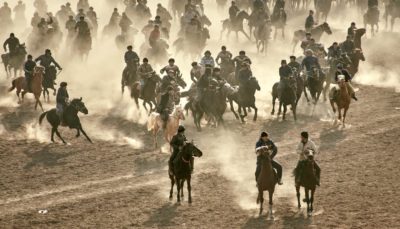
Getting high: 13 of the best adrenaline activities
From death-defying heights to nail-biting adventures, these adrenaline activities will definitely get your heart pumping
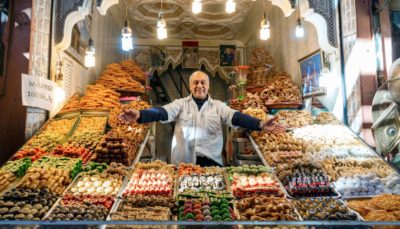
Seven days in Marrakech
Make the most of a week in Marrakech, including day trips to Ourika and the Atlas Mountains, with our seven-day guide and travel tips
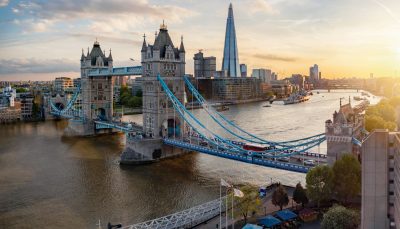
My secret London
London has a curious air of quirkiness enhanced by a string of lesser-known nooks that locals have kept close to their chests, writes Thomas Clarke
Food and Drink

Los Angeles food & drink guide: 10 things to try in Los Angeles, California
From celebrity chefs to timeless burger joints, lively Los Angeles has a wide range of dishes to impress you; here are the top 10 things to try

London food & drink guide: 10 things to try in London
As one of the most diverse cities in the world, London’s culinary scene offers an eclectic mixture of British classics and modern, multicultural cuisine

Are eggs good or bad for you?
Chicken eggs are nutritious and versatile, but are they good or bad for you?

Italian wine for major occasions
Great wine can amp up your mood and enhance your experience, and this guide can help you choose fantastic Italian wine for major foodie and special occasions
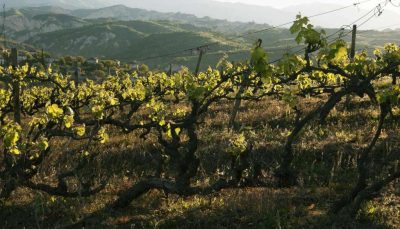
The complete guide to Bulgarian wine
Bulgaria is not yet a well-known wine country, but that is about to change as Bulgarian wineries are carving an admirable niche
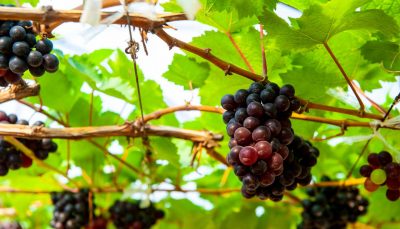
Thai Wine – A remarkable success story
A feat to be admired, we take you through Thai wine’s remarkable journey to success
City Guides
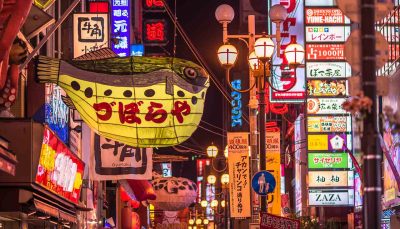
Bustling and energetic, Osaka is a thriving metropolis with a distinct commercial culture and with a regional identity that sets it apart from elsewhere in Japan.

Paris rarely disappoints. Home to beautiful architecture, arresting art and the world’s finest restaurants, only the hard–hearted will leave the City of Light without falling in love.
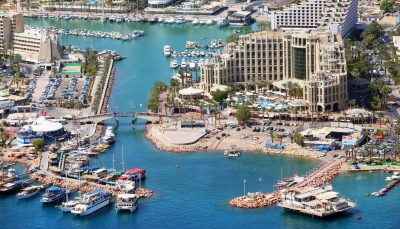
Sandwiched between the Red Sea and the mighty Negev desert, Eilat is a water sport and desert adventure paradise. The southernmost city of Israel has all the hallmarks of a fantastic sun and fun holiday.
Country/ State/ Region Guides
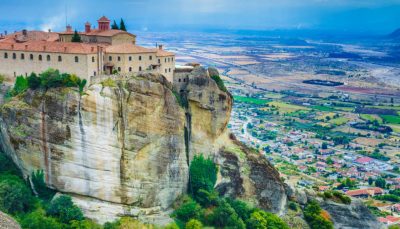
A flavourful melting pot of sparkling nightspots, fresh seafood, sizzling Mediterranean passion and mythical legend, Greece is a fascinating and enchanting destination.
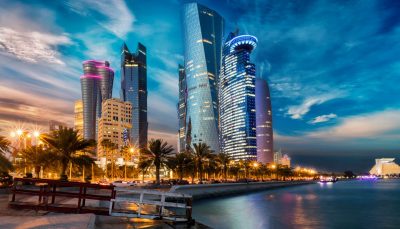
The eyes of the world are on Qatar right now. Following the discovery of oil in the 1940s, this small Gulf state has been catapulted from a small fishing and trading hub to one of the richest (per capita) countries in the world.
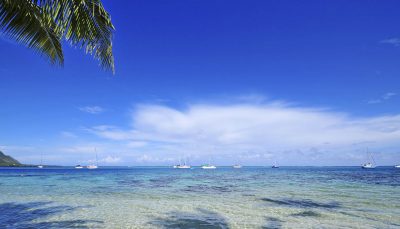
The Islands of Tahiti
The Islands of Tahiti are known for their laid-back vibes. Expect romantic sunsets and giant curls of turquoise breaking over reefs. Remote and pristine, the islands give you a glimpse of paradise on Earth.
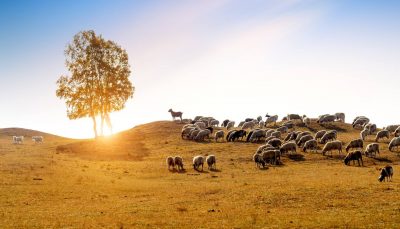
Mongolia is far-flung and little visited yet has much to offer, from the stunning scenery and wildlife of mountains and deserts to the emerging luxury hotels and restaurants of capital Ulaanbaatar.
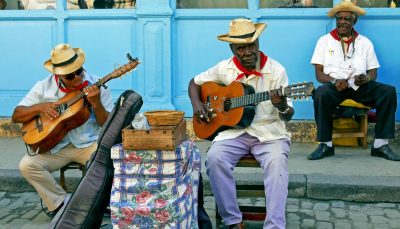
Much like the varying conditions of classic cars, Havana appears to be in a constant state of restoration. A mishmash of beautifully restored colonial buildings rubs shoulders with dilapidated tenements of regular Cubans.
© Columbus Travel Media Ltd. All rights reserved 2024
- This is an Ad-Free website
- Learn AI Jobs skills
- Blockchain Courses
- Digital Jobs Offers

Digital Tourism Marketing is an indispensable tool to work in the tourism sector. Today people predominantly use digital channels such as social media, websites, and Google to research, plan and book their travel, be it for business or pleasure.
Therefore, it becomes necessary to know the market and learn to use the main tools of the sector to adapt to changes and keep up with an increasingly computerized target. The Millenial category (born in ’81/’95) nowadays represents two-thirds of the purchasing power and spends around 5 hours a day online.
It follows that an accommodation facility or a hotel that does not have Digital Tourism Marketing strategies behind it or is not well indexed on the SEO side of Google could have difficulty making itself attractive or even just visible to this large slice of the market.
Added to this is that the tourism sector actually embraces a large sector with very varied services, often even in opposition to each other. You can go from accommodation facilities to luxury hotels, from campsites, to cruise ships…

A sector that must therefore satisfy very different needs, requirements, and needs and which must provide for very different Digital Tourism Marketing strategies. Becoming an expert in the field can be an absolutely winning move, but one may be necessary in-depth knowledge in multiple areas of web marketing.
In the meantime, I advise you to dedicate a few minutes of your time to think about the idea of attending a Course in Digital Marketing , which provides complete preparation in the digital field and is able to give you the basic knowledge necessary to grow your tourism business.
In this article, I will explain to you what it is and what the main outlets of the sector can be. In particular, I will tell you:
- What is meant by Digital Tourism Marketing and why it is important;
- Who is a tourism marketing strategy useful for?
- What are the tourism web marketing tools;
- Who deals with Digital Marketing for Tourism.
Finally, I will give you some tips for developing an effective Digital Tourism Marketing strategy.
What is Tourism Digital Marketing and why is it important
Digital Tourism Marketing by definition is the set of all those online activities aimed at promoting an accommodation facility, a hotel, a holiday resort, or any other service/product related to tourism, through the use of digital tools and channels such as social media, email marketing, or a website.
Not a single action, therefore, but a synergistic set of tools, channels, and strategies to build, plan, and implement a comprehensive communication plan. I have already mentioned that today most of the actions related to tourism are carried out online.
Buying a plane ticket, booking an overnight stay in a hotel or accommodation facility, renting a car: everything takes place on the web, making it almost obsolete to go to physical places for direct bookings. This makes it essential to know the tools of digital promotion in the tourism field, but above all being able to integrate them effectively to stand out in the enormous competition in the sector.
By now all areas are gearing up to increasingly broaden the scope of their strategies, using as many channels as possible to reach their target and bridge the gap with their audience. Digital Marketing for Tourism requires a lot of work , reactivity, and passion to achieve the goal.
Breaking down the distance with the public doesn’t just mean generating brand awareness, that is, making oneself known to the reference target, but also building a direct dialogue with the interlocutor and therefore cutting out the various intermediaries that could get in the way of the customer journey that goes from the question to the booking to the payment.
It might seem trivial, but the more convoluted the user’s decision-making mechanism is, the lower the chances of the user turning into a customer. In the case of the tourism sector, then, the intermediaries can be infinite: the search starts online with Google, but there are specialized portals and aggregators, travel bloggers and influencers, organic and paid ads…
A real jungle that you must know, but above all know how to manage if you want to be noticed and you want to build a one-to-one relationship of trust with your future client.
Furthermore, a good Digital Tourism Marketing strategy can be useful for the revenue Management of your tourist facility, whether it is a hotel or an accommodation facility. What is Revenue Management? If “revenue” means “earnings”, it is easy to understand what I am talking about in short, it is about maximizing your company’s earnings through a series of actions that go hand in hand with Digital Tourism Marketing.
But as if the two strategies moved together, digital channels can help maximize the occupancy of the structure, optimize the pricing for both parties and therefore help increase turnover. However, it is not possible to do good Revenue Management without a digital strategy behind it, and specializing in web marketing could be essential.
Web professionals are highly sought after. Find out if you have the right skills in online marketing

Who is a Digital Tourism Marketing strategy useful for?
But after having clarified why to adopt a Tourism Digital Marketing strategy, you will wonder who should resort to strategic marketing for tourism. Precisely because the sector is so large and varied, there will also be different figures for whom developing a strategic plan could even be vital.
While on the one hand, there are more or less large and more “classic” businesses such as hotels, on the other there are the accommodations (from bed & breakfasts to holiday homes, to guest houses), which vary in size and complexity, creating a whole world of nuances between the two services.
At the almost diametrically opposite spectrum are tourism freelancers, always in constant evolution: an undergrowth of new and dynamic online figures who move across sectors.
Having a digital strategy is essential! Discover the program on how to structure it online
ONLINE BUSINESS STRATEGY
All these activities involve different uses of digital channels as their objectives are different; therefore their strategic projects will also be different. Yet the Basic questions to ask yourself before building a digital strategy are more or less always the same. You have to ask yourself:
- What is your mission?
- What is your Unique Selling Proposition (i.e. the uniqueness that distinguishes you from your competitors)?
- What are your measurable Key Performance Indicators (KPIs)?
- Who are your buyer personas, or your target?
- What is their customer journey, i.e. the purchase path?
These are questions to ask yourself before developing any Digital Tourism Marketing strategy, whether you want to open a tourist facility, become a tourism freelancer, or a technician/consultant for others.
Hotels and accommodation facilities
In the case of hotels and accommodation facilities, the first step is certainly to make themselves known, but it becomes imperative to succeed increase direct bookings without going through intermediaries such as tourist portals and aggregators, who usually take a commission on bookings).
To do this, the structure will have to build customer loyalty so that a relationship can be built outside the, let’s call it, the tourist chain. The best way to get there and make the most of all the channels that the digital age makes available.

Basically, a clean and efficient website that takes into account the user experience and is well positioned on the side of SEO on Google can do a lot. Many small structures rely more on social media, especially Facebook which often acts almost as a website.
Either way, both tools need to be fast, informative, up-to-date, and build community. Despite the digital age, however, word of mouth is still a very powerful tool. It feeds mainly in three ways:
- reviews, which guests can enter on the website or on the various portals dedicated to tourism;
- customer service , which must be as fast, efficient, and kind as possible.
- direct relationship with the customer, developed in person during check-ins and check-outs at the facility, on social media, on the Facebook page, and so on.
A successful Digital Tourism Marketing strategy could include starting a large portal for online booking. This is a considerable expense, especially at the beginning of an activity, however, it remains an excellent method for making the structure known.
In fact, hotels and accommodation facilities could take advantage of the portal’s web marketing strategy, which is certainly more powerful, structured, and widespread. Starting from a portal can also be useful for receiving the first reviews with which to stand out from the crowd.
Not only are tourist portals well positioned on Google because they have impeccable SEO work behind them, but also have a web reputation that generates instinctive trust from customers. The possibility for a tourist structure to disintermediate itself from portals to have direct bookings is based above all on the time and care that will be dedicated to the digital strategy in the tourism sector.
- Don’t just consider the website : it is a very useful tool, but not the only one. Broaden your horizons and also take into account social media for direct contact with customers (Facebook but also Instagram) and two forms of web communication that are often underestimated, but which have proven to be extremely effective in terms of engagement rate and personalization: email marketing and mobile sms marketing.
- Take into account the Unique Selling Proposition of the activity: why, among the many hotels and the many accommodation facilities, should I choose yours? The answer to this question could be the discriminating factor for a precise digital strategy based on personalization. You may discover that there are customers looking for a green or pro-pet or remote-working activity like yours… in short, a target looking for a precise need that you and no one else can satisfy.
- Create, test, review, and try again : the strategy must not only be planned and implemented but also tested and revised. Although too many still believe that once the digital tools are set up they go on by themselves, the revision is actually the most important part of the job. As you go along, the numbers (offline and online, digital and otherwise) will give you direction, and KPI analysis will help you understand where to change and improve your digital strategy.
A journey to innovation: Download the free ebook on new business ideas in tourism and embark on a journey to entrepreneurial success

Freelancer in the tourism sector
In Tourism Digital Marketing, the world of freelancers is always evolving, to the point that new figures are born and develop within a few months. Digital intertwined with the complex tourism market makes the sub-category of tourism freelancers extremely full of opportunities.
Starting from the more “classic” blog on tourism and travel, today we can talk about travel influencers, who use social media (especially Instagram, TikTok, and Facebook) to showcase their travels or sponsor their business, or vloggers, who specialize in building videos on the subject. Whatever the cut of the freelance activity, the cornerstone at the base of the digital strategy is always the same: to make yourself known.
In the world of freelancers, it becomes an even more complex problem for a number of reasons. First of all, the freelancer can neither count on the “strong” name of the hotel or accommodation facility to obtain a good positioning on Google nor on a good web reputation, especially at the beginning.
There are portals for freelancers, but they usually work more like marketplaces for exchanging digital skills. They are very important for building a digital social network to be exploited to create synergies and contacts with other “colleagues”, but not to be known by future customers.
On the other hand, the freelancer has practically unlimited supplies of flexibility and can enjoy exploring all the existing digital channels and tools to build original strategies. Indeed, creativity is always highly valued in the freelance market and is an element in favor of the Unique Selling proposition.
So any activity related to tourism, more or less structured, needs a strategic plan both to generate brand awareness and to improve revenue management and therefore increase profit.
Do you want to become a tourism marketing freelancer?
CHECK THE PROGRAM
Tools of Digital Tourism Marketing
Where to start to implement effective online Tourism Digital Marketing strategies? First focus on the customer journey, i.e. the path that each user takes to buy a product or service online. It is important to know this because thinking about the different ways that users use to satisfy their needs can help you define the channels and tools to use.
I’ll give you a practical example: a future customer looking for a tourist facility could start his search from the Google search bar. This means that your business, to be visible, must be well positioned in Google (through SEO) or be advertised through ads (with SEM ).
However, the future customer could decide to search for the facilities closest to the place where he needs to go via Google Maps; in this case, you would need a great personalized listing on Google My Business to be immediately visible. What if the customer does research on social media? Then it could be useful to have a very updated Facebook page or an active and colorful Instagram profile.
Google My Business
Google My Business is indispensable for anyone who has a business because it is a tool created specifically to allow businesses to present themselves at their best both on the search engine and on Google Maps.
Google My Business allows your business to create or claim a profile in which to enter the data of the structure: name, precise address, and contacts; but also opening/closing times, photos, and precise location on the map to be easily accessible.
Over time, Google has made the card more and more customizable and today it is possible to enter a large number of other information, such as a description of the services offered and even reviews. Google My Business becomes a fundamental service because positive reviews will not only be immediately viewable but will also help improve the reputation of the structure.
A precious tool that needs to be taken care of and updated because it’s a bit like a showcase.
The website continues to be an essential tool if not central to an accurate digital strategy. What is your available budget? Once you have established your budget you can decide to choose your means of communication and plan a strategy for a website for Bed and Breakfast or other accommodation facilities. It can collect traffic from all other channels and become the arrival “platform” of the users’ customer journey.
Obviously, therefore, it must be cared for, precise, beautiful, informed, and well-positioned. The website can be a great way to give an atmosphere and restore the famous uniqueness I was telling you about. Fill it with curated photos with interesting content, but above all with precise and detailed information on the structure, work, and activities.
Like the Google My Business tab, the site is also like a showcase, indeed it is more so because it is much more customizable and must be constantly updated. It is essential that it has a booking engine, i.e. the possibility of being able to book and pay directly from the site without going through intermediaries.
To be well positioned on Google and be seen, the website must be looked after on the SEO side (I’ll tell you about it shortly), user-friendly (simple to use and fast for the user), and responsive, i.e. adapt to the device with which the user browses it (PC, mobile phone, tablet).
A blog is a tool that many may consider dated, but in reality, it is still a valuable ally for generating traffic. A website and a blog are not the same things, but the blog can be integrated into the site and bring additional traffic. While the site consists of pages only, the blog also provides articles that could rank in Google and help the visibility of the site.
However, this means that the articles must not only be written, but optimized and updated. The work of the blog is not so simple and time-consuming, however, it remains one of the most efficient elements of the digital strategy in the tourism field.
Like the website, it goes without saying that the blog needs well-finished content, images, and why not interesting videos capable of attracting the user. A blog is the realm of creativity, have fun making it engaging, exciting, and the ideal extension of the atmosphere and mood that the client wants to convey to the public.
Related to both the blog and the website is the content, or rather the content.
ThereContent creation is the central part of any strategy because they are the discriminating factor of a followed and appreciated quality channel. In addition to accurate and detailed information about your business, original and emotional contents make the difference, those that allow you not only to sell the product or services you offer but also the project behind it.
Storytelling is a very powerful tool for making yourself known: who are you? Why did you get this idea? What differentiates your dream from that of many others? What makes it unique? Content is the right key to tell yourself.
The video is perhaps the most popular format in recent years and will probably become even more so in the future. That’s why video marketing is becoming one of the most important frontiers of digital. I would advise you to think about it and try to include the video in one of the privileged channels of your strategy, even more so if you deal with tourism and travel.
Today many structures are converting to video, integrating it into more classic forms of communication (just think of the interactive videos that allow you to “take a tour” of the structures before booking them).
Video becomes even more important when it comes to freelancers such as vloggers and travel bloggers, who absolutely shouldn’t ignore the sharing and engagement power that a video can generate.
Furthermore, the video is a great way to enter into a direct relationship with the user, using all your creativity to develop a unique relationship. Social media is also promoting videos more, with Facebook giving them more exposure in the feed.
Social Media Marketing
I present to you now the social media which by no digital strategy can do without. Obviously, by social, I mean all social, whether it’s Facebook, Instagram, YouTube, Twitter, or the new frontiers like TikTok. Each social network has its rules of use and its importance, but in general, it is good to remember that all these tools can work together with a well-structured editorial plan.
As for Facebook, it can serve as a discussion platform; opening a Facebook page can be a quick way to answer user questions. Also, if the page is well-updated and developed (again, with videos, photos, and content), it could help develop a strong community.
Instagram, on the other hand, could become a real photo and video collector, while YouTube could be the right place for vlogs. The most important thing about social networks is that they encourage sharing and therefore the circulation of the business and name through the viral sharing of content. This can help you to intercept even a larger, latent target. Remember: beautiful, fast, simple content.
Email Marketing
Although e-mail is considered almost obsolete, it is actually an effective tool for Digital Tourism Marketing , above all thanks to the opening percentage which is almost 100%. Email marketing allows for much more flexibility than you might think because it integrates seamlessly with all other tools.
With the use of specific software (such as Mailchimp), it is possible to define an editorial plan with which to follow your database (ie the email addresses you will have collected) through the use of automatic or customized emails. The database must always be constantly updated and well organized, cleaned of spam and non-existent or no longer used addresses.
Once built, it is possible to use emails for a large number of activities: subscribe users to the newsletter,
SEM (Search Engine Marketing) aims to place a company/product in the top positions, but unlike SEO, it is a paid activity. The SEM, therefore, allows high visibility in search engines in a decidedly rapid time but also provides for an economic expense.
I always advise you to first set a budget for building campaigns, a time limit to be able to monitor their results, and test, test, test. SEM can give excellent results.
SEO (Search Engine Optimization) is a sub-category of SEM and is the technique that allows you to optimize the content to get to occupy the first organic positions (not paid) in the Google search engine and thus obtain more visibility.
Even if doing SEO is not easy, it remains one of the most effective long-term tools and can be applied to the website, blog articles, and social media. A technical and painstaking work that acts behind the scenes, but can give many results.
SEO and SEM can be integrated into the same strategy. As with SEM, however, it is better to rely on a professional in the sector who can outline the most effective and least expensive methods for your strategy. To learn more, you can view our course to become an expert in SEO-SEM .
Do you want to become an SEO Specialist? Download this free e-book and discover its role

Who does Digital Tourism Marketing
After talking about the activities that benefit from Digital Tourism Marketing and the tools to implement an effective communication strategy, I’ll tell you about who actually takes care of it.
Precisely because building a digital strategy that involves all channels is becoming essential for any business, these figures are assuming a central role both in the company workforce and as freelance professionals ready to put their skills at the service of others.
In parallel, courses in tourism marketing online to become experts in this sector are proliferating, proof of the fact that they are increasingly sought-after figures in the digital world.
Tourism Digital Marketing Technician
What does a Tourism Digital Marketing technician do? As a technician, he has the role of analyzing the territory and the trends of the tourist market, proposing promotional activities for the services/products of the company, hotel, and accommodation business through the web and digital channels.
Consistent with the objectives of the company for which he works, this professional must analyze the reference target and develop the most appropriate actions, also calculating their impact in terms of achieving objectives and engagement.
The above makes it necessary for a tourism digital marketing technician to have a broad knowledge of digital and be able to develop a strategy that involves the integration of multiple online channels. The courses to become a Tourism Digital Marketing technician, therefore, merge into the courses to become experts in the entire digital world at 360°.
Train your staff in Digital Marketing for tourism!
DISCOVER ONLINE COURSES
Tourism Digital Marketing Consultant
Another figure that is gaining a lot of popularity is that of the Tourism Digital Marketing consultant, an external figure who helps to set up and monitor a digital strategy as a freelancer.
However, a consultant is a tourism technician who has trained in both the digital and tourism fields, with the difference that he chooses to work as a freelancer for external customers (who therefore may change from time to time) and not as an integral part of the corporate staff.
In this way, his work is very flexible but the challenges also multiply, because as a consultant he may have to analyze and monitor realities that are very different from each other. However, after having followed a complete Master’s in digital, a consultant in Digital Marketing for Tourism must learn how to start his own consultancy business with a specific course for consultants.
Final Tips for an Effective Tourism Digital Marketing Strategy
I have already told you extensively about strategy and the tools to implement it. Before leaving you, however, I would like to share one more point with you. When building an effective Digital Tourism Marketing strategy , I suggest you always keep in mind three specific questions:
- Who are your customers (Buyer persona)?
- What are their needs can you meet?
- What could lead them to believe that you (or your business) aren’t the answer to their problem?
The clearer the answers to these questions, the more you will be able to outline your strategy. First, define your target starting from the Buyer Persona and then analyze their customer journey; choose which tools to use to “meet” him at the various touchpoints of his journey.

Once the initial plan has been set, monitor the work of the chosen channels and act accordingly (do they all work or do some seem useless to you? How is the level of engagement or the email opening rate?). Always come up with scenarios of obstacles to solve and act on them before they even arise.
Finally, don’t underestimate the post-purchase work: fast and efficient customer service both on the website and on social networks, ready to answer the doubts that may arise, always has a very good effect on the reviews; request feedback on the shopping experience via email or SMS as well.
Everything in the strategy must be tailored to your target, speak their language and their emotions, but also be efficient, fast, and respond to every concern.
Contact our consultant for free and start taking the first steps in creating your strategy!
BOOK YOUR FREE CONSULTATION
Hello there! I’m passionate about a variety of interests, including playing badminton, diving into video games, indulging in movies and series, and exploring new destinations while listening to my favorite tunes. I thrive on learning, constantly seeking out new knowledge and experiences. My professional journey started in a call center, but I’ve transitioned into freelancing, dedicating myself to continuous improvement and striving to be the best at what I do.
START YOUR CAREER

DOWNLOAD YOUR EBOOK

Submit a Comment
Your email address will not be published. Required fields are marked *
Submit Comment
Privacy Overview
Digital Marketing in Tourism
- Living reference work entry
- First Online: 04 December 2021
- Cite this living reference work entry

- Christian Maurer 5
540 Accesses
4 Citations
Information and communication technologies have contributed significantly to the development and growth of the tourism industry. Tourists use the Internet in all phases of the customer journey. In 2020, the typical user spent on average 6 h and 43 min online each day, which was about 40% of their waking life. Mobile devices account for more than half of all the online time, but most Internet users still use a combination of mobiles and computers to access the Internet. Therefore, digital marketing offers great opportunities for tourism organizations and suppliers to promote and sell their offers and to establish long-lasting relationship with their customers. This chapter discusses the development of digital marketing in tourism and illustrates the evolution over various steps. A brief history of the development of digital marketing for tourism businesses and an outline of its benefits and challenges will be provided. This chapter focuses on website publishing, traffic building, and digital marketing campaign planning. Challenges and future developments of digital marketing conclude this chapter.
This is a preview of subscription content, log in via an institution to check access.
Access this chapter
Institutional subscriptions
Andrews M, Luo X, Fang Z, Ghose A (2015) Mobile ad effectiveness: Hyper-contextual targeting with crowdedness. Market Sci 35(2):218–233
Article Google Scholar
Batra R, Keller KL (2016) Integrating marketing communications: new findings, new lessons and new ideas. J Market 90:122–145
Berger S, Lehmann H, Lehner F (2001) Location-based services in the tourist industry. Inf Technol Tour 5(4):243–256
Buhalis D (2003) eTourism. Information technology for strategic tourism management
Google Scholar
Buhalis D, Foerste M (2015) SoCoMo marketing for travel and tourism: Empowering co-creation of value. J Destination Market Manage 4:151–161
Chaffey D, Smith PR (2017) Digital marketing excellence. Planning, optimizing and integrating online marketing. Routledge
Charlesworth A (2014) Digital marketing. A practical approach. Elsevier
Book Google Scholar
Chung J, Buhalis D (2008) Information needs in online social networks. Inf Technol Tour 10:267–281
Czernik T, Fuchs M, Höpken W (2008) Test market studies for email-marketing: an alpine hotel case study. In: 4 th International conference: an enterprise odyssey: tourism, governance, and entrepreneurship, University of Zagreb, Faculty of Economics, June, 2008 / [ed] Galetić, Lovorka & Čavlek, Nevenka, Zagreb: Faculty of Economics & Business, pp 1414–1425
Dietrich G (2014) Spin Sucks. Communication and reputation management in the digital age. Pearson
Duarte Santo J, Lima Silva Ó (2020) Digital marketing strategies for tourism, hospitality, and airline industries. In: Saura JR, Palos Sancheu PR, Reyes-Menendez A (eds) The digital tourism business: a systematic review of essential digital marketing strategies and trends, pp 1–22
Evans H (2017) “Content is King” – Essay by Bill Gates (1996) https://medium.com/@HeathEvans/content-is-king-essay-by-bill-gates-1996-df74552f80d9 . Accessed on 4 Feb 2020
Gelter H (2017) Digital tourism – An analysis of digital trends in tourism and customer digital mobile behaviour for the Visit Artic Europe project. http://www.lme.fi/media/vae-outcomes/rd-results/report-visit-arctic-europe-mission-3-summary-2.pdf . Accessed on 5 Apr 2021
George R (2021) Marketing tourism and hospitality. Concepts and cases
Goodall D (2009) Owned, bought and earned media. https://danielgoodall.wordpress.com/2009/03/02/owned-bought-and-earned-media/ . Accessed on 28 Feb 2020
Hays S, Page SJ, Buhalis D (2013) Social media as a destination marketing tool: its use by national tourism organisations. Curr Issues Tourism 16(3):211–239
Hootsuite (2020) Digital 2020. Global Digital Overview. https://wearesocial.com/digital-2020 . Accessed 25 Oct 2020
Hanlon A (2019) Digital marketing. Strategic planning and integration. Sage Publications
Hvass KA, Munar AM (2012) The takeoff of social media in tourism. J Vacat Market 18(2):93–103
Kannan PK, Li H (2017) Digital marketing: a framework, review and research agenda. Int J Res Market 34:22–45
Kingsnorth S (2016) Digital marketing strategy. An integrated approach to online marketing. Kogan Page
Labanauskaite D, Fiore M, Stašys R (2020) Use of E-marketing tools as communication management in the tourism industry. Tour Manage Perspect 34:1–8
Li H, Kannan PK (2014) Attributing conversions in a multichannel online marketing environment: an empirical model and a field experiment. J Market Res 51:40–54
Liedke L (2020) 100+ Internet statistics and facts for 2020. https://www.websitehostingrating.com/internet-statistics-facts/ . Accessed on 3 Feb 2020
Majeed S, Zhou Z, Lu C, Ramkissoon H (2020) Online tourism information and tourist behaviour: a structural equation modeling analysis based on a self-administered survey. Front Psychol 11:1–15
Mkwizu KH (2020) Digital marketing and tourism: opportunities for Africa. Int Hosp Rev 34(1): 5–12
Muñoz-Leiva F, Hernández-Méndez J, Liébana-Cabanillas F (2018) Etourism advertising effectiveness: banner type and engagement as moderators. J Services Market 32(4):462–475
Oliveira O, Panyik E (2015) Content, context, and co-creation: digital challenges in destination branding with reference to Portugal as a tourist destination. J Vacat Market 21(1):53–74
Pan B, Li X (2011) The long tail of destination image and online marketing. Ann Tour Res 38(1):132–152
Ryan D (2017) Understanding digital marketing. Marketing strategies for engaging the digital generation. Kogan Page
Salman M, Zhimin Z, Changbao L, Haywantee R (2020) Online Tourism Information and Tourist Behavior: A Structural Equation Modeling Analysis Based on a Self-Administered Survey. Front Psycho 11:1–15
Schultz D, Schultz H (1998) Transitioning marketing communications into the twenty-first century. J Market Commun 4(1):9–26
Sutherland W, Jarrahi MH (2018) The sharing economy and digital platforms: a review and research agenda. Int J Inf Manage 43:328–341
Thakran K, Verma R (2013) The emergence of hybrid online distribution channels in travel, tourism and hospitality. Cornell Hosp Q 54(3):240–247
W3C (2020) Making the Web Accessible. Strategies, standards, and supporting resources to help you make the Web more accessible to people with disabilities. https://www.w3.org/WAI/ . Accessed on 1 Mar 2020
Xiang P, Gretzel U, Fesenmair D (2009) Semantic representation of tourism on the internet. J Trav Res 47(4):440–453
Yang K, Min JH, Garza-Baker K (2019) Post-stay email marketing implications for the hotel industry: role of email features, attitude, revisit attention and leisure involvement level. J Vacat Market 25(4):405–417
Download references
Author information
Authors and affiliations.
IMC University of Applied Science Krems, Krems an der Donau, Austria
Christian Maurer
You can also search for this author in PubMed Google Scholar
Corresponding author
Correspondence to Christian Maurer .
Editor information
Editors and affiliations.
Department of Hospitality and Tourism Management, Virginia Polytechnic Institute and State University, Blacksburg, VA, USA
Zheng Xiang
Department of Tourism Studies and Geography, Mid Sweden University, Östersund, Sweden
Matthias Fuchs
Annenberg School for Communication and Journalism, University of Southern California, Los Angeles, CA, USA
Ulrike Gretzel
Department of Business Informatics, University of Applied Sciences Ravensburg-Weingarten, Weingarten, Germany
Wolfram Höpken
Section Editor information
Department of Economics, Geography, Law and Tourism, The European Tourism Research Institute, Mid-Sweden University, Östersund, Jämtland, Sweden
The Howard Feiertag Department of Hospitality and Tourism Management, Pamplin College of Business, Virginia Tech, Blacksburg, VA, USA
Rights and permissions
Reprints and permissions
Copyright information
© 2021 Springer Nature Switzerland AG
About this entry
Cite this entry.
Maurer, C. (2021). Digital Marketing in Tourism. In: Xiang, Z., Fuchs, M., Gretzel, U., Höpken, W. (eds) Handbook of e-Tourism. Springer, Cham. https://doi.org/10.1007/978-3-030-05324-6_82-1
Download citation
DOI : https://doi.org/10.1007/978-3-030-05324-6_82-1
Published : 04 December 2021
Publisher Name : Springer, Cham
Print ISBN : 978-3-030-05324-6
Online ISBN : 978-3-030-05324-6
eBook Packages : Springer Reference Business and Management Reference Module Humanities and Social Sciences Reference Module Business, Economics and Social Sciences
- Publish with us
Policies and ethics
- Find a journal
- Track your research

Inspiring, Empowering, and Enriching Travelers Who Care.

Explore the world with our featured partners.






Discover story-worthy travel moments
Where to next.
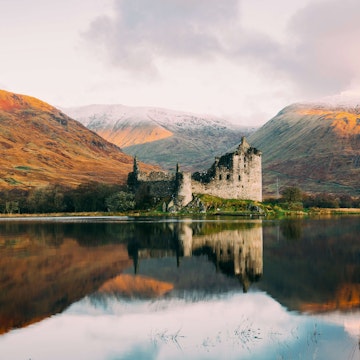
Best in travel 2024
Travel stories and news, explore our latest stories.

Tips & Advice
Jun 15, 2024 • 9 min read
Decide where to spend your time in Thailand with this guide to the best places to visit for beaches, wilderness, history, culture and vibrant cities.

Jun 15, 2024 • 6 min read
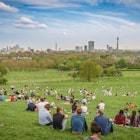
Jun 15, 2024 • 17 min read

Jun 14, 2024 • 6 min read

Jun 14, 2024 • 7 min read

Jun 14, 2024 • 21 min read

Jun 14, 2024 • 9 min read

Jun 14, 2024 • 8 min read

Jun 14, 2024 • 4 min read

shop our books
Our guidebooks & travel books
Whether you’re interested in traveling to a new city, going on a cruise, or cooking a new dish — we’re committed to inspiring you to experience travel in a whole new way. Lonely Planet’s collection of 825+ travel and guidebooks is sure to inspire the traveler within.
#lonelyplanet
Follow lonely planet:.
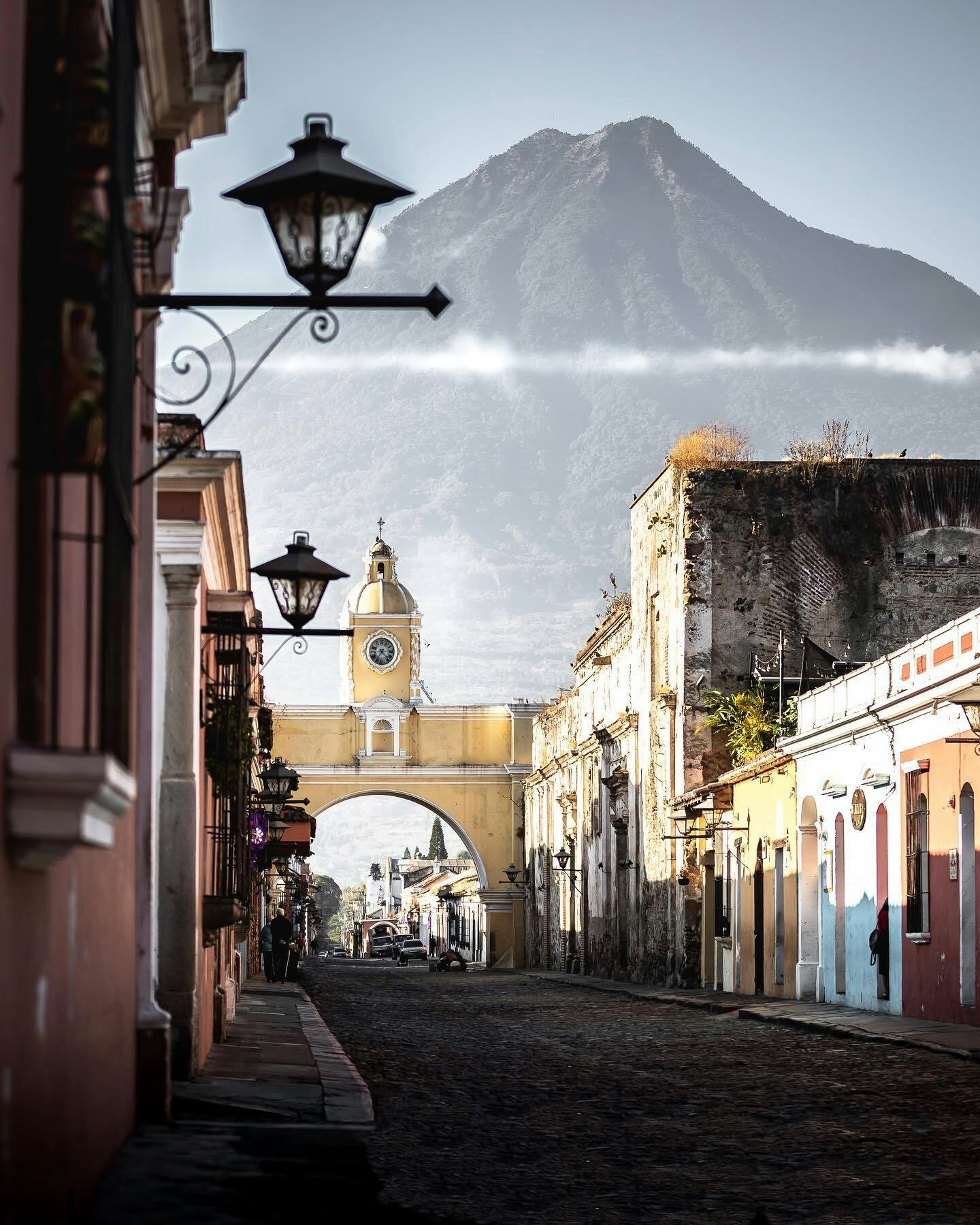

As Sri Lanka’s first digital tourism company, we are committed to launching novel products and services that drastically enhance the experience of travellers. From platforms to easily discover the best Sri Lankan tours and accommodation options, to an interface to conveniently toggle between veteran travel service providers, our solutions are designed for the current generation of independent travellers.

Explore Sri Lanka with our driver guide
Plan a holiday in Sri Lanka on your own terms, within your budget, and with someone who speaks your language. Checkout our Driver Guide platform to simplify your travel.
Enhance your digital presence
We are digital growth specialists passionate about uncovering new digital marketing opportunities for ambitious brands seeking to push boundaries and drive meaningful impact. Hire us increase the visibility of your business.

Sri Lanka Driver Guide.
Our latest blog, sign up for new updates from us., newsletter sign-up.

- Digital Marketing Services
- Sri Lanka Driver Guide
Quick Links

- Travel Service Providers
- Travel Influencers
To read this content please select one of the options below:
Please note you do not have access to teaching notes, digital tourism experience for tourist site revisit: an empirical view from ghana.
Journal of Hospitality and Tourism Insights
ISSN : 2514-9792
Article publication date: 28 April 2022
Issue publication date: 6 April 2023
Digital tourism has drawn the attention of researchers around the globe. This study aims to assess the digital tourism experience for tourist site revisit from an emerging market perspective.
Design/methodology/approach
Anchored on the social cognitive theory, the study employed a quantitative method, using the convenience sampling to select 328 participants who responded to tourism and technology sharing items through an online questionnaire. The study's hypotheses were tested utilizing structural equation modelling.
The results suggest a significant influence of technology-based service innovativeness on service value, tourist site revisits and experience sharing through technology. Further, the findings also revealed the significant influence of service value on tourist site revisit and experience-sharing through technology.
Research limitations/implications
This study was conducted with only clients or tourists, and this limits generalization of the study's findings.
Practical implications
The study offers the understanding of how tourist site operators and all stakeholders have to deploy new ways of technology-based service innovation to get maximum return on their investment in the hospitality industry.
Originality/value
The outcome of this research advanced the linkage between technology and tourism in context, which is important to policymakers and practitioners in the sector.
- Service innovativeness
- Service value
- Experience sharing
- Site revisit
- Digital tourism

Acknowledgements
The study was fully funded by the four authors, Alexander Preko, Department of Marketing, University of Professional Studies, Accra, Ghana; George Kofi Amoako, Department of Marketing, Ghana Communication Technology University, Accra Ghana; Robert Kwame Dzogbenuku, Department of Marketing, Central University, Ghana, Accra, Ghana; and John Kosiba, Department of Marketing, University of Professional Studies, Accra, Ghana.
Preko, A. , Amoako, G.K. , Dzogbenuku, R.K. and Kosiba, J. (2023), "Digital tourism experience for tourist site revisit: an empirical view from Ghana", Journal of Hospitality and Tourism Insights , Vol. 6 No. 2, pp. 779-796. https://doi.org/10.1108/JHTI-10-2021-0294
Emerald Publishing Limited
Copyright © 2022, Emerald Publishing Limited
Related articles
We’re listening — tell us what you think, something didn’t work….
Report bugs here
All feedback is valuable
Please share your general feedback
Join us on our journey
Platform update page.
Visit emeraldpublishing.com/platformupdate to discover the latest news and updates
Questions & More Information
Answers to the most commonly asked questions here
- Travel Resources
- Destination Inspiration
- Tips & Advice
- Did You Know?
- Conservation

Exploring the Digital Frontier: Effective Marketing Strategies for the Tourism Industry
- June 14, 2024
In today’s fast-paced world, where decisions are made with the click of a button, the tourism sector requires innovative and impactful digital marketing strategies to captivate and engage potential travelers. From breathtaking visuals to interactive content, let’s delve into how you can elevate your game in marketing for tourism .
Understanding Today’s Traveler
The first step in crafting an effective marketing strategy is to understand who your travelers are and what they seek. Today’s travelers are looking for authentic, memorable experiences. They prefer personalized travel packages and value convenience and speed in booking. Recognizing these preferences is key to tailoring your marketing efforts.
Building a Captivating Online Presence
For any travel business, an appealing and functional online presence is critical. This presence starts with your website. Specialized travel agency websites not only need to look good but also offer seamless user experiences. They should provide easy navigation, detailed information, and secure booking options to convert visits into bookings efficiently.
Utilizing SEO to Reach Global Audiences
SEO is a powerful tool to enhance visibility in a crowded market. Optimizing your content to appear in top search results can significantly increase your website’s visibility, attracting more potential travelers to your site. Use targeted keywords related to popular destinations, travel tips, and seasonal offers to capture the interest of those planning their next vacation.
Leveraging Social Media for Engagement
Social media platforms are perfect for storytelling. Use vivid images, engaging videos, and interactive content to share stories of destinations, showcase customer testimonials, and highlight unique experiences. Platforms like Instagram, Facebook, and TikTok allow you to reach a diverse audience and engage with them in real-time, building relationships and encouraging them to explore more.
Capitalizing on Video Marketing
Video marketing has emerged as a powerful tool in the travel industry, capable of capturing the essence of destinations in a way that static images and text cannot. By creating immersive and captivating videos, you can showcase the unique experiences your travel packages offer. These videos can be used effectively on your website, social media platforms, and even in email campaigns. They allow potential travelers to visualize themselves in the destination, enhancing their desire to experience it firsthand. This visual engagement not only boosts interest but can significantly increase booking rates as viewers are transformed into motivated travelers.
Effective Email Marketing Campaigns
Email marketing remains one of the most effective strategies for direct communication. Segment your audience to send personalized travel suggestions, special deals, and updates about new destinations. Well-crafted emails can remind your customers of the wonderful experiences awaiting them, prompting them to book their next trip.
Creating Content That Inspires
Content marketing can be a game changer in the tourism industry. Create content that inspires and informs potential travelers. Blogs about “Top 10 destinations” or “Must-have experiences in [Destination]” can generate excitement and prompt bookings. Include high-quality photos and videos to make your content more appealing and shareable.
Harnessing the Power of Reviews and Testimonials
In the travel industry, trust is paramount. Showcasing positive reviews and testimonials from past travelers can significantly boost your credibility. Encourage your customers to share their experiences on your website and social media. Positive stories and word-of-mouth recommendations can lead to increased bookings and enhanced brand loyalty.
Integrating Advanced Booking Technologies
Incorporate the latest in booking technology to make it easier for travelers to secure their vacations. Features like real-time availability checks, virtual tours of accommodations, and mobile-friendly booking processes can enhance the user experience and increase conversion rates.
The tourism industry’s landscape is constantly evolving, driven by technological advancements and changing consumer expectations. By embracing these digital marketing strategies, you can ensure that your travel business not only survives but thrives. Engaging websites, strategic SEO, interactive social media campaigns, and personalized email outreach are all part of the toolkit to attract today’s tech-savvy travelers. Get ready to take your travel business to new heights with these cutting-edge marketing techniques.
Now, let’s look at some FAQs to help clarify any remaining questions:
FAQ 1: How important is SEO for tourism marketing? SEO is crucial as it helps potential travelers find your services when they search for travel options online, increasing your visibility and booking chances.
FAQ 2: What benefits does a well-designed travel website provide? A well-designed website not only attracts visitors but also provides them with the necessary tools and information to book their travels, enhancing user experience and satisfaction.
FAQ 3: Can social media really influence travel decisions? Absolutely! Social media has the power to influence travel decisions by showcasing compelling content and real experiences from other travelers.
FAQ 4: How effective is email marketing in the travel industry? Email marketing is highly effective in keeping past and potential travelers engaged with personalized offers and updates, increasing the likelihood of repeat bookings.
FAQ 5: Why is it important to feature customer reviews on travel platforms? Customer reviews build trust and provide social proof, which can influence other potential customers’ decisions in favor of booking with your service.
Photo by allPhoto Bangkok on Unsplash
Related Topics
- tourism marketing strategies
- travel marketing plans
Journey Without Limits: Mattias Klum’s Top Gear Recommendation for Global Explorers

- Great Holiday Destinations
Anantara Dragon Seseh Bali Resort: Specific Options
You may also like.

- June 3, 2024

Simplified Summer Travel: Vacation Plans with Best Tour Operators in India
- May 29, 2024

- Planes, Trains & Automobiles: Tips & Advice
The ultimate car guide for your upcoming road trip
- May 14, 2024

5 Tips for Staying in Touch While Journeying Overseas
- April 29, 2024

5 Most Important Lessons Learned from Visiting 35 Nations
Holiday Recreation – A Guide to the Cost of Acrylic Tennis Court Surfaces
- April 18, 2024

Why You Should Visit Portugal For Your Next Family Holiday
- April 9, 2024
Input your search keywords and press Enter.
Security Alert May 17, 2024
Worldwide caution, update may 10, 2024, information for u.s. citizens in the middle east.
- Travel Advisories |
- Contact Us |
- MyTravelGov |
Find U.S. Embassies & Consulates
Travel.state.gov, congressional liaison, special issuance agency, u.s. passports, international travel, intercountry adoption, international parental child abduction, records and authentications, popular links, travel advisories, mytravelgov, stay connected, legal resources, legal information, info for u.s. law enforcement, replace or certify documents.
Get a Passport
Renew or Replace a Passport
Get My Passport Fast
Prepare to Apply
Passport Help
Legal Matters
Prepare to Apply for a Passport Homepage
Share this page:
Passport Forms
What Form Should I use?
Get Your Processing Time
Passport Fees
Passport Photos
Citizenship Evidence
Photo Identification
Where to Apply
Uploading a Digital Photo
When you renew your passport online , you will need to upload a digital photo. This process is different than renewing by mail when you staple a photo to your application.
- Before you start your application, get your passport photo taken by someone else. No selfies.
- Follow the special requirements for a digital photo and photo examples on this page.
- Learn the top reasons why we cannot accept your digital photo.
- Do not scan a printed photo or take a photo of an already printed photo.
Watch this video to learn how to upload your photo
Tips for Uploading a Digital Photo
- Select a .JPEG file from your computer or mobile device and upload it to your application.
- Make sure there is lots of space around your head and shoulders.
- An employee will review your photo after you submit your application. If the photo does not meet our requirements, we will send you a letter or email asking you send us a new photo.
- If the photo tool does not accept your photo, the tool will provide a message explaining the reason(s). Find information about why the tool did not accept your photo on this webpage.
Special Requirements for a Digital Photo
Photo examples, see photo examples.
- Resolution and Quality
- Size and Position
- Shadows and Lighting
- Pose and Expression
- Digital Changes
- Attire, Hats, and Glasses
Understanding Top Photo Error Messages
Background may not meet our requirements.
There are several reasons why you may be receiving this error message. Please make sure you upload a new photo that includes:
- A plain background with no texture, lines, or objects
- White or off-white background without shadows
- Space above and below your head including part of your torso to allow for cropping by our photo tool
Image compressed
We need you to upload a new photo that has a higher resolution, is not grainy or pixelated, and is not compressed. Compression means the file size is too small with respect to the pixel dimensions. A photo may become compressed if it is edited after it is taken. Improve the resolution of your photo by changing the settings on your camera.
When saving and emailing your photo, select the highest quality setting (large file size). Do not edit or change your photo using software or a mobile app. To avoid compressing your image, do not send the image via text message.
Expression may be unnatural
Our photo tool detected that your expression may be unnatural. Make sure your eyes are open and your mouth is closed.
Head size or position may be incorrect
We need you to upload a new photo because the size and position of your head is not acceptable for a passport. If the person taking your photo is standing too close or too far away, your head may not be the correct size.
Please make sure there is lots of space around your head and shoulders when you upload your photo. Our photo tool will crop your photo into the correct dimensions.
Image quality may be poor
This message means your photo may be blurry or out of focus. Your photo may have a low resolution and file size, it may be grainy and pixelated, or it may lack clarity. Please upload a new photo with a larger file size and resolution.
Watch this video to see an example:
Lighting or exposure may be incorrect
There are several reasons why you may be receiving this error message. Please make sure you upload a new photo that is not overexposed or underexposed.
Underexposure happens when a photo appears to be darker than neutral exposure. Overexposure happens when a photo is too bright or appears washed out.
Internal server error
We are experiencing a temporary, technical issue with our online renewal application. Please log out of your application, clear the cache and cookies in your web browser, and try again in several hours.
External Link
You are about to leave travel.state.gov for an external website that is not maintained by the U.S. Department of State.
Links to external websites are provided as a convenience and should not be construed as an endorsement by the U.S. Department of State of the views or products contained therein. If you wish to remain on travel.state.gov, click the "cancel" message.
You are about to visit:
Travelers are going to extreme lengths to avoid scrolling and notification anxiety on vacation
- Adults are increasingly attached to their devices and are almost constantly online, study shows.
- Many are turning to the tourism industry to force themselves to disconnect and relax on vacation.
- Writer Sarah Wood breaks down the logistics and drivers of phone-free travel.

Six years ago, I spent ten days without my phone at a meditation retreat in Thailand. The experience was so refreshing that I felt like I had a new brain. I vowed to use my phone less, but unfortunately, the habit didn't stick. My phone usage has skyrocketed in the years since, sometimes clocking ten hours of screen time.
Planning a wedding and buying an apartment in the same month brought my digital dependence to new heights. On a recent trip to a Scottish cabin advertised as somewhere to "stay where the world can't find you," I tried to go tech-free and reset. With an itinerary of fly fishing and hiking, I thought it would be easy to unplug.
I was wrong.
The days were fine, but right before bed, I couldn't stop myself from scrolling through my email and notifications. I felt disheartened by my failed attempt to unplug.
62% of adults aged 18 to 29 say they're constantly online
Being unable to put your phone down, even on vacation, is becoming increasingly common. In 2024, a study by the Pew Research Center surveyed nearly 6,000 US adults on their tech usage . 62% of participants between 18 and 29 said they are almost constantly online.
In response to this constant online-ness, people also want to disconnect completely, especially while on vacation. Global search interest for "digital detox retreat" has increased by 50% in the past year. No longer beholden to emails and Slacks, vacations are the perfect time to shut down devices, and people are turning to the tourism industry to help them.
People are turning to the tourism industry to help them unplug
Property managers and tour operators are offering unplugged trips and tech-free destinations to meet this demand.
Unplugged is a cabin company in the UK offering "digital detox" long weekends in nature. Guests can use their phones to navigate to their Unplugged cabins, but once they arrive, they're expected to lock their phones in a box for their trip. The cabins have a paper map, a Polaroid camera for travelers, and a retro Nokia phone for emergencies.
"The key we found is to give people all the things that they might need their phone for," said Hector Hughes, CEO of Unplugged. The company launched in 2020 and has 23 cabins and a 94% occupancy rate since July last year, marking a 209% increase in bookings over the previous 12 months, according to Hughes.
Group travel operator For The Love of Travel (FTLO) ran its first phone-free trip this February and a second in April, and five more are listed on its site through 2025. For FTLO, the trips become "phone-free" once you arrive at the first hotel and meet your tour operator, who manages the logistics for the rest of the journey.
FTLO CEO Tara Cappel said guests are asked to leave their phones in their hotel safe or at the bottom of their bags when the group is together. "We're also obviously not controlling whether people are going back to the rooms and getting on their phones. It's an honor policy."
Related stories
According to Cappel, their first two trips were filled, and all guests expressed interest in another "phone-free" trip.
She acknowledged that tech-free travel hasn't become completely mainstream, "People are still a little intimidated by the idea."
Hughes told BI, "Many people haven't switched their phones off for years," Hughes added. "People experience phantom buzzes and find themselves searching for their phone instinctively before remembering it's locked in a box."
The reasons for going phone-free when traveling vary
One popular motivation is for couples to spend quality time with their partners. Hughes told BI that 80% of their guests are couples.
Elena Mnayarji, an MBA student at Berkeley, went on a phone-free honeymoon with her husband in Mallorca last summer. She said she didn't plan it but wanted to disconnect after a busy wedding. "By the time we got to Mallorca, I was exhausted and really needed to shut my brain off."
When she arrived in Mallorca, she turned her phone off and put it in a drawer at their hotel for their entire trip. Not checking her phone was difficult, but Elena was happy that she committed to it.
"For the first couple hours, it was a little tough," she said. "But I felt a lot less anxious." She also said her husband felt more connected to her.
Phone-free travel can also help with burnout
Last summer, nonprofit strategist Izzy Doonan did a tech-free week-long trip in the Cascades with her partner and another couple. They wouldn't have cell service, so they embraced the opportunity to get offline. "As the trip got closer, we all realized how burnt out we were. It was fitting to take a trip without our phones and really unplug," Doonan said.
As soon as they drove into the park and lost service, the group put their phones in the glove compartment of their car and didn't use them until they left the park.
"A lot of the nerves were from our parents because they wouldn't be able to contact us," said Doonan, who wasn't personally concerned. "I felt quite safe in the confines of a national park," she said, adding they had a car and other campers were around. "I would 1,000% do it again."
Logistics of traveling phone-free
Traveling phone-free does pose some logistical issues. "One concern that was brought up was that people's families back home were worried," said Cappel.
FTLO provides the trip leaders' phone numbers and full itineraries with contact information to travelers to share with whoever might need it. Mnayarji echoed, "I would recommend people tell their family if they're going to go phone-free. My mom was freaking out, so I had to text her from my husband's phone."
For both FTLO and Unplugged, you can use your phone to help you navigate to the destination and then are asked to put your phone away. Traveling domestically, bringing an emergency prepaid phone, or traveling with a tour operator in charge of the logistics are ways to make your tech-free trip as safe as possible.
Cappel said, "Committing to a multi-day phone-free trip is a lot, but if people can start with an afternoon and leave their phone in their hotel for the day, it's a great way to start and realize it's really doable."
Watch: Marriott International's Tina Edmundson tells Insider that the travel mindset has changed since the pandemic
- Main content
You are using an outdated browser. Please upgrade your browser to improve your experience.
Restaurants
- Best-of Guides
- MICHELIN Guide Ceremony
- My Favorites
- Subscribe to newsletter
- Booking partnership with OpenTable
- Booking partnership with Resy
- USA - English - USD

Discover and book hotels and restaurants selected by the MICHELIN Guide
Chicago, USA
©Neil John Burger/Indienne
Latest News
New Additions to The MICHELIN Guide New York June 2024
From Long Island City to Chinatown, there are 8 delicious new additions in the Big Apple.

New Additions to The MICHELIN Guide Chicago 2024
6 new restaurants causing a scene in Chi Town.

New Additions to MICHELIN Guide Washington, D.C. 2024
5 new additions in the nation's capital that caught our Inspectors' attention.

9 MICHELIN Chefs share their favorite salad dressing recipes
Toss up your summer salads with a new vinaigrette or homemade Green Goddess.

11 Stunning Wine Cellars at MICHELIN Restaurants and Hotels
Subterranean, and spectacular, around the world.

Pangina Heals’ Bangkok: Bars, Fab Shops, Rendezvous Spots, Sexy Nights Out, and More
The MICHELIN Guide invites you to discover Bangkok through the dazzling perspective of the fabulous Pangina Heals, the international Thai drag superstar who took RuPaul's Drag Race by storm.
The MICHELIN Guide Key

The First MICHELIN Key Hotels: All the Keys in the United States
The MICHELIN Guide announces top honors for U.S. hotels in 2024.

In Photos: Every Three Key Hotel in New York City
The ins and outs of the most outstanding hotels in the city.

A Brief Guide to All the Key Hotels in Washington D.C.
Seven hotels earned at least one MICHELIN Key in Washington D.C.

Key Street: Michigan Ave. Leads to 7 Key Hotels in Chicago
A brief guide to all the MICHELIN Key hotels in Chicago.

Inside the Top Suite of 3-Key Aman New York
The Aman Suite — among the most impressive suites in New York — brings the city to you.
SingleThread: The 5-Room Inn with Three Keys and Three Stars
Revered for its Three MICHELIN Star restaurant and biodynamic farm, the SingleThread Inn earns Three Keys for its tiny, food-driven hotel.

Hollywood Glamour at the First Key Hotels in Los Angeles
A brief guide to all the Key hotels in Los Angeles, Santa Monica, and Beverly Hills.

Inside the Top Suite of the Only Three Key Hotel in Big Sur
The so-called "Cliff House" has the views you're looking for.
New York by The MICHELIN Guide

Expert insights on where to dine, stay and explore.

Ronny Chieng's New York - The Perfect Slice and Haute Sushi
The actor and comedian breaks down his West Village staples.

7 Iconic New York Dishes + Where to Get Them
From bagels to burgers, and so much more.
The Best MICHELIN Guide Bib Gourmand Spots For Under $50 in Uptown New York City
Check out a few of our favorite Bib Gourmands on both the east and west sides of Uptown that won't break the bank.

Mikhail Baryshnikov's New York is an Ode to the City's Artists
The icon celebrates and champions the boldfaced names in the city from meat purveyors to Three Star chefs.

The MICHELIN Guide's Take on Food Trends in New York City
From haute (and hot) Indian cuisine to views with a side of deliciousness, these are the culinary moments sweeping Manhattan.
Iconic New York Restaurants
Some of the city’s most storied places are intimate neighborhood spots.
Paris by The MICHELIN Guide

New Starred Restaurants in Paris
Discover the French capital like a true Parisian with the latest 2024 Michelin Star restaurants.
Why the Inspectors Gave Le Gabriel Three Stars
The MICHELIN Guide Inspectors recount a year of visits to Le Gabriel. Led by Chef Jérôme Banctel, it becomes one of 2 new Three Michelin Star restaurants in France.

The MICHELIN Star Restaurants Along the Paris Metro’s Line 1
Mind the closing doors!

Where to Stay and Eat in Paris by neighborhood
Our hotel and restaurant recommendations from the MICHELIN Guide for a successful stay.

5 Expert Tips to Know Before You Travel to Paris
Here are a few essential recommendations to help you prepare for (and enjoy) your stay in Paris

The MICHELIN Guide’s Best Spots Near Paris Landmarks
Our pick of eateries on the doorstep of some of the capital’s most well-known landmarks.

5 Parisian Hotels that Double as Culinary Experiences
Come for the food, stay for the night.

A MICHELIN Guide Inspector puts Paris's Rum Babas to the Test
A MICHELIN Guide Inspector finds some of the best rum babas in Paris.
About The MICHELIN Guide
What is a MICHELIN Star?
All your questions answered by a MICHELIN Guide Inspector.
What Is The MICHELIN Bib Gourmand Award?
Discover more about our award for good quality, good value cooking.

The MICHELIN Key
Presenting the MICHELIN Key: a new award for the world's most exceptional hotels.

What is a MICHELIN Green Star ?
Annual award which highlights restaurants at the forefront of the industry when it comes to their sustainable practices.

Why MICHELIN Guide Is Where You Should Book Hotels
The MICHELIN Guide is more than restaurants. It's also the best place to book the world's best hotels. Here are five reasons why.

Everything You Want to Know About the MICHELIN Guide Inspectors
Here we uncover the mysteries of this profession that arouses fascination and intrigue…

8 Surprising Facts About the Michelin Man
There's more to Bibendum—MICHELIN’s adorably puffy white mascot—than you may know.

The MICHELIN Guide App Is a Milestone
The free MICHELIN Guide app puts the world’s best restaurants and hotels right in your pocket — and lets you book them.
Inspiration: Best Of Guides

The Best Apple-Focused Desserts in New York City

The Best Korean Restaurants in New York City

The Best MICHELIN Guide Restaurants for Spicy Food in New York City

The Best MICHELIN Guide Spots for Chinese Food in NYC

The Best MICHELIN Guide Restaurants for Cocktails in New York City

Best MICHELIN Guide Restaurants for Families and Large Groups in New York City

Best MICHELIN Guide Restaurants to See and Be Seen in New York City

Best MICHELIN Guide Restaurants to Make Your Friends Jealous in New York City
Newly added hotels.

Castell Son Claret

Capo La Gala Hotel & Wellness

Acro Suites

La Villa Hotel

Village by BOA

Château de Belet
Newly added restaurants.
Moon Rabbit
Four Twenty Five
Taqueria Chingón
Foxface Natural
John's Food and Wine

In the Kitchen with Simon Kim of Cote
Go inside the One MICHELIN Star restaurant and meet the faces behind the buzzy boîte.

The Best Hotels in Brooklyn Actually Feel Like Brooklyn
Each MICHELIN Key-winning hotel in Brooklyn reflects the very best of the borough.

3 Days in London
The Michelin Inspectors' top tips on where to eat, drink, stay and have fun in one of the world's busiest and most exciting cities

What does a $150 Melon Taste Like?
Luxurious (and high-priced) Japanese fruit is trending in MICHELIN Guide restaurants.

Lithuania's First MICHELIN Guide Is Unveiled!
Discover the first restaurants to be added to the selection, from Michelin Stars and great value Bib Gourmands to sustainable Green Stars

Where Chef Stefano Secchi Goes in New York
The chef behind One MICHELIN Star Rezdôra shares his favorite city spots

2 Days in Bangkok for Street Food Lovers
All the best places to eat in Bangkok without the pomp and circumstance of high-end dining. Plus the best spots to base yourself for an unforgettable street food adventure.

MICHELIN Guide Selections

About the MICHELIN Guide
Inside our history and the lives of our inspectors

Our partnerships with established brands

Basil Hayden

Capital One

Wine Access

Use the app to find the best restaurants and hotels everywhere
Be the first to get news and update about the michelin guide.
MICHELIN Guide selections
Michelin guide, the michelin group.
- Terms of Use
- Privacy Policy
- Legal Notice
Display settings
Customize your experience by easily adjusting display settings for territory, and currency to suit your preferences!
Member privileges
The Plus program provides upgrades and amenities at participating hotels. For this hotel, Plus members will receive:
Non-members can add the privileges at checkout through our 30 day free trial, cancellable at anytime.
- MyServiceNSW
- Manage account
- Logout of MyServiceNSW
Gamescom 2024 Market Travel Program
Key information.
- Status: Open
- Grant amount: Up to $5,000
- Application opened: 14 June 2024
- Application closes: 27 June 2024, 5:00 pm
Program objective
The objectives of the program are to:
- Support travel, accommodation and registration for experienced NSW practitioners to attend Gamescom 2024
- Ensure digital games practitioners are given access to opportunities to benefit their own careers and reinvest back into the NSW digital games industry
- Support connections that will shape the future of NSW’s creative landscape and strengthen NSW’s position in the global market.
This program is administered by Screen NSW.
Eligibility
Who can apply.
Please see the full guidelines on the Screen NSW website.
Applicants must:
- Be a games industry practitioner with commercial game(s) to market or business development interests in a specific commercial game(s) at Gamescom 2024
- Be able to attend the entire conference from 21- 25 August 2024
- If a company, the applicant must be incorporated in Australia and registered in NSW, have their central management and control in NSW and carry out business in NSW
- If an individual, the applicant must be a NSW resident (i.e., lived and operated in NSW for at least six months immediately before the application)
- Have an Australian Business Number (ABN)
- Own or control the necessary rights to any games projects taken to the conference or have the written permission of the rights holder to represent them at business meetings
- Have game(s) proposed to be marketed at Gamescom that are intended for public release.
Types of projects funded under this grant
Not applicable.
What your application needs to include
Prepare your application with this checklist.
You must submit all core materials listed on the application form.
Applicant and project details including:
- Profile of the company or individual demonstrating their level of expertise
- List and summary of any game project(s) including development history that will be represented at Gamescom.
Information regarding fulfilment of market travel objectives including:
- Statement of intended outcomes and objectives for travel to Gamescom 2024
- Applicant’s strategy for achieving these objectives
- How travel and participation to Gamescom will benefit the applicant’s project(s) and/or for service provider’s projects they will be representing.
Market Travel plan including:
- A list of confirmed and proposed meetings and/or networking opportunities
- Letter of interest from a market partner If applicable
- Examples of media coverage if applicable
- Confirmation of showcase opportunity if applicable
- Full itemised travel budget including any co-contribution from the applicants or third-parties
- CV/resume of people travelling.
Address the eligibility criteria
Each applicant, as part of an application response, must confirm that they meet the eligibility criteria.
Applicants that do not address the eligibility criteria in full may be excluded from the application process at the department's discretion.
Address the assessment criteria
Start the application.
Screen NSW uses the SmartyGrants platform for submission of all applications. Applications made using any other format will not be accepted. Please note you will receive a SmartyGrants acknowledgement of submission.
Note: If you are a new applicant to SmartyGrants, you will need to register and create a password. If you are already registered, you can log in with your existing username and password.
After the application is submitted
Successful applications will be decided by: Head of Screen NSW
Applications will be initially reviewed by Screen NSW staff to ensure they meet eligibility requirements, and all application materials are acceptable.
After eligibility is confirmed, the application will be evaluated by an assessment panel including a minimum of one Screen NSW staff member and one external industry expert.
Support and contact
Screen NSW PDV & Digital Games team ([email protected])
An official website of the United States government
Here’s how you know
Official websites use .gov A .gov website belongs to an official government organization in the United States.
Secure .gov websites use HTTPS A lock ( Lock Locked padlock icon ) or https:// means you’ve safely connected to the .gov website. Share sensitive information only on official, secure websites.

Family-based immigrant visas and sponsoring a relative
If you are a U.S. citizen or permanent resident, you may be able to sponsor a family member for a Permanent Resident Card (Green Card). Learn about the process and who is eligible.
Categories of people eligible for family immigrant visas
Applying for a family-based immigrant visa is the first step in the process for the person you are sponsoring to become a permanent resident. There are two categories of this type of visa:
Immediate relative visas
These visas are for close relatives of U.S. citizens, such as spouses, unmarried children under 21, or parents. An unlimited number of visas are available for this visa category. These visas include:
- IR1 and CR1 for spouses
- IR2 for children
- IR5 for parents
Family preference visas
A limited number of family preference visas are set aside each year for:
- F1 visas unmarried children who are 21 years of age or older
- F3 visas for married children
- F4 visas for siblings
- F2A visas for spouses and unmarried children under age 21
- F2B visas for unmarried children who are 21 years of age or older
Check the U.S. Department of State’s chart of immigrant visa categories to learn more about each category of immediate relative and family sponsored visas .
How to apply for permanent residency for a family member
To sponsor your family member, submit a United States Citizenship and Immigration Services (USCIS) Form I-130 . Each person you sponsor needs a separate Form I-130. You can submit the form online or by mail.
The process for your relative to immigrate to the U.S. requires that both you, as the sponsor, and your relative, as the visa applicant, complete the necessary steps.
The process is different depending on whether your family member is already in the U.S. or abroad.
- If your family member is in the U.S. - Learn about Adjustment of Status
- If your family member is outside the U.S. - Learn the steps for Consular Processing
Submitting Form I-130 is the first step of the immigration visa process. Learn what other steps are involved , including:
- National Visa Center (NVC) processing
- Fee payments
- Required supporting documents
- Interview preparation
LAST UPDATED: December 8, 2023
Have a question?
Ask a real person any government-related question for free. They will get you the answer or let you know where to find it.

IMAGES
VIDEO
COMMENTS
8. Peru. The website's Peru 360 page. As much as Peru is receiving growing interest as a travel destination in recent years, the country also seems to be extremely conscious about communicating ...
The future of travel is technology-based, so tourism jobs will require both technical and advanced soft skills used to effectively implement and manage smart initiatives. The greatest societal impact of digital transformation in tourism may be the effect on the sector's workforce, which directly and indirectly represents 1 in every 10 jobs ...
The digitalization of the travel industry is entering a whole new phase. After a few U.S. and European companies kicked off the online travel market in the mid-1990s, mobile travel apps shook up ...
In tourism, digital-physical convergence is demonstrated by augmented reality, wearable technologies, and the Internet-of-Things to generate new hybrid products, services and experiences. Examples include e-bikes, e-scooters and e-cars which can be accessed anywhere, anytime with a mobile app, reducing the need for a front office presence and ...
Our team here at Tourism Marketing Agency are always looking for ways to help educate and inform the tours and activity sector through meaningful content. On this page you can download all the reports and documents we have released, for free. The Tourism Marketing Agency is a specialist digital marketing agency serving tours, activities ...
AR, VR and MR can enable a seamless, uninterrupted interactive experience for viewers from their own private space. The design principles will create a frictionless digital user experience and construct a positive perception of a tourist destination. The COVID-19 pandemic could set the tourism sector back by $1 trillionImage: Statista.
9 Jul 2021. The World Tourism Organization (UNWTO) continues to energize the restart of tourism based on sustainability and innovation. An agreement with MUST Travel & Tech places a digital tool at the service of tourism, allowing users to share their experiences to promote the reactivation of the sector with a view to sustainability.
Digital technologies and platforms are disrupting the way the tourism sector operates from end to end. Digital platforms offer global access to consumers and allow service providers to enhance the development of the tourism sector and its competitive standards. Many low-income economies can potentially benefit from this digital transformation ...
From the perspective of Cuomo et al. (2020), this drives the need to deepen our knowledge about the contribution of the usage of digital technologies beyond a focus on tourism services.Furthermore, these authors stress the need to carry out scientific research able to illuminate how tourism is evolving concerning these technological advances, which open up spaces and opportunities for studies ...
Also, digital advanced technologies, such as MR technology adopted by museums, AR technology adopted by destinations, and smart tourism products and tourism ecological reservation systems have ...
The current pandemic is accelerating the wide-spreading popularity of digital tourism. Given that technology innovation has broadened the horizon of tourist experiences to the realm of virtual environments, this study aims to (re)conceptualize travel experience and develop a theoretical framework to examine media technology effects on virtual travel experience, destination image, and tourists ...
Virtual Yosemite is absolutely stunning and one of the best, replete with audio. Both Yellowstone National Park and Mount Rushmore offer virtual tours as well. Google has similar 360 degree audio-visual tours of five select national parks, including Kenai Fjords, Hawai'i Volcanos, Carlsbad Caverns, Bryce Canyon, and Dry Tortugas, as well as 31 ...
Digital technologies have radically changed the way people work, do business, live, and travel. Through the internet, individuals can search for information, choose a destination or create and post content that can influence the destination image; leading to a whole new digital tourism ecosystem that is sustainable and responsible (Almeida-Santana et al., 2020; Camilleri, 2018).
The World Travel Guide (WTG) is the flagship digital consumer brand within the Columbus Travel Media portfolio. A comprehensive guide to the world's best travel destinations, its print heritage stretches back more than 30 years, with the online portal reaching its 20-year anniversary in 2019. Available in English, German and Spanish versions ...
Digital Tourism Marketing by definition is the set of all those online activities aimed at promoting an accommodation facility, a hotel, a holiday resort, or any other service/product related to tourism, through the use of digital tools and channels such as social media, email marketing, or a website. Not a single action, therefore, but a ...
The tourism industry is a very heterogeneous sector including many stakeholders serving diverse customer segments. Large tourism firms with substantial means (e.g., online travel agencies, airlines, national tourism boards, international hotel chains) are likely to have different digital marketing potentials compared to the majority of small and medium-sized tourism enterprises (SMTEs) with ...
Digital Marketing for Tourism: 4 Undeniable Advantages. Become a leader in tourism with internet marketing. Get more website traffic, loyal customers, and higher revenues. We can help develop your online strategy. insights from 38,900+ hours of hospitality marketing experience. Where do travelers go when they want ideas for their next adventure ...
Discover digital travel stories, reviews, tips, news, guides, podcasts, and videos from the experts at AFAR Media, and subscribe to the newsletter or print magazine. Destinations. ... immerse yourself in a new digital art museum, and take a meditative walk in the heart of a forest. June 11, 2024 04:04 PM · Yukari Sakamoto.
1.3. Genesis of National Digital Tourism Mission 5 1.4. Digitalization and Tourism Sector 5 1.5. Inter-Ministerial Task Force for National Digital Tourism Mission 6 1.6. Constitution of Working Group 6 1.7. NDTM Report 6 Chapter 2 Tourism Ecosystem and Stakeholders 05 2.1. Tourism - A complex ecosystem 7 2.2. Role of Ministry of Tourism 7 2.3.
This study explore the effectiveness of official tourism websites in West Java province, Indonesia. Content. analysis method, consist of three dimension: Aesthetic (destination visualisation ...
Our guidebooks & travel books. Whether you're interested in traveling to a new city, going on a cruise, or cooking a new dish — we're committed to inspiring you to experience travel in a whole new way. Lonely Planet's collection of 825+ travel and guidebooks is sure to inspire the traveler within. View All Books.
Home - Digital Tourism. As Sri Lanka's first digital tourism company, we are committed to launching novel products and services that drastically enhance the experience of travellers. From platforms to easily discover the best Sri Lankan tours and accommodation options, to an interface to conveniently toggle between veteran travel service ...
Digital tourism has drawn the attention of researchers around the globe. This study aims to assess the digital tourism experience for tourist site revisit from an emerging market perspective.,Anchored on the social cognitive theory, the study employed a quantitative method, using the convenience sampling to select 328 participants who responded ...
The first step in crafting an effective marketing strategy is to understand who your travelers are and what they seek. Today's travelers are looking for authentic, memorable experiences. They prefer personalized travel packages and value convenience and speed in booking. Recognizing these preferences is key to tailoring your marketing efforts.
Special Requirements for a Digital Photo. Make sure the image has large dimensions. Be sure there is lots of space around your head and shoulders to allow room for cropping by our photo tool. The dimensions can be rectangular. Your photo must be at least 600 x 600 pixels. Use a color photo. You cannot upload a photo in black and white.
Deciding the career for you is more than simply "landing the job.". It's finding a place where you know you make a difference each day, where you can be your most authentic self. It's choosing your impact. Industry insights and audit, consulting, financial advisory, risk management, and tax services from Deloitte's global network of ...
62% of adults aged 18 to 29 say they're constantly online. Being unable to put your phone down, even on vacation, is becoming increasingly common. In 2024, a study by the Pew Research Center ...
The MICHELIN Guide App Is a Milestone. The free MICHELIN Guide app puts the world's best restaurants and hotels right in your pocket — and lets you book them. Download.
The objectives of the program are to: Support travel, accommodation and registration for experienced NSW practitioners to attend Gamescom 2024. Ensure digital games practitioners are given access to opportunities to benefit their own careers and reinvest back into the NSW digital games industry. Support connections that will shape the future of ...
The process for your relative to immigrate to the U.S. requires that both you, as the sponsor, and your relative, as the visa applicant, complete the necessary steps. The process is different depending on whether your family member is already in the U.S. or abroad. Submitting Form I-130 is the first step of the immigration visa process.